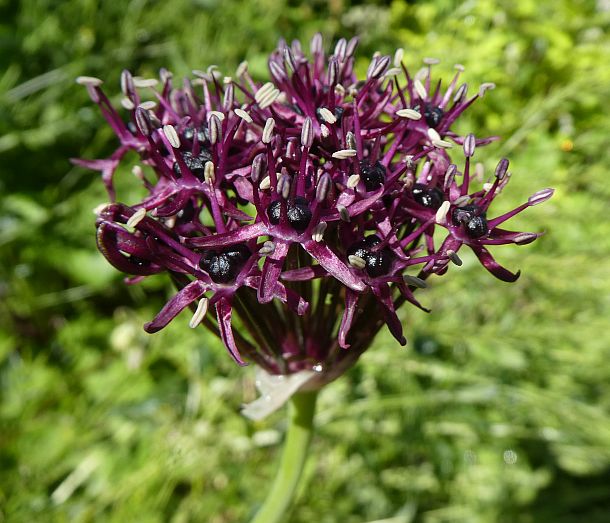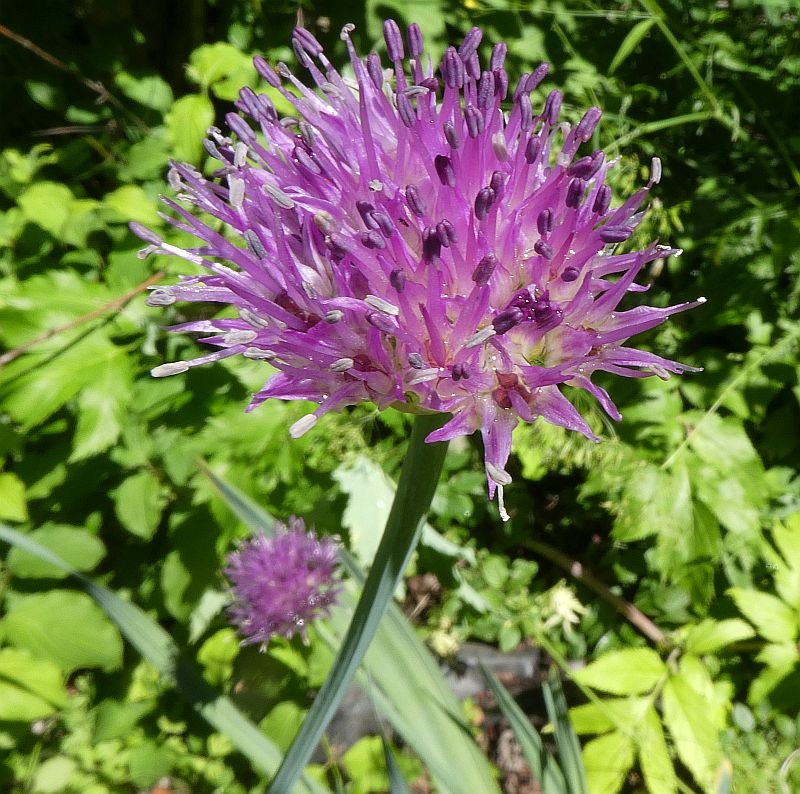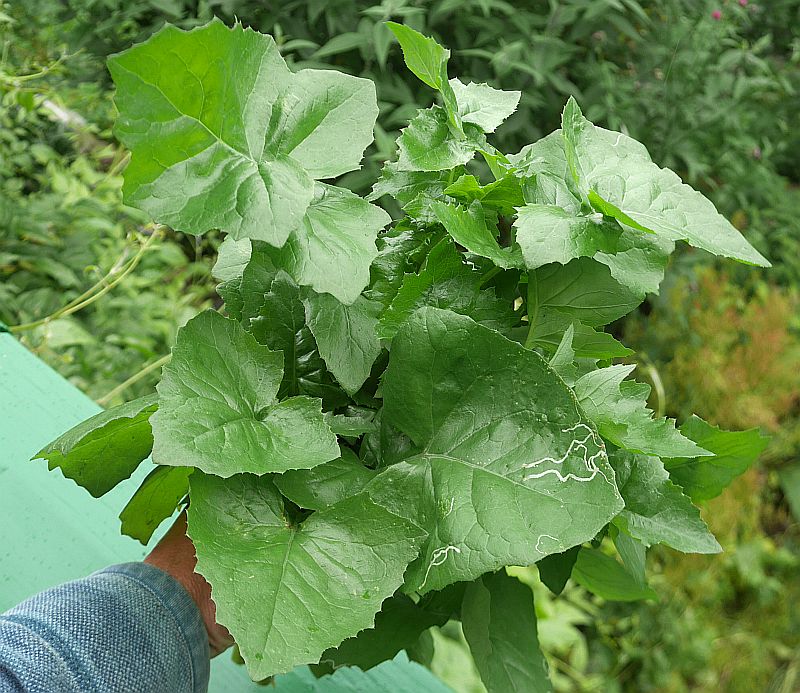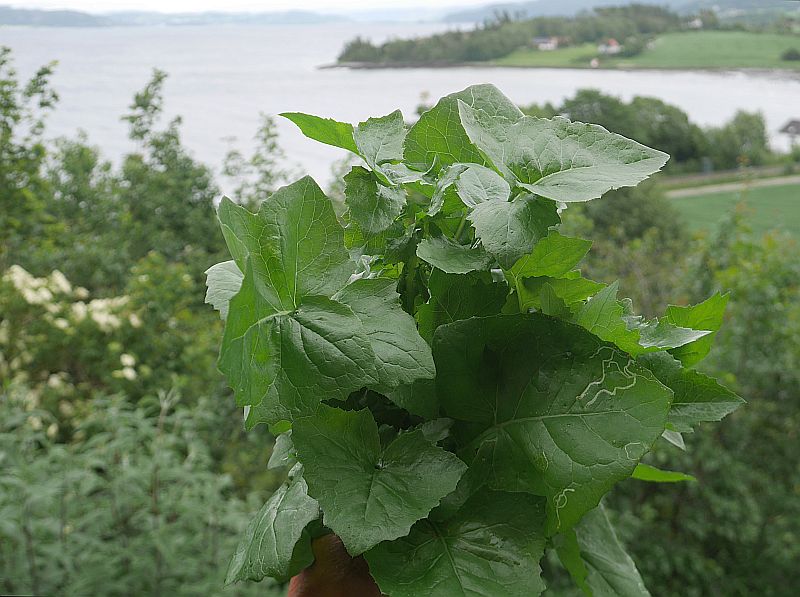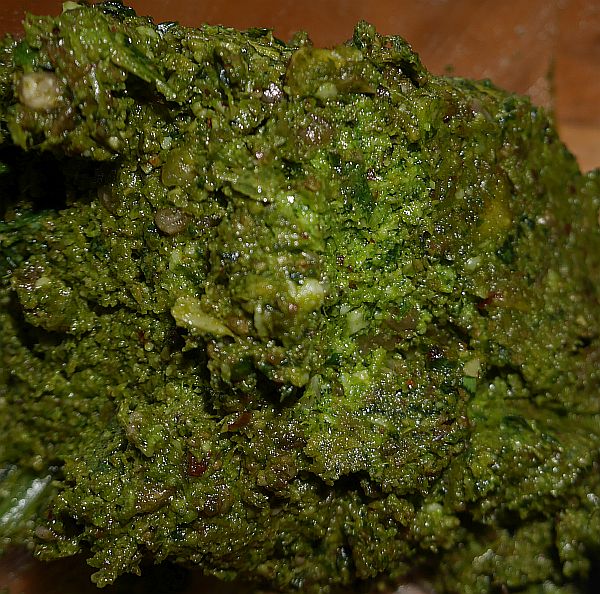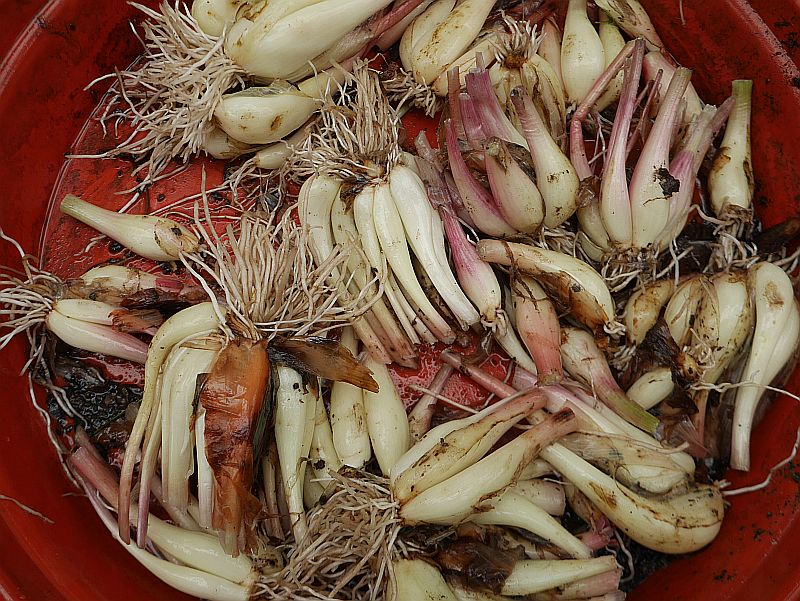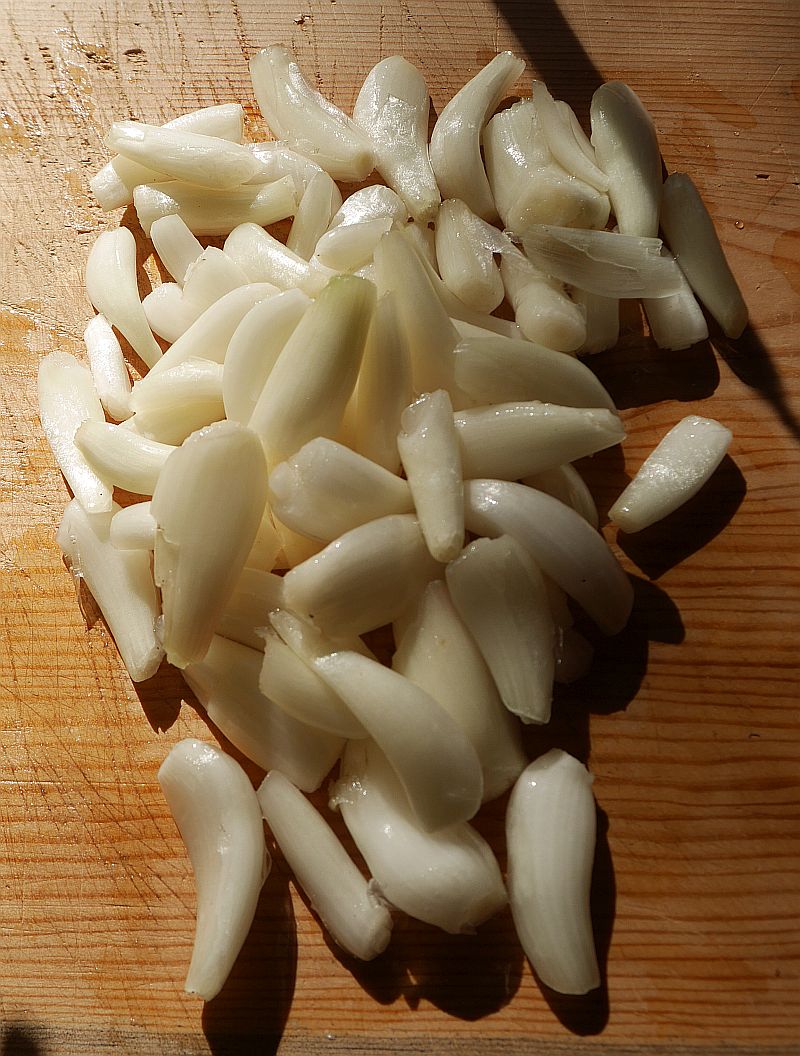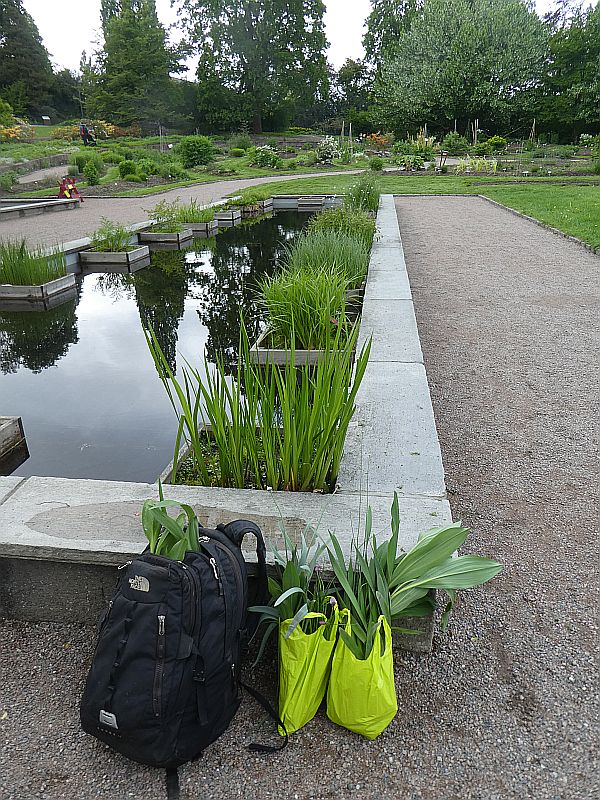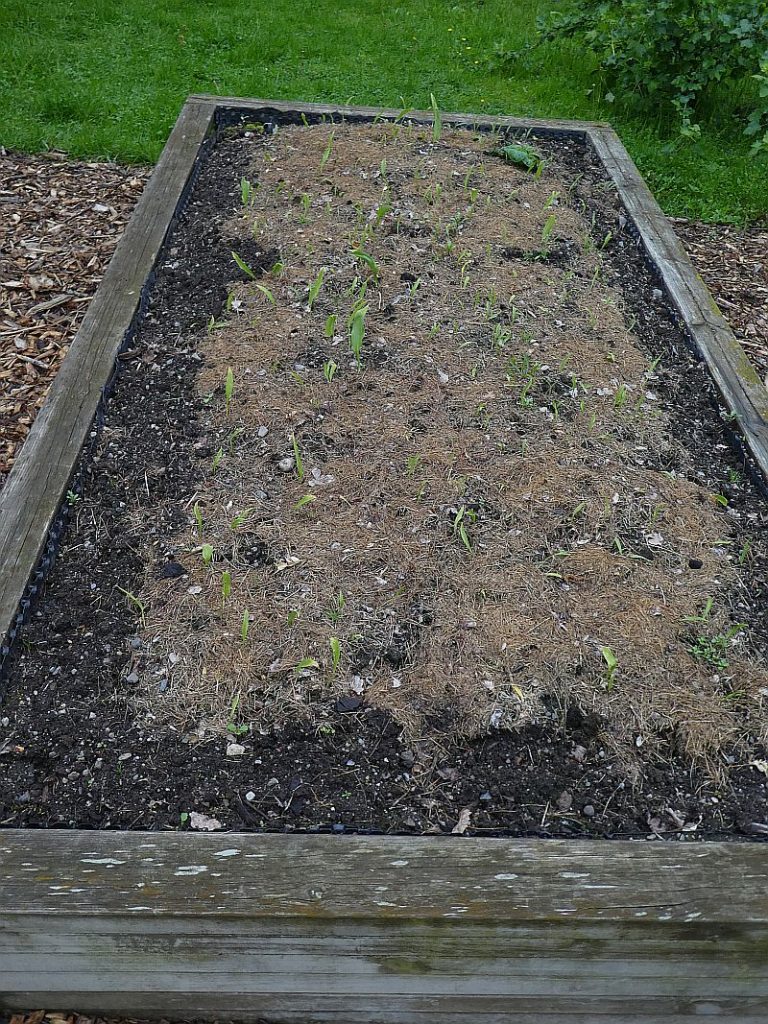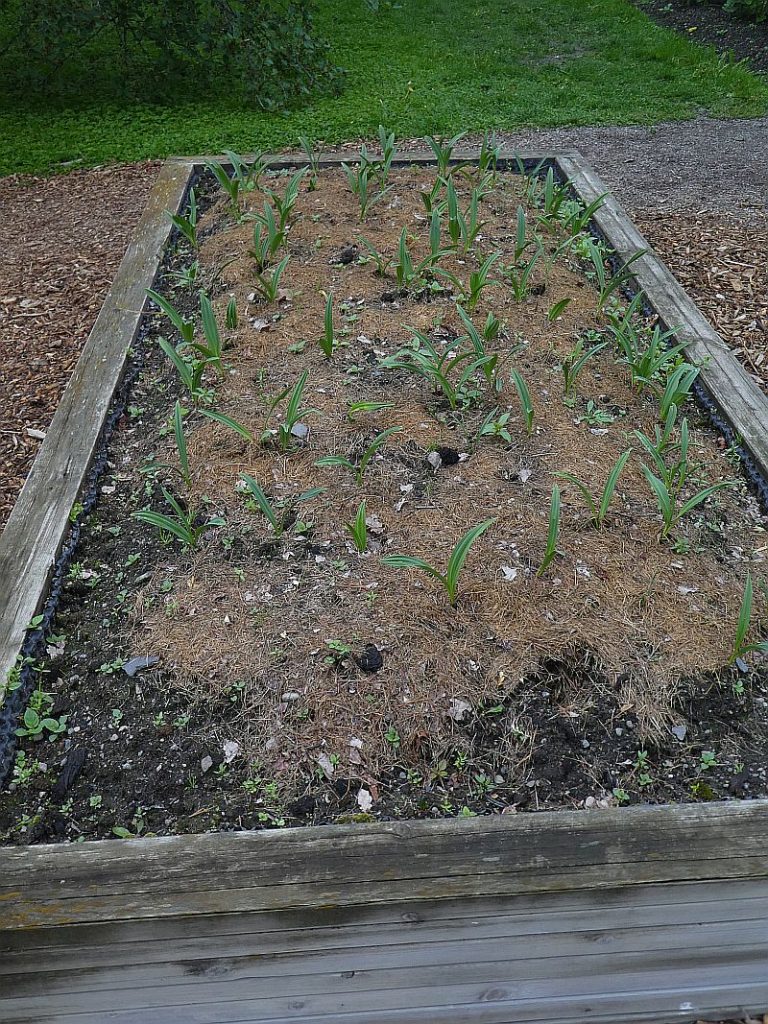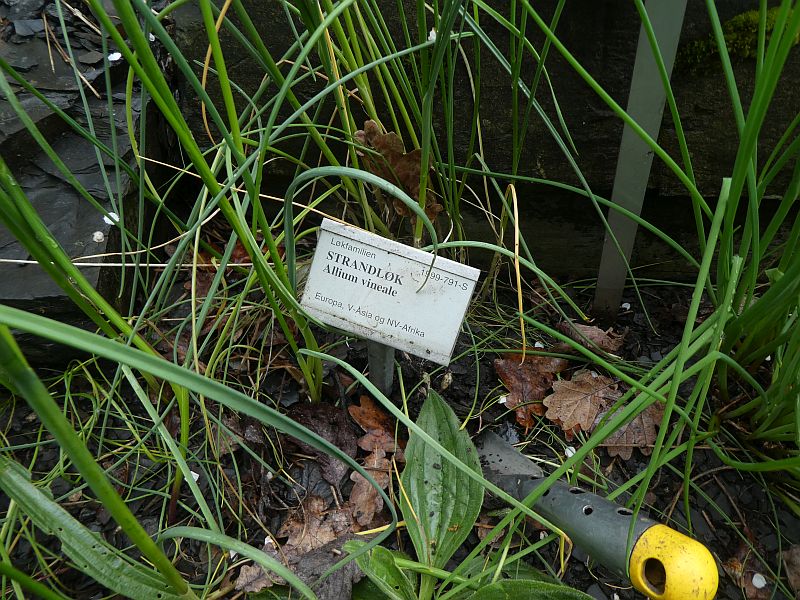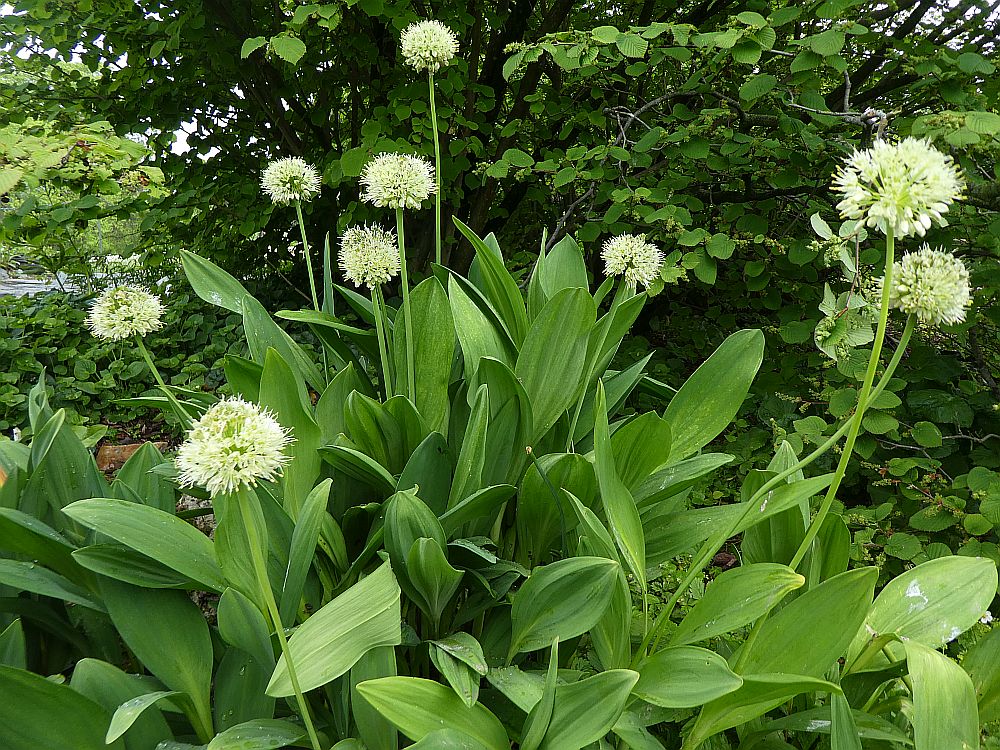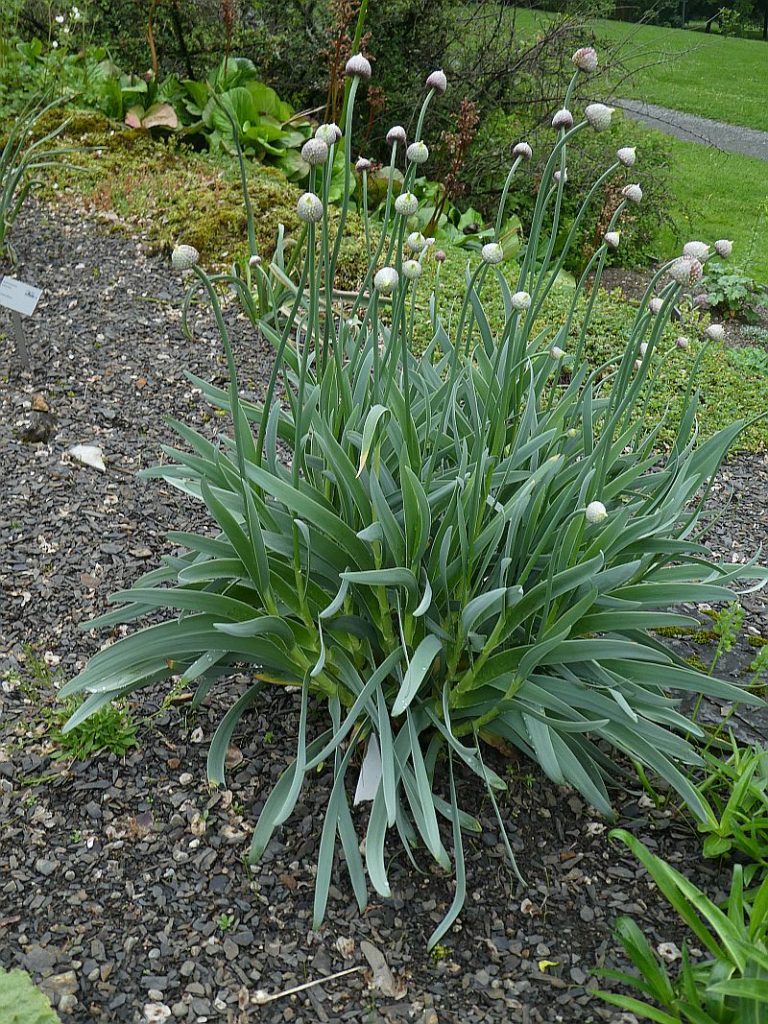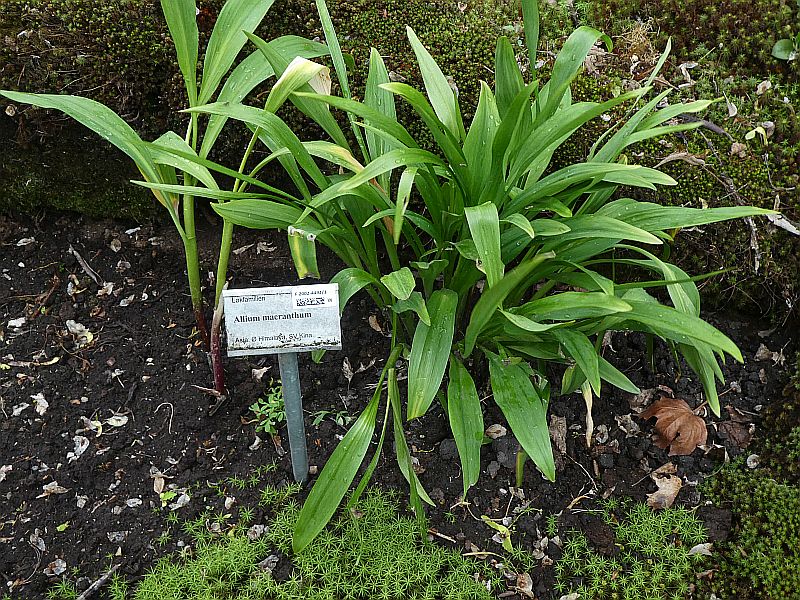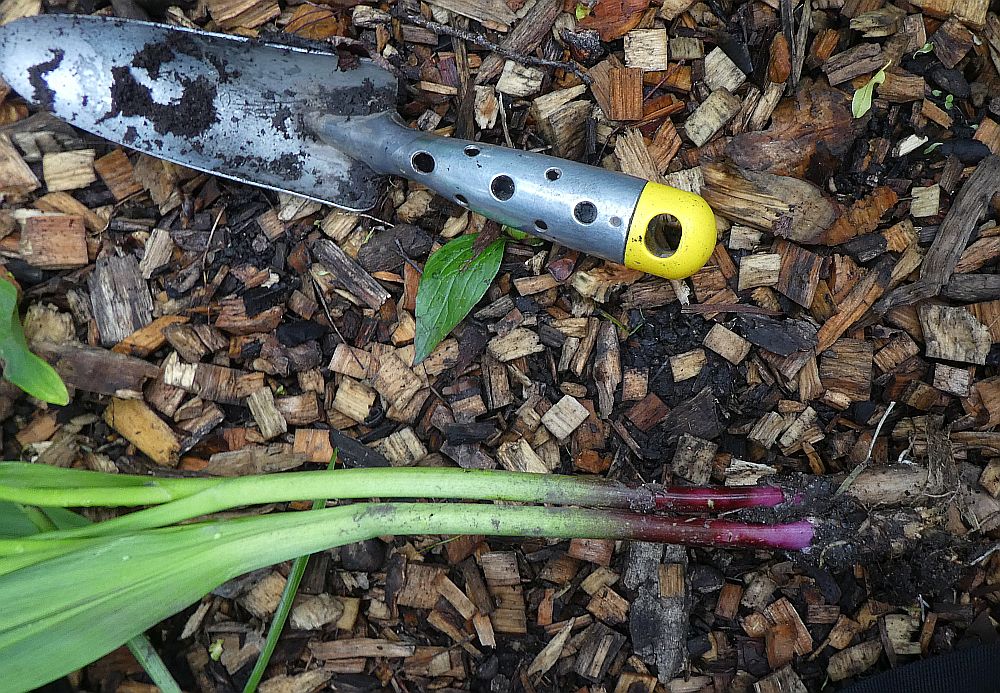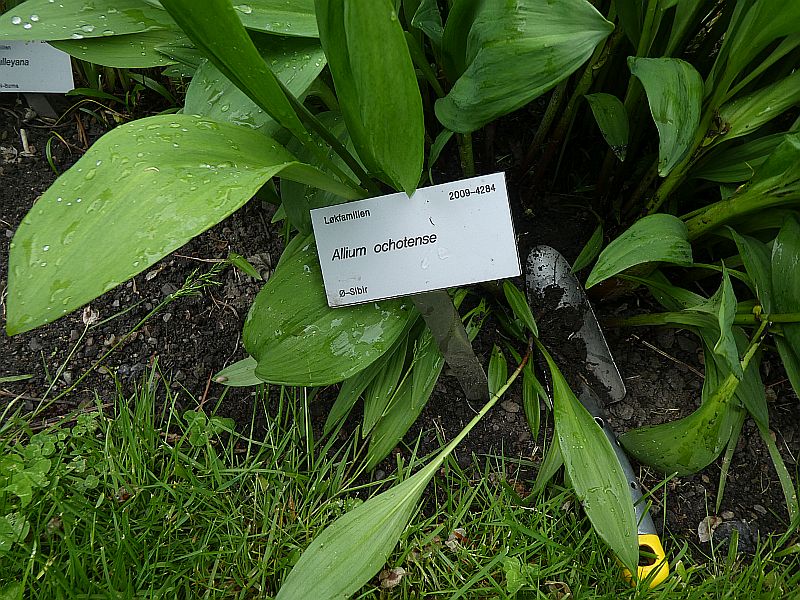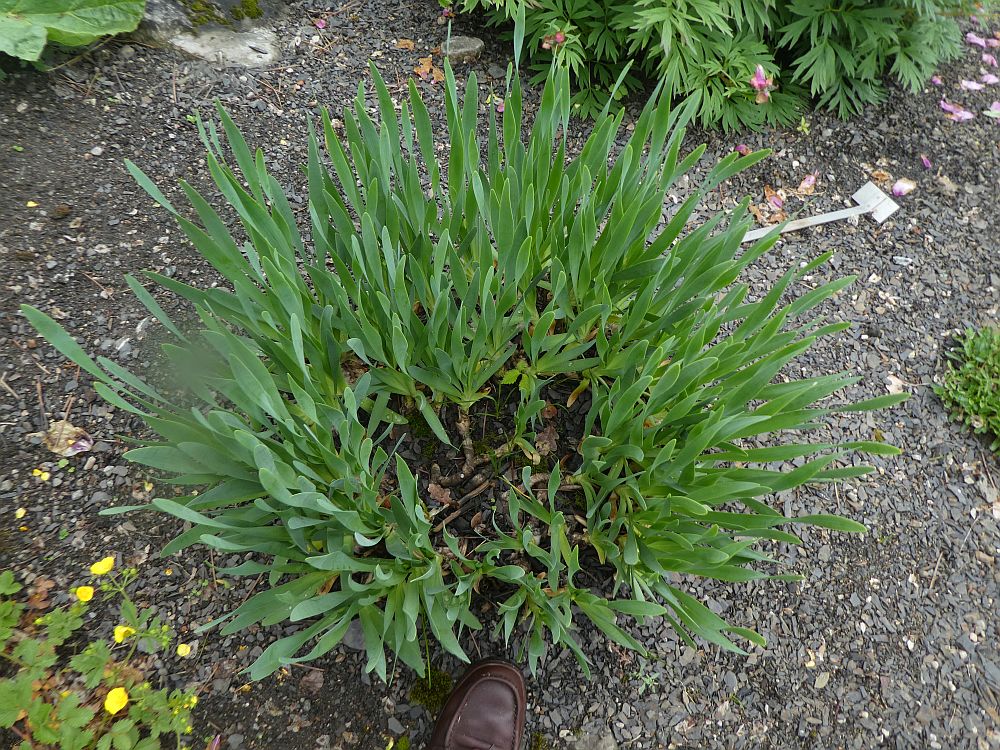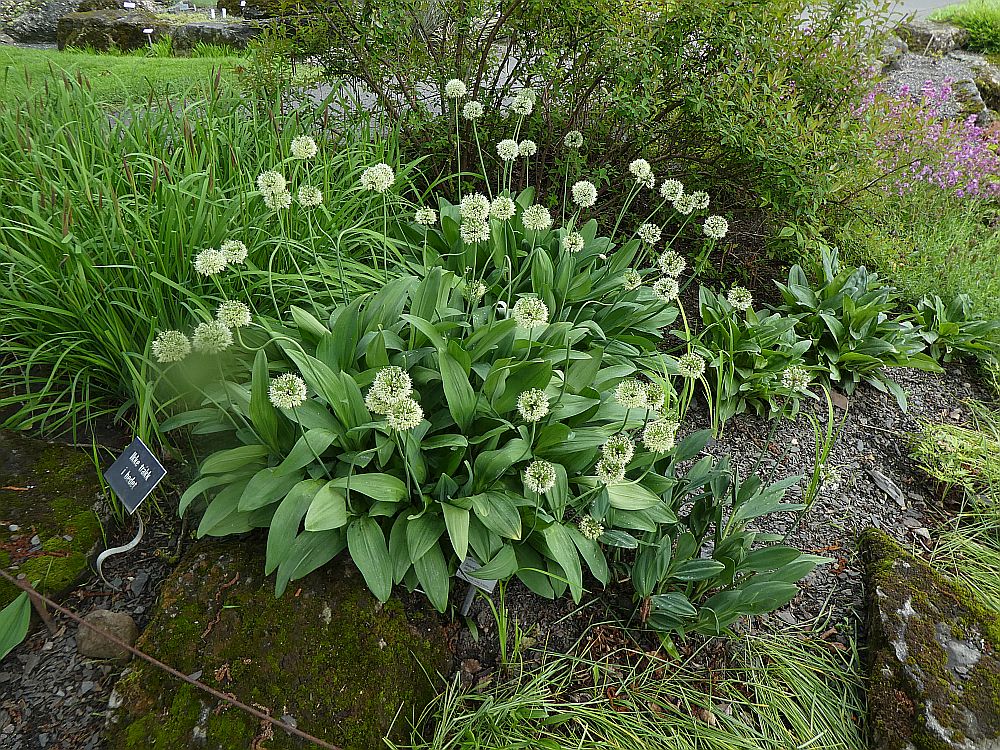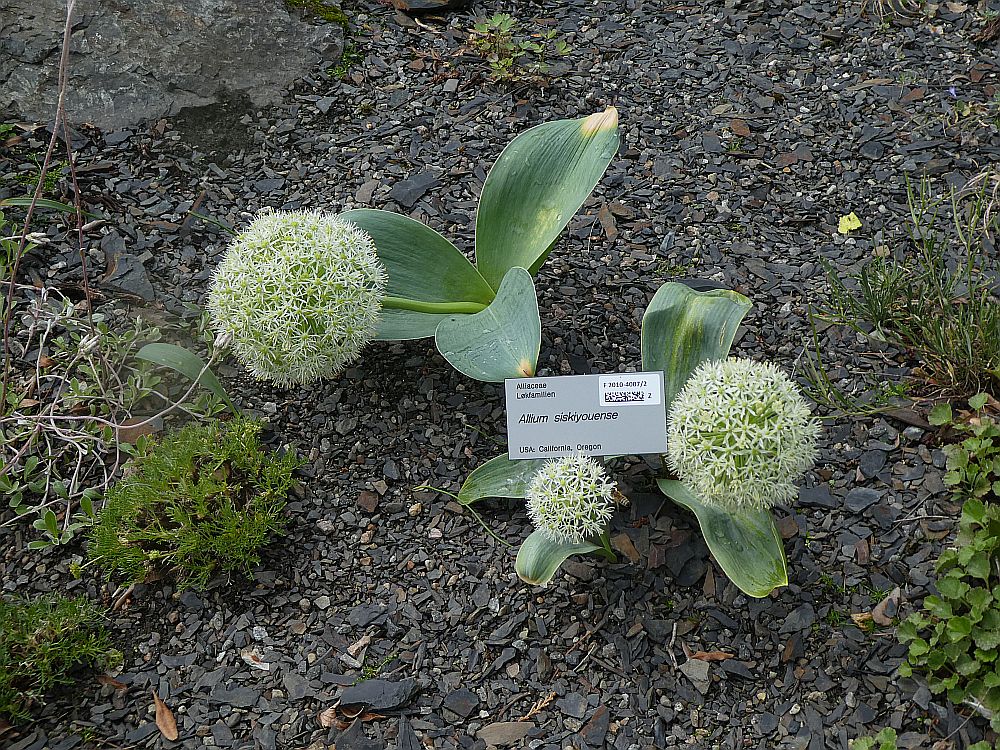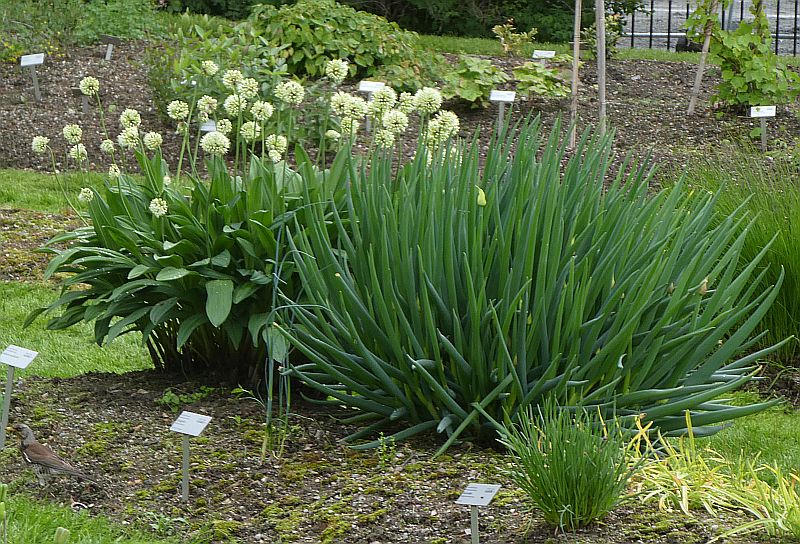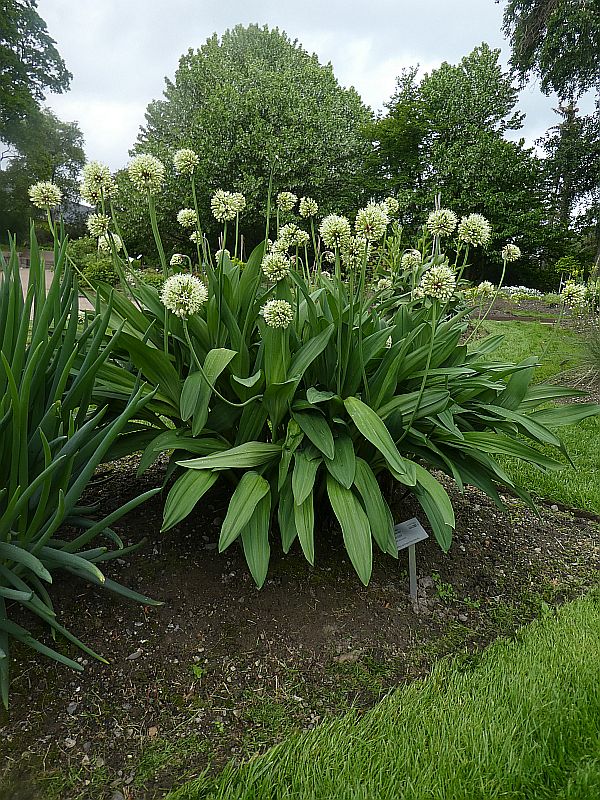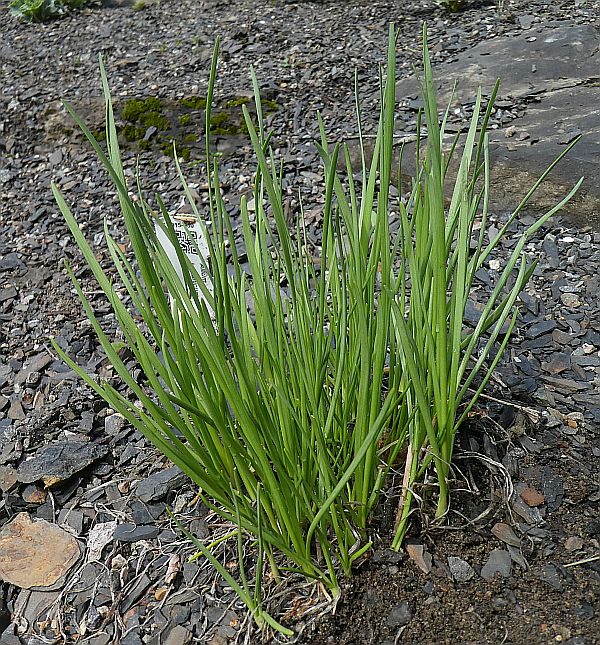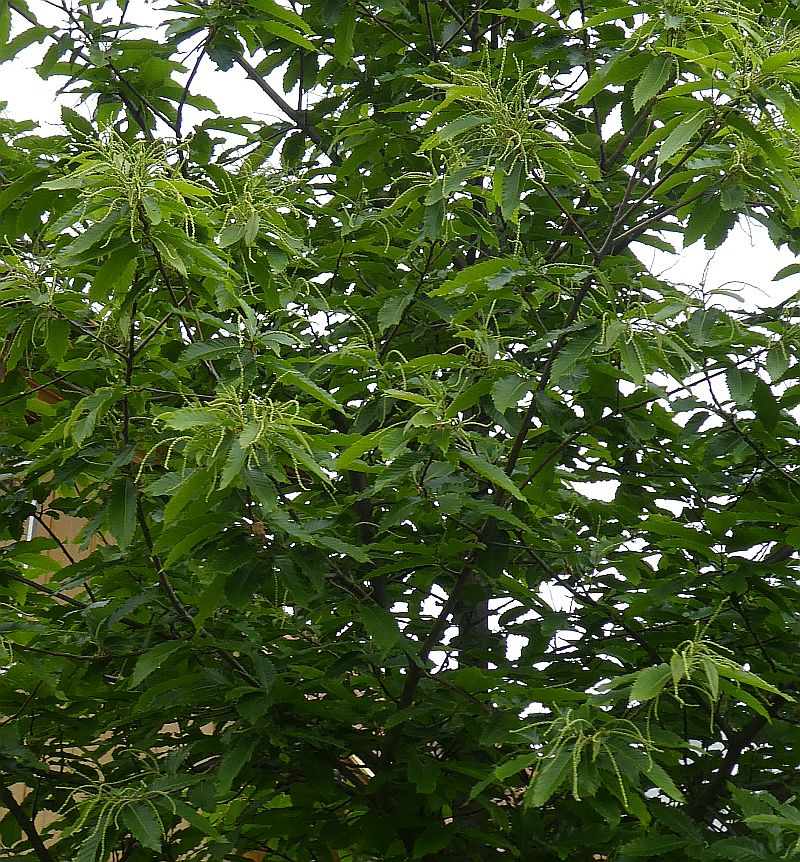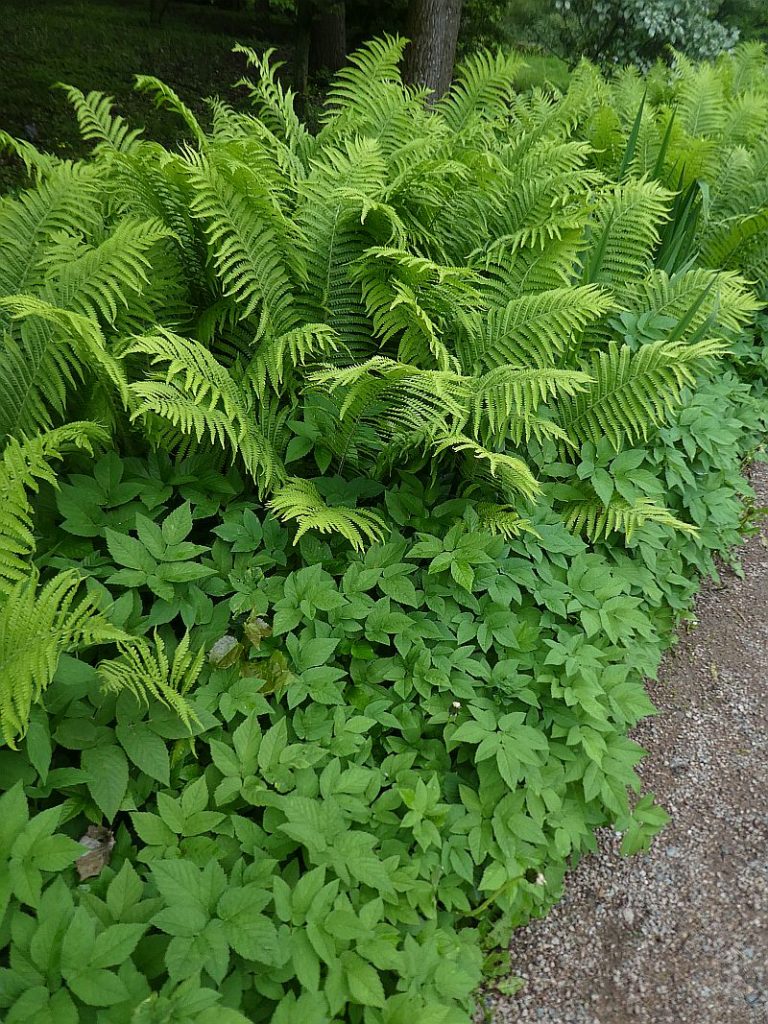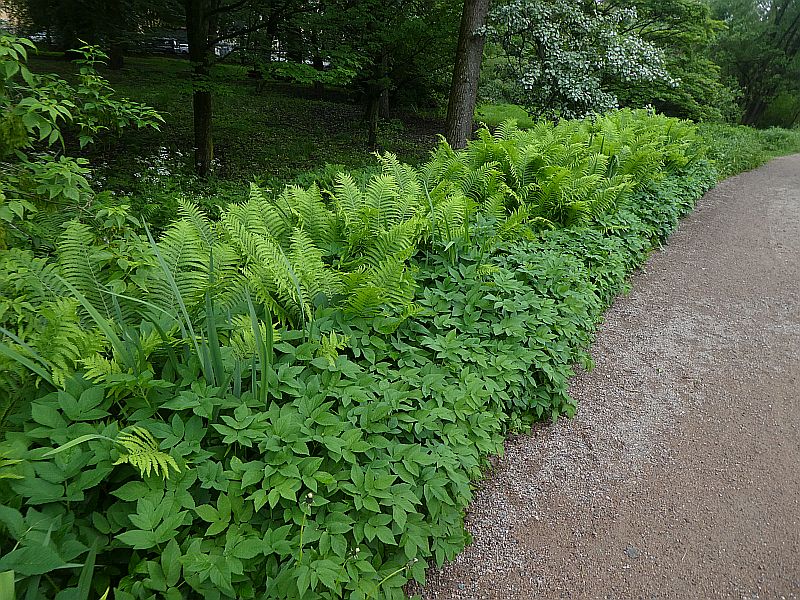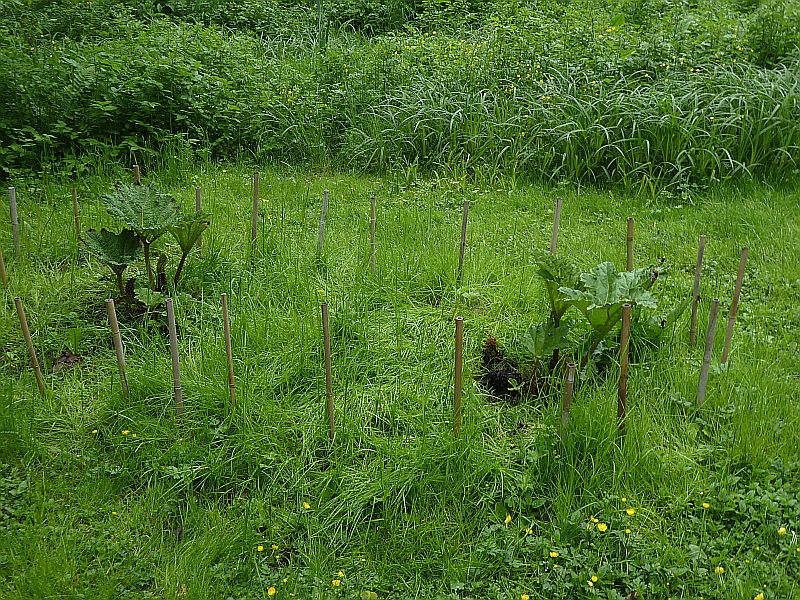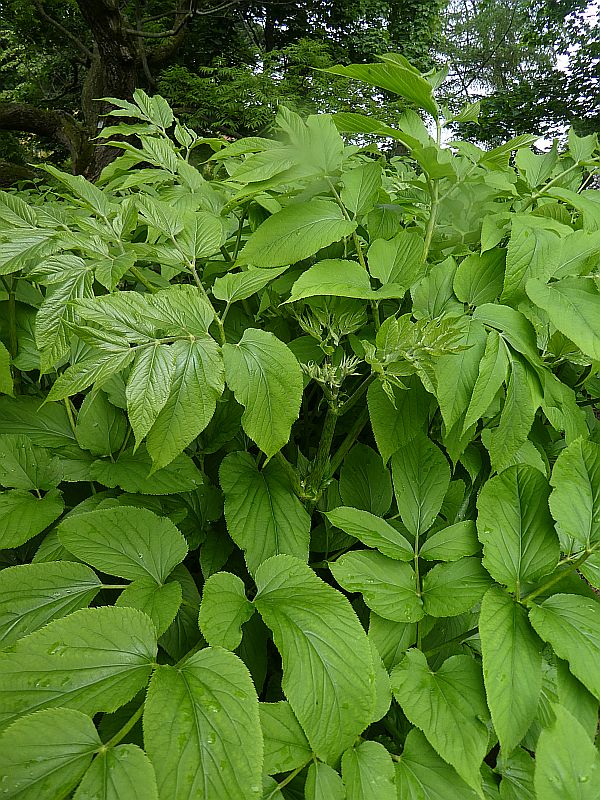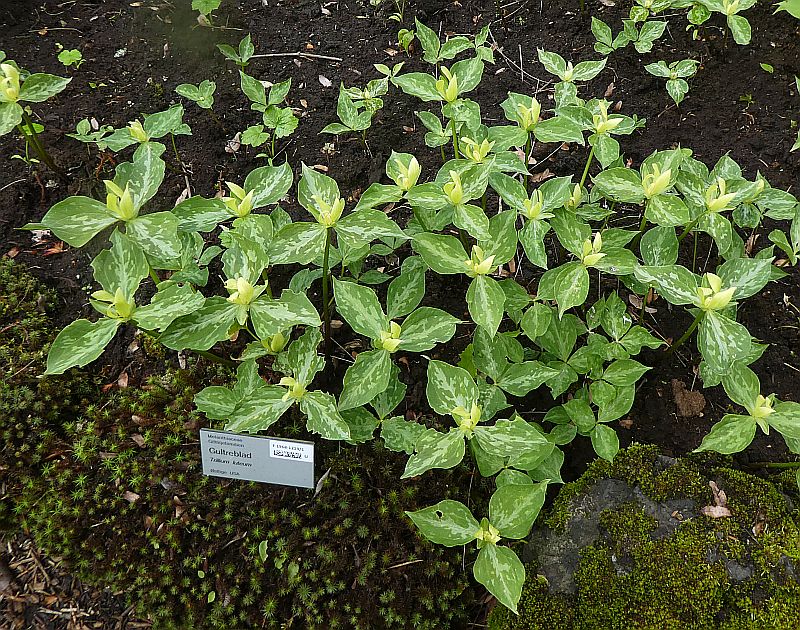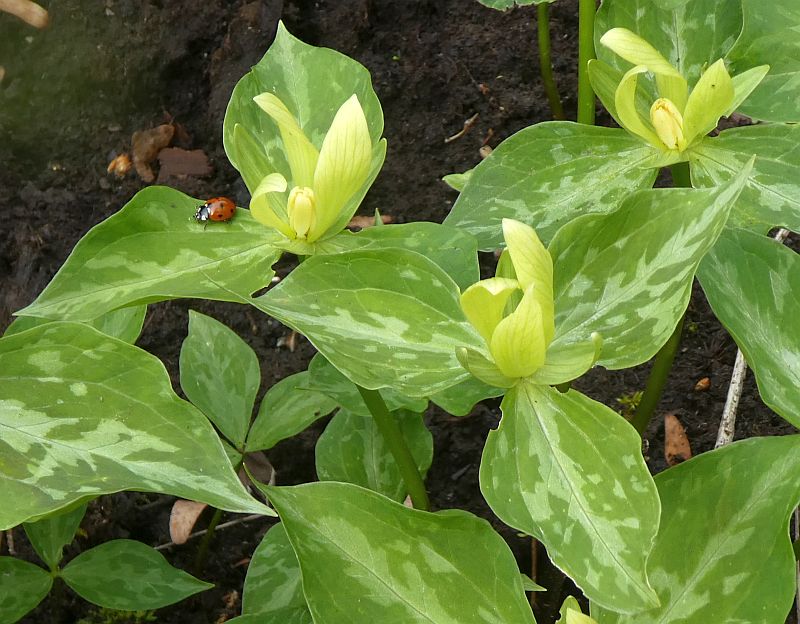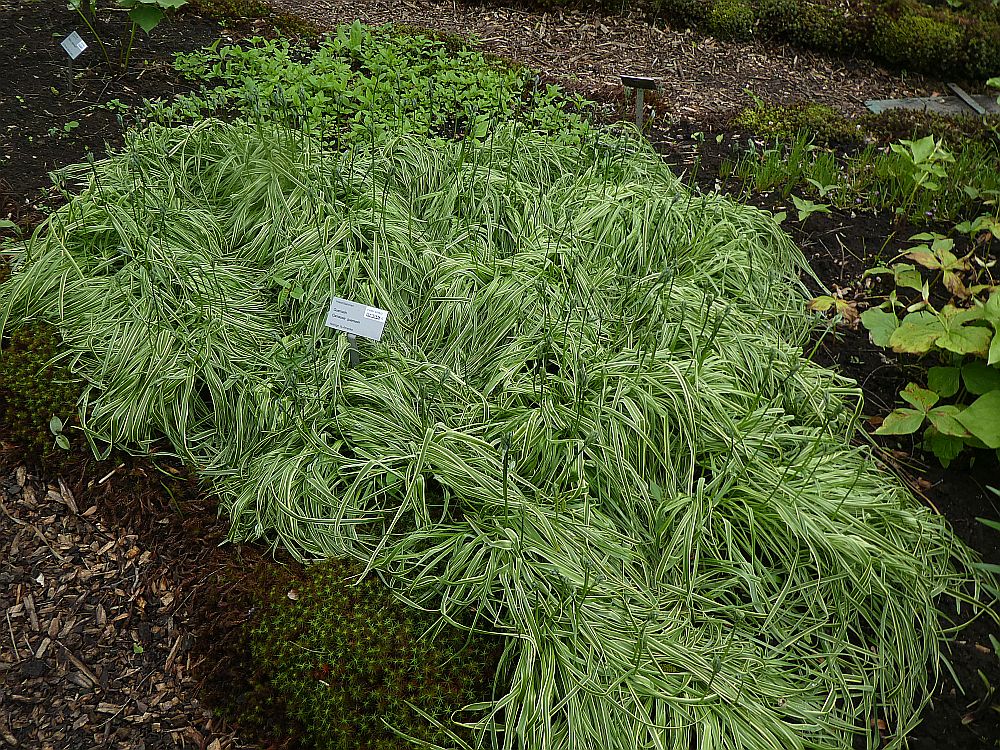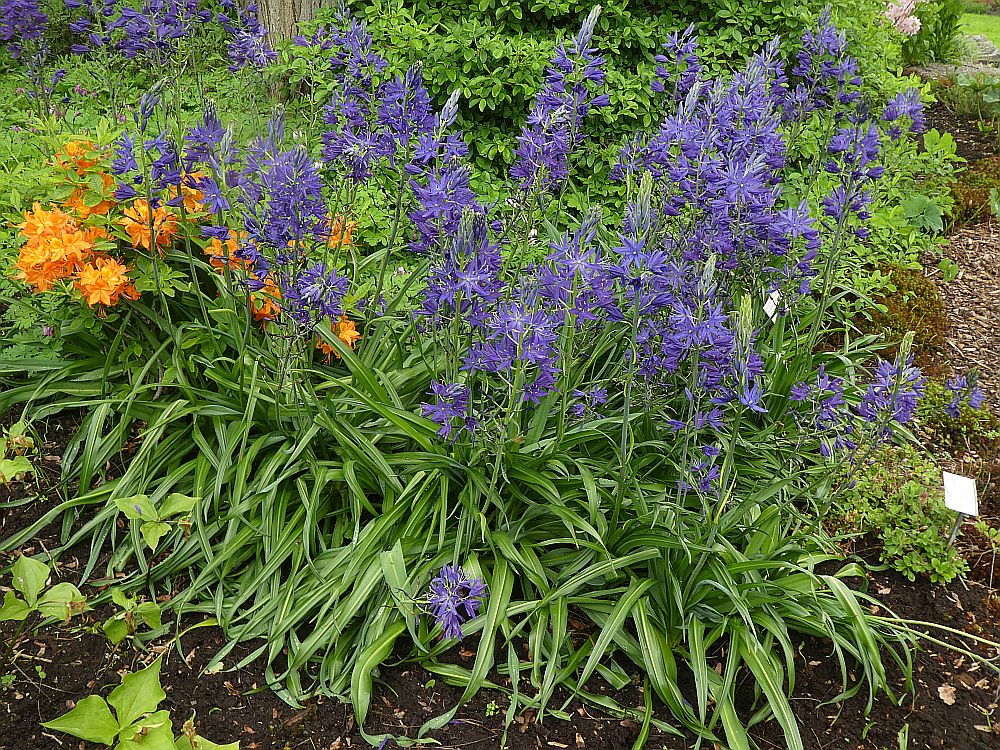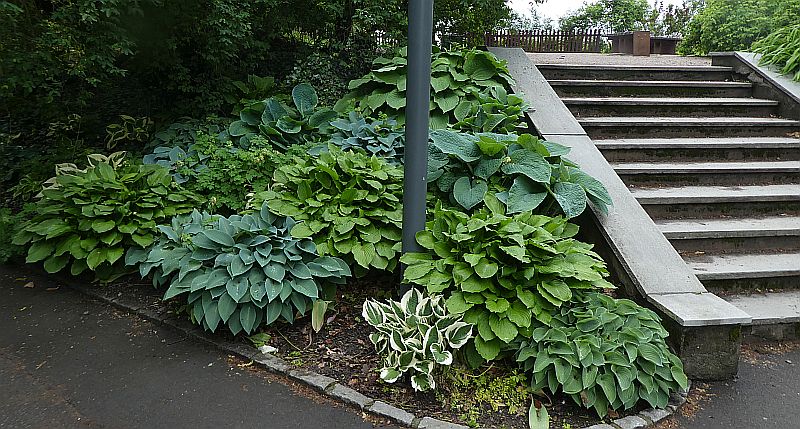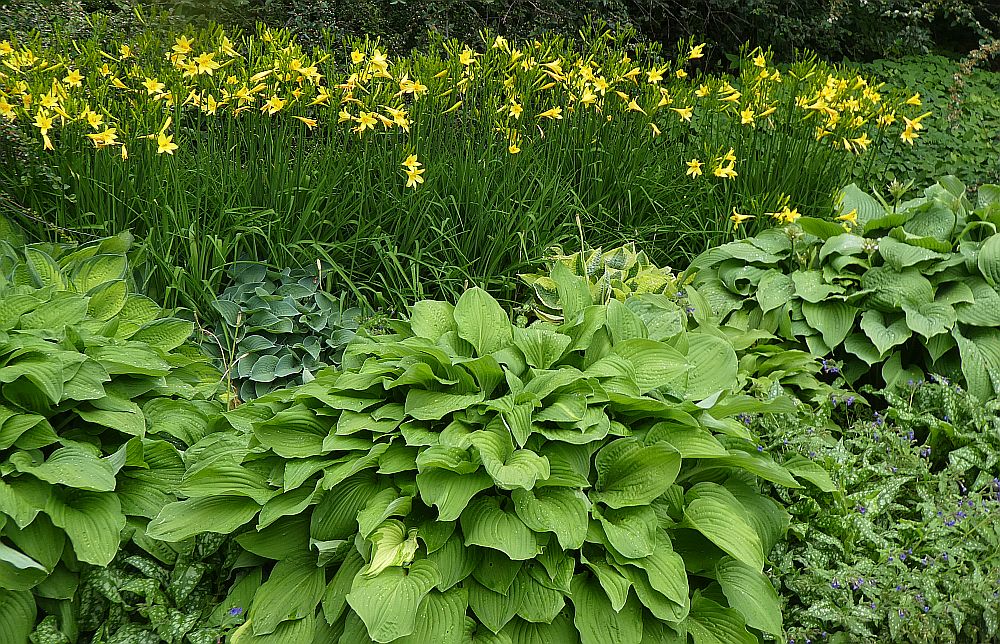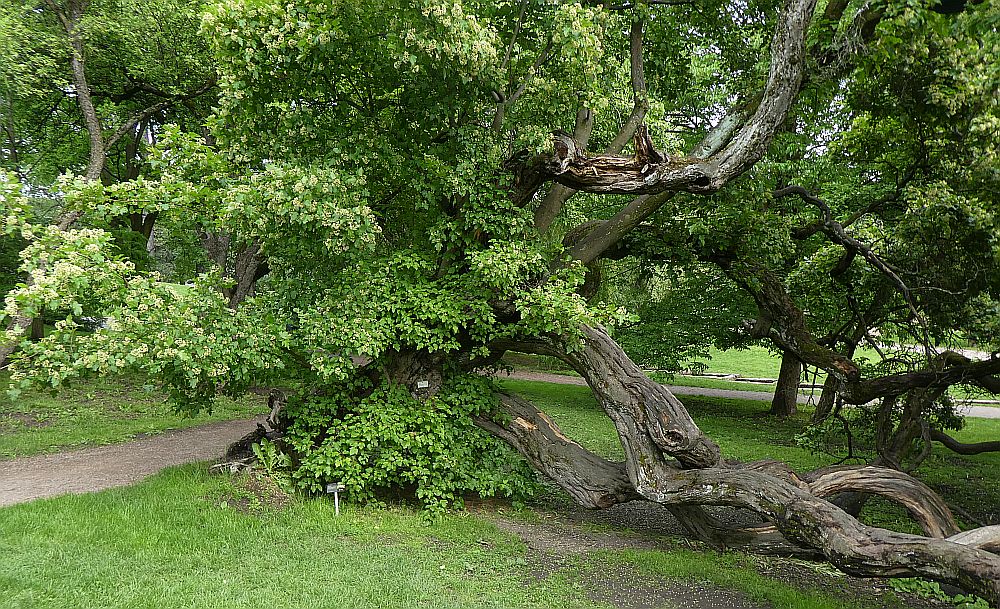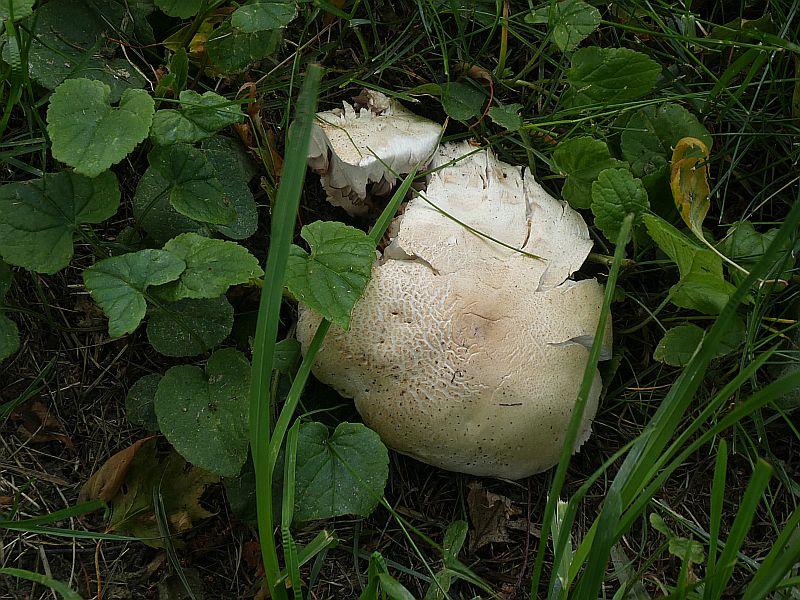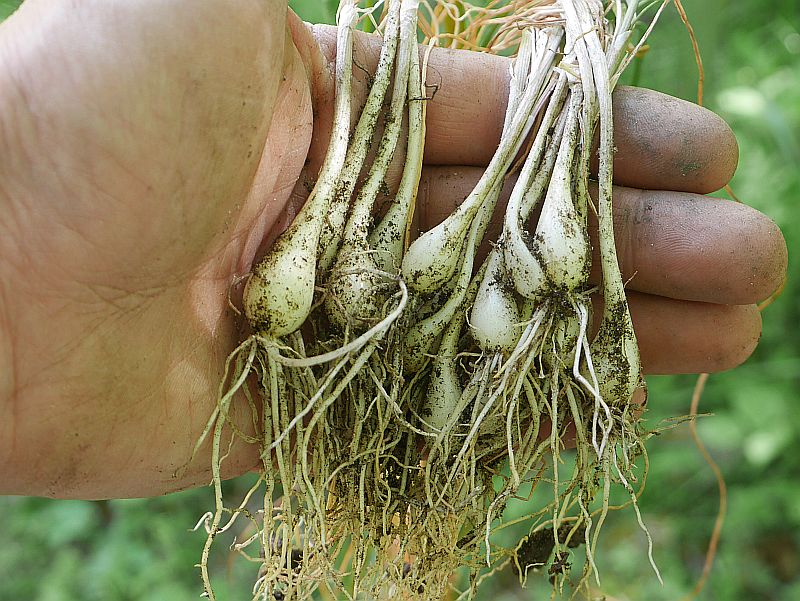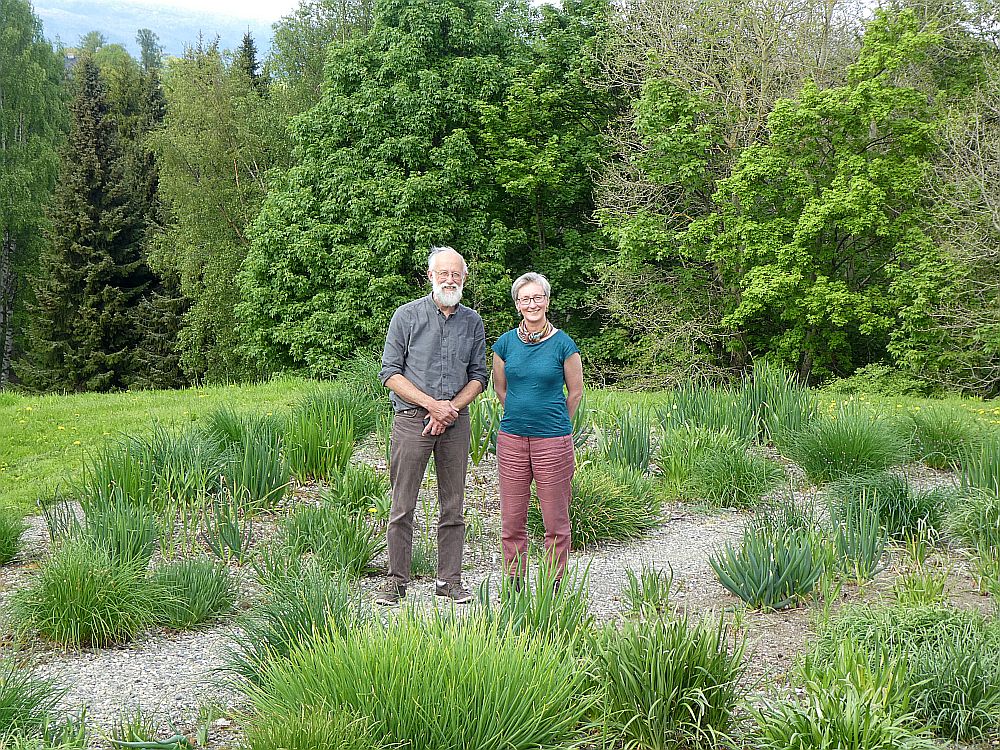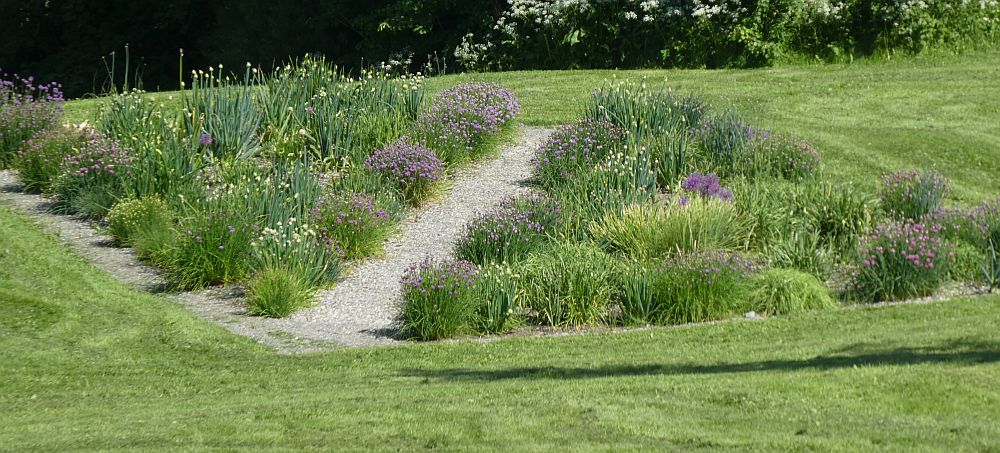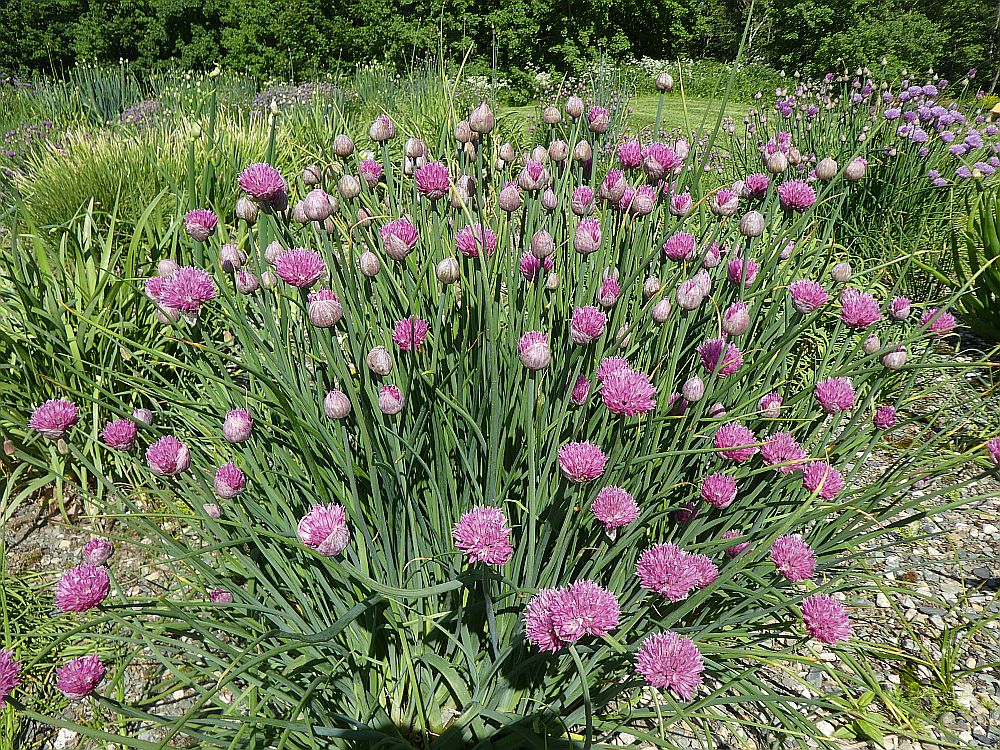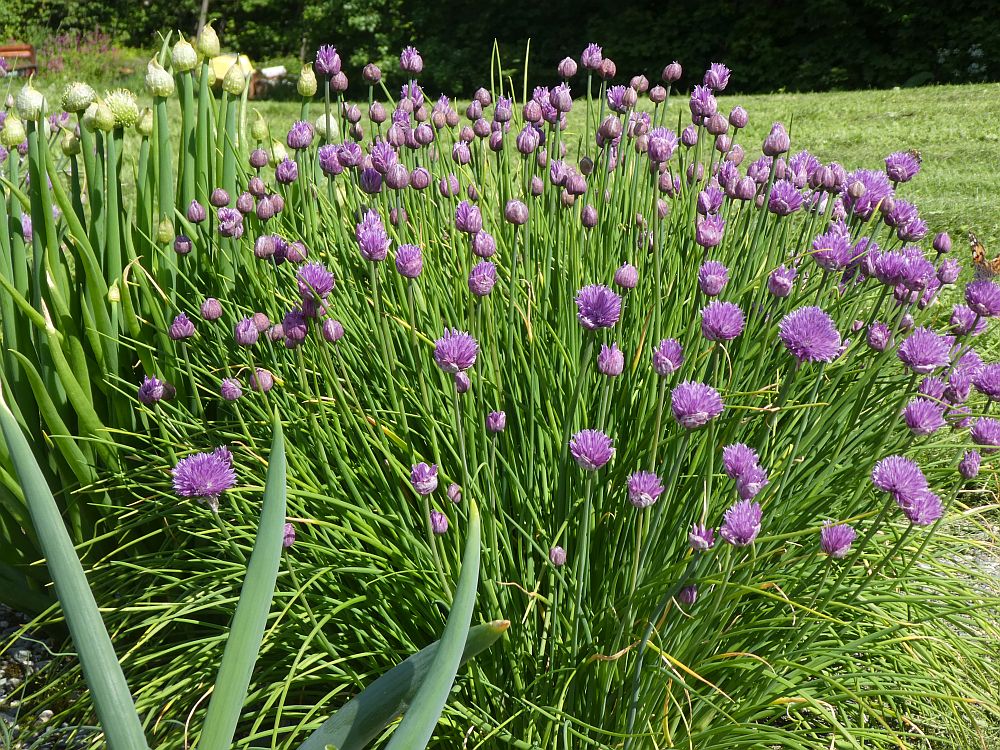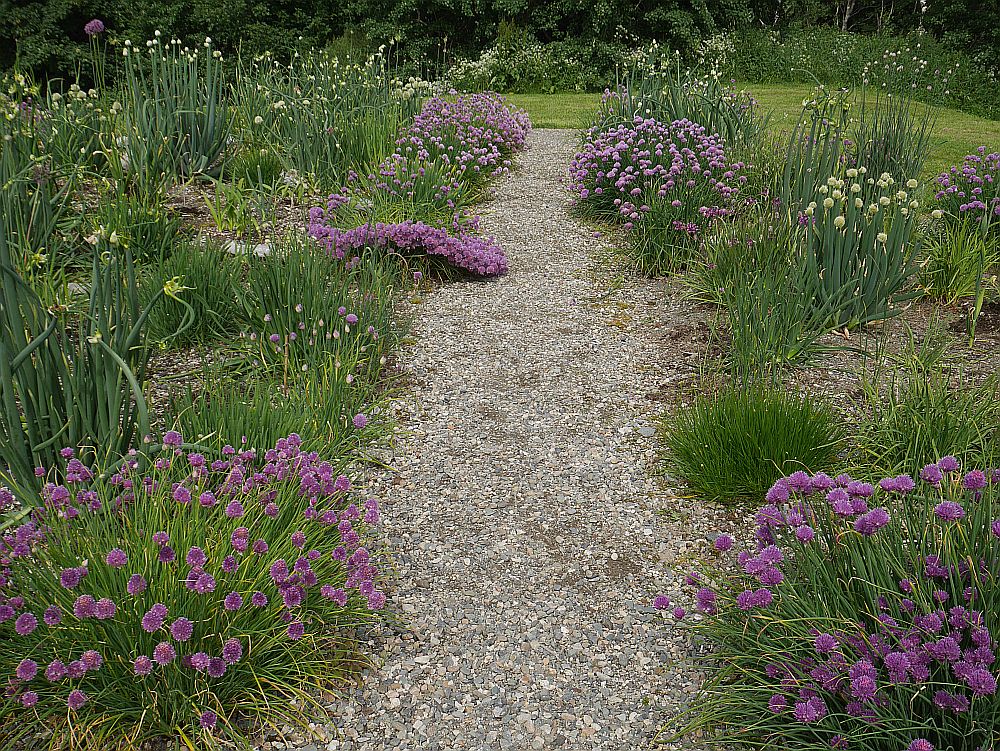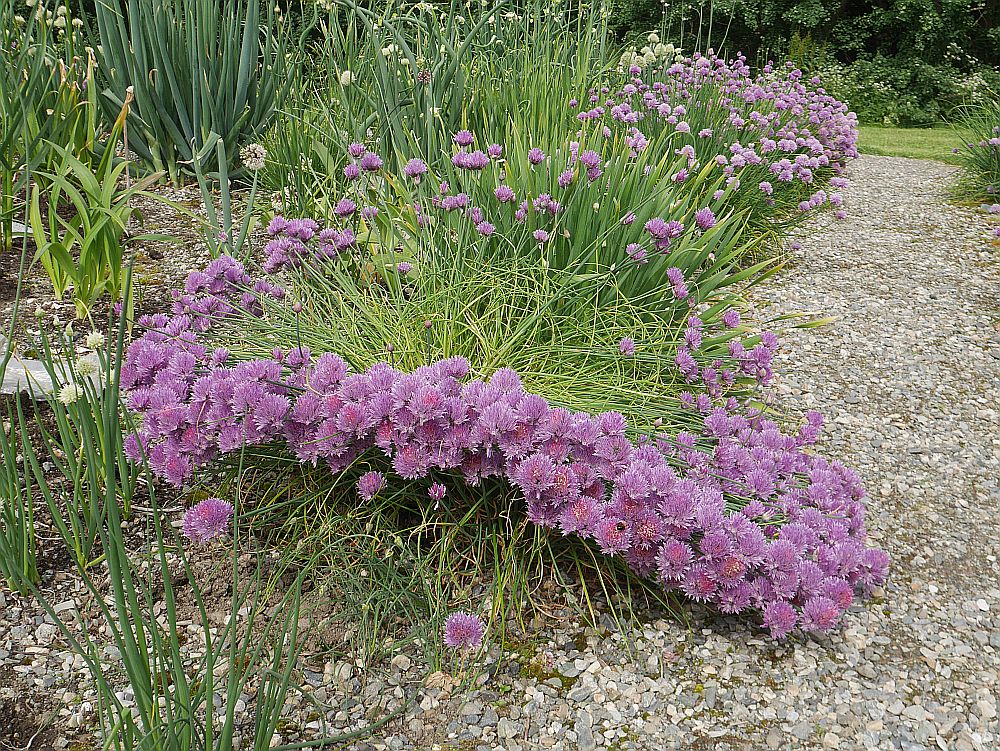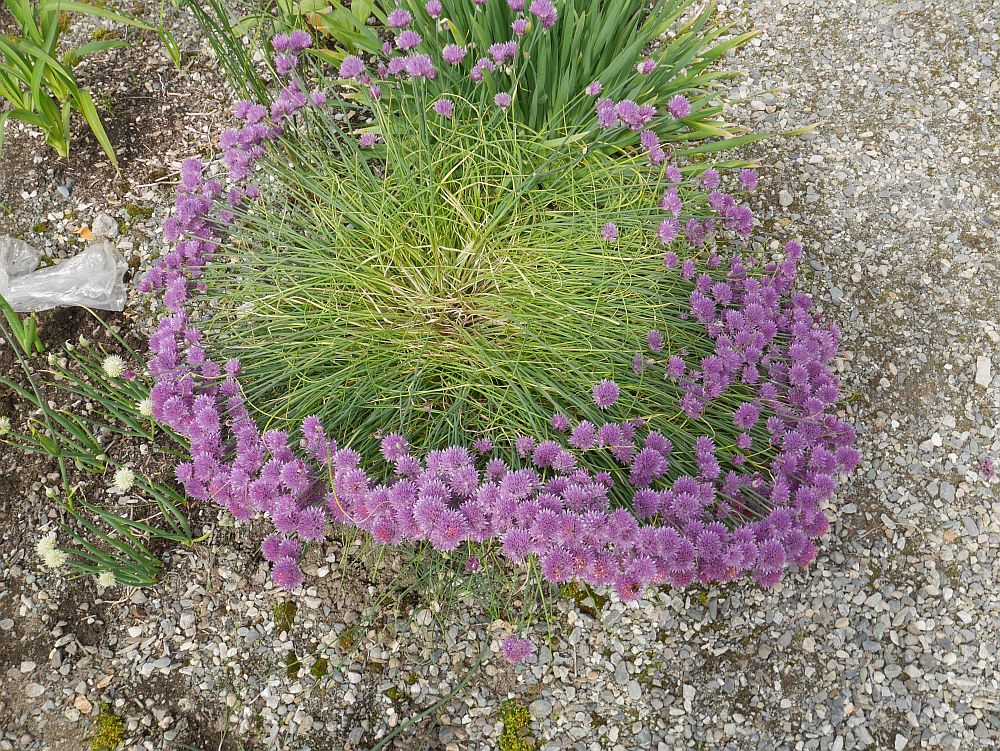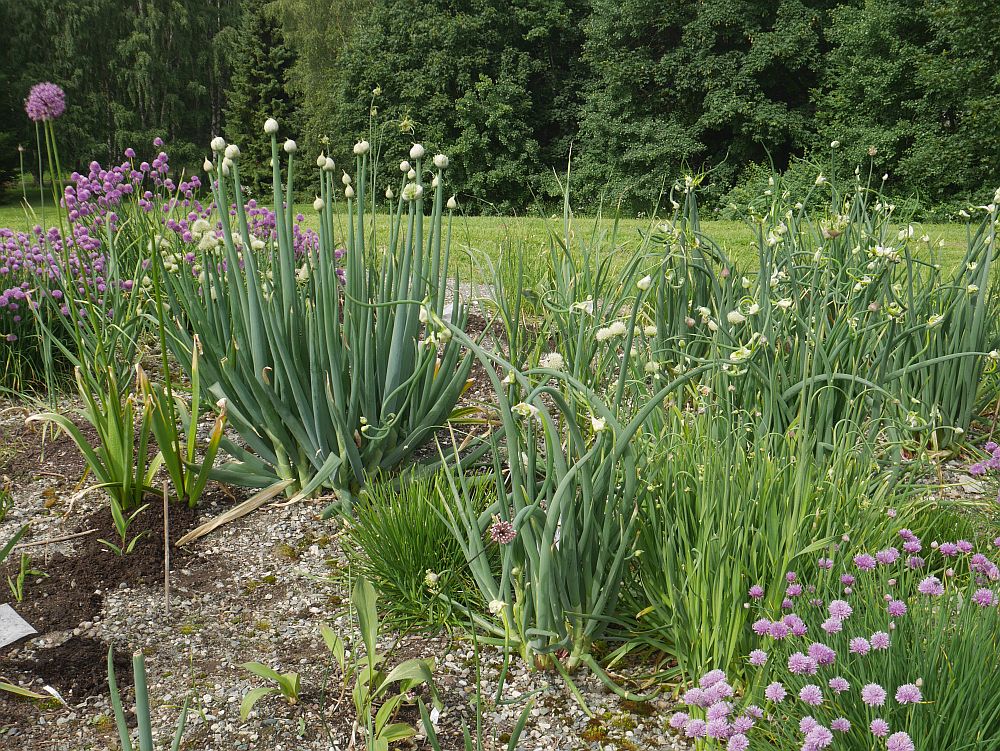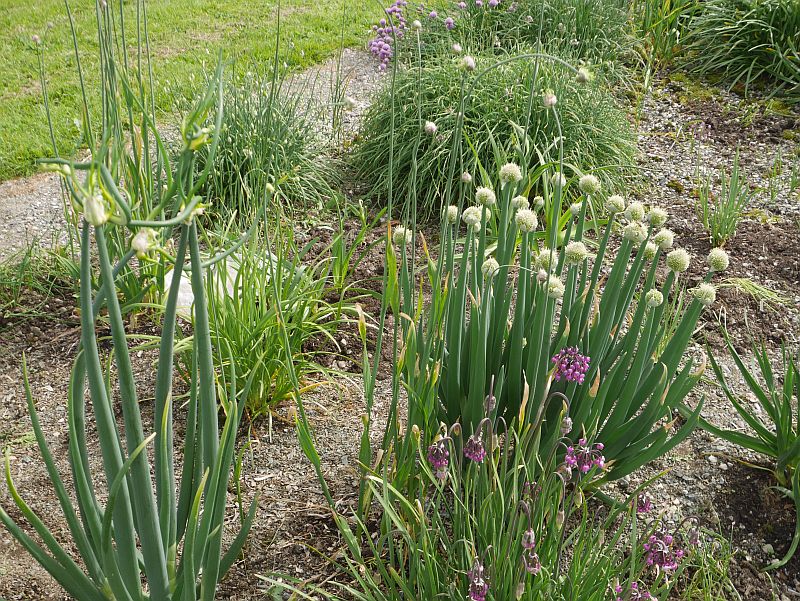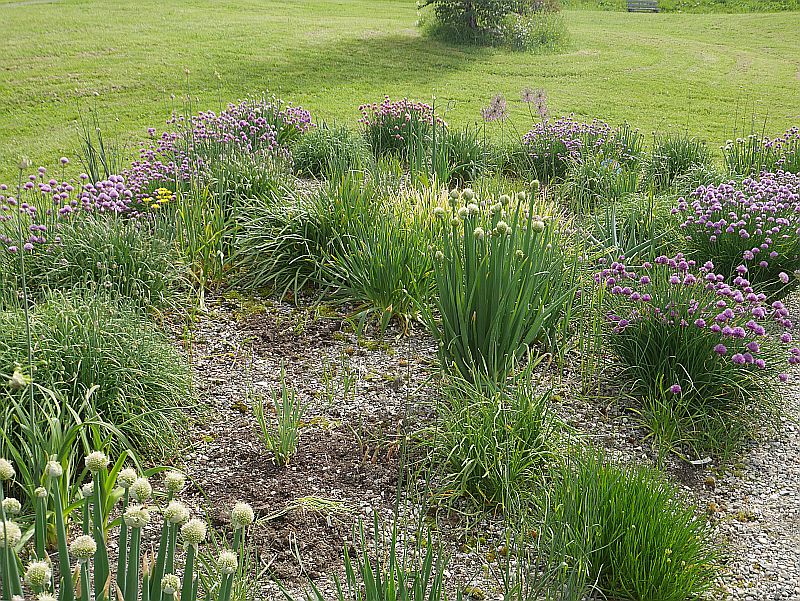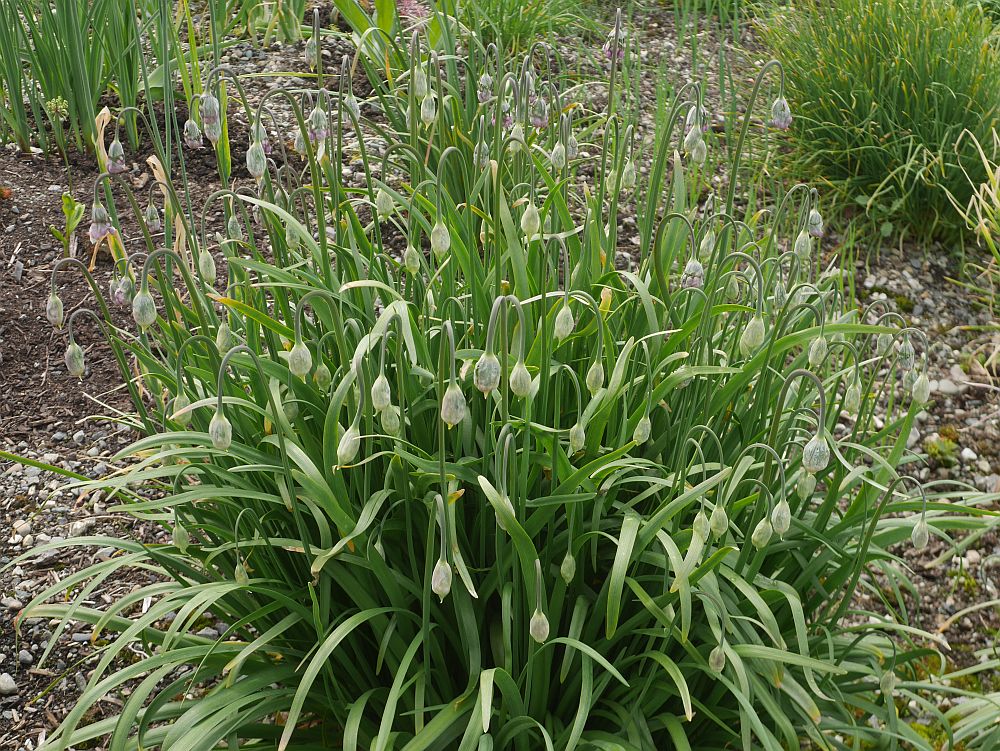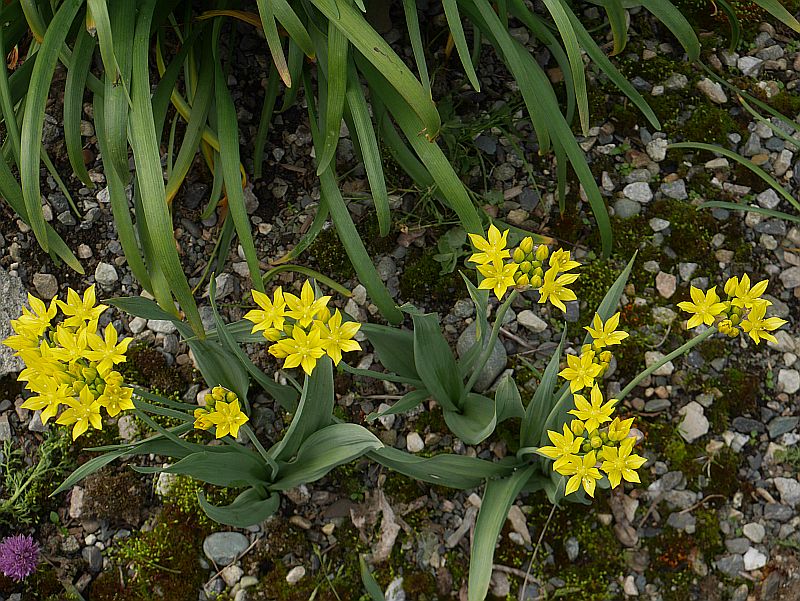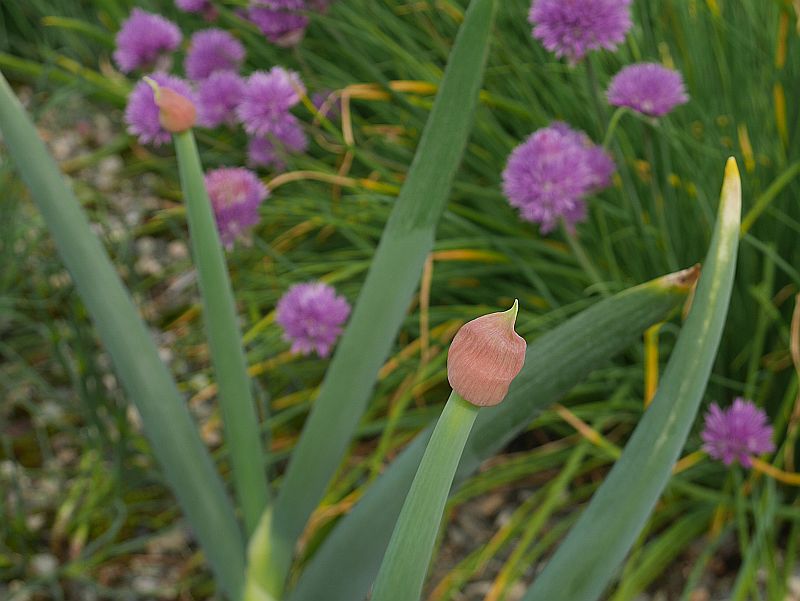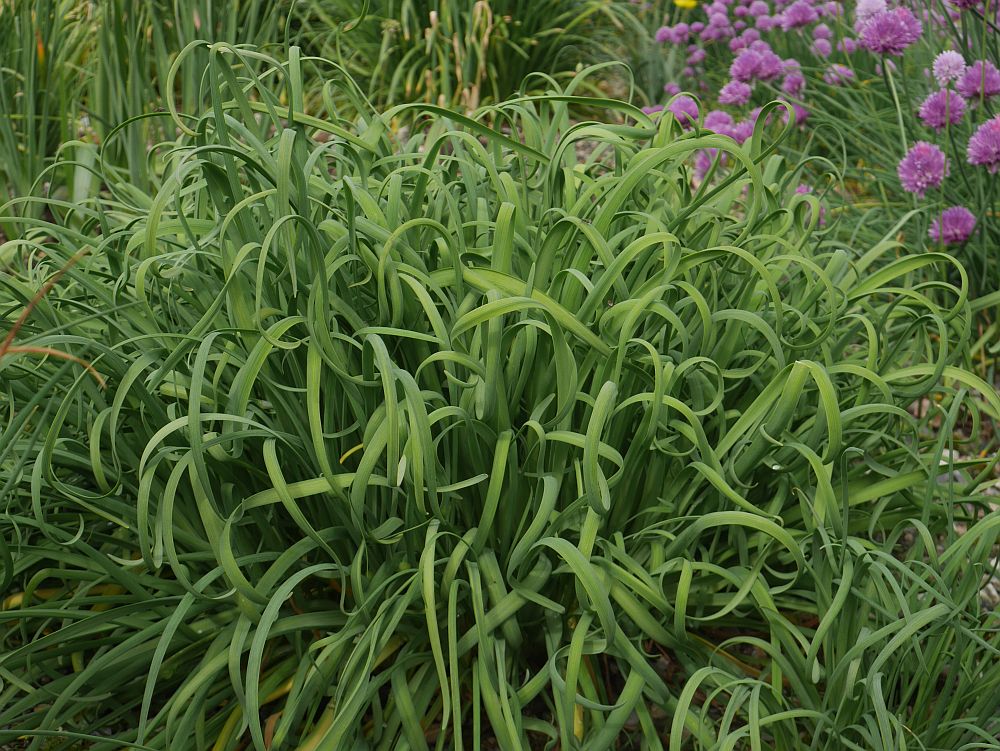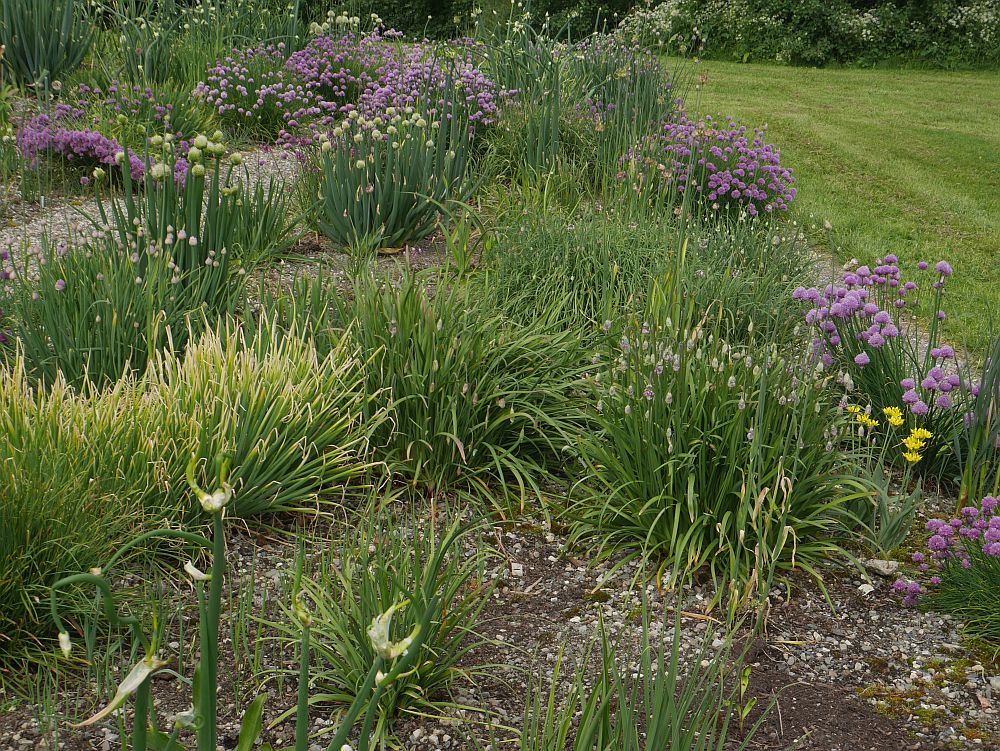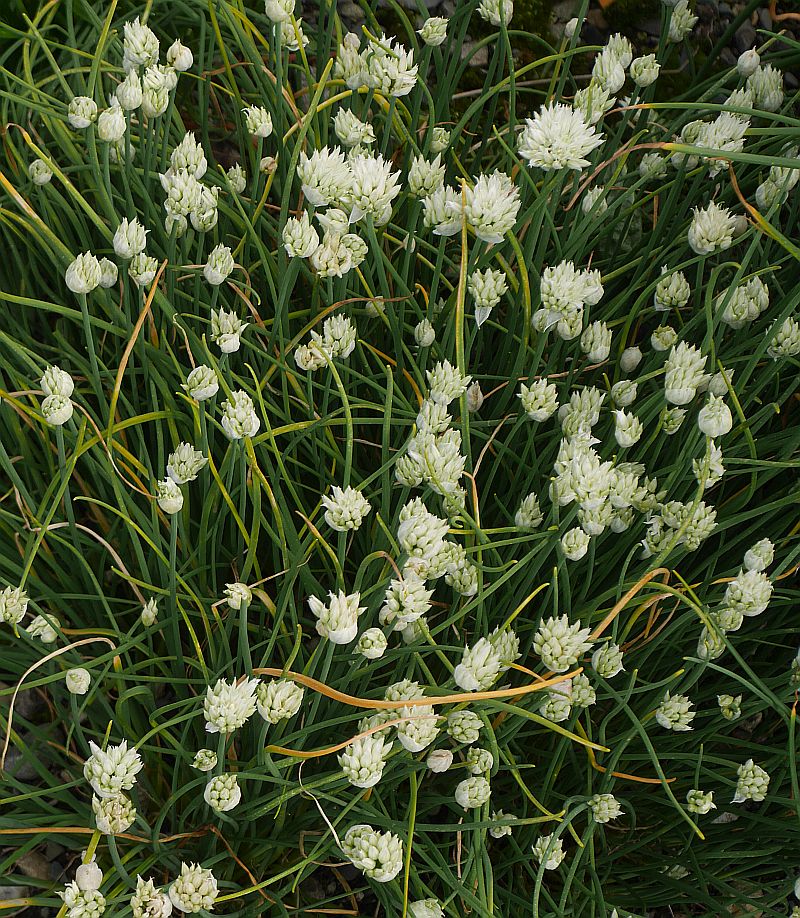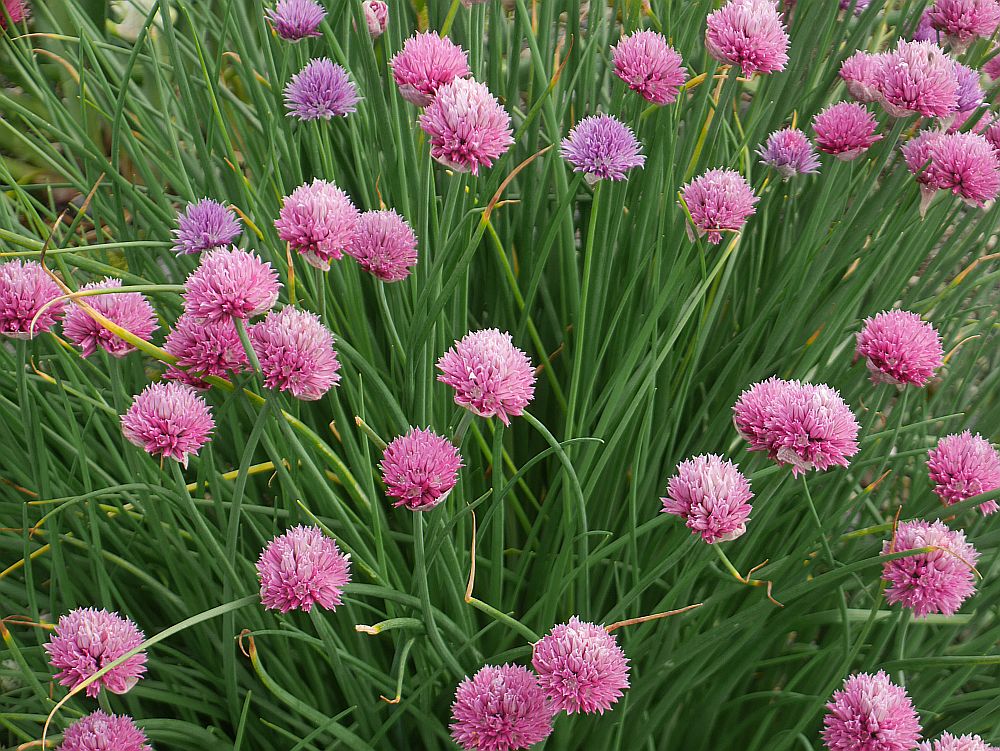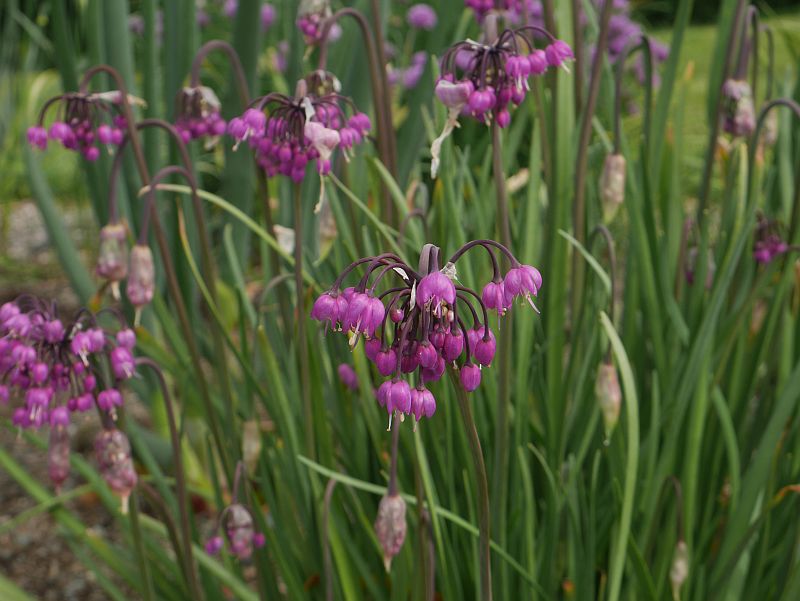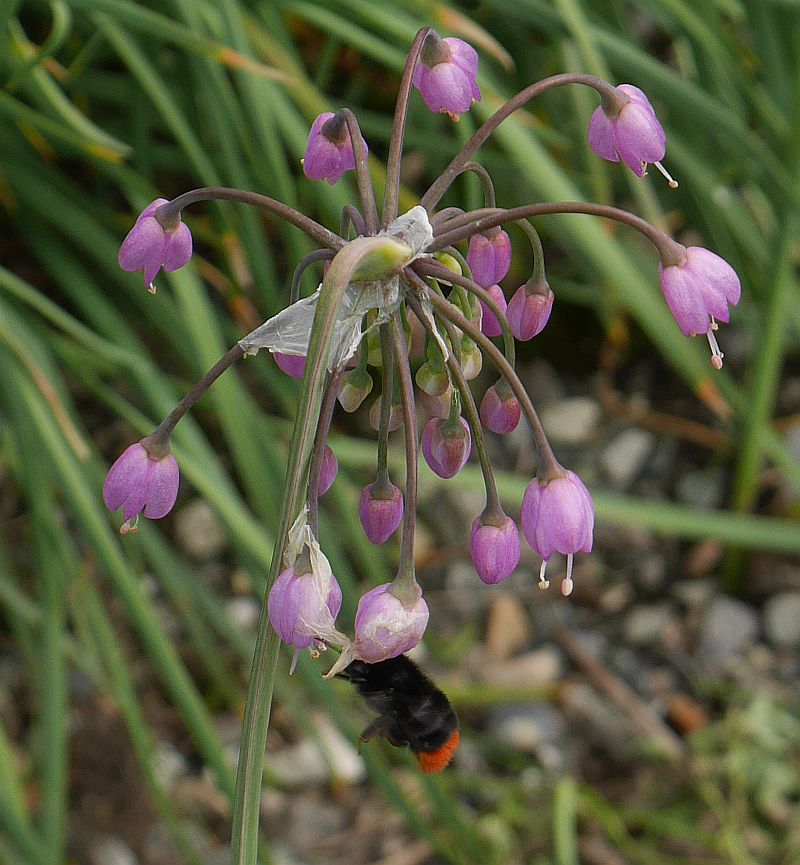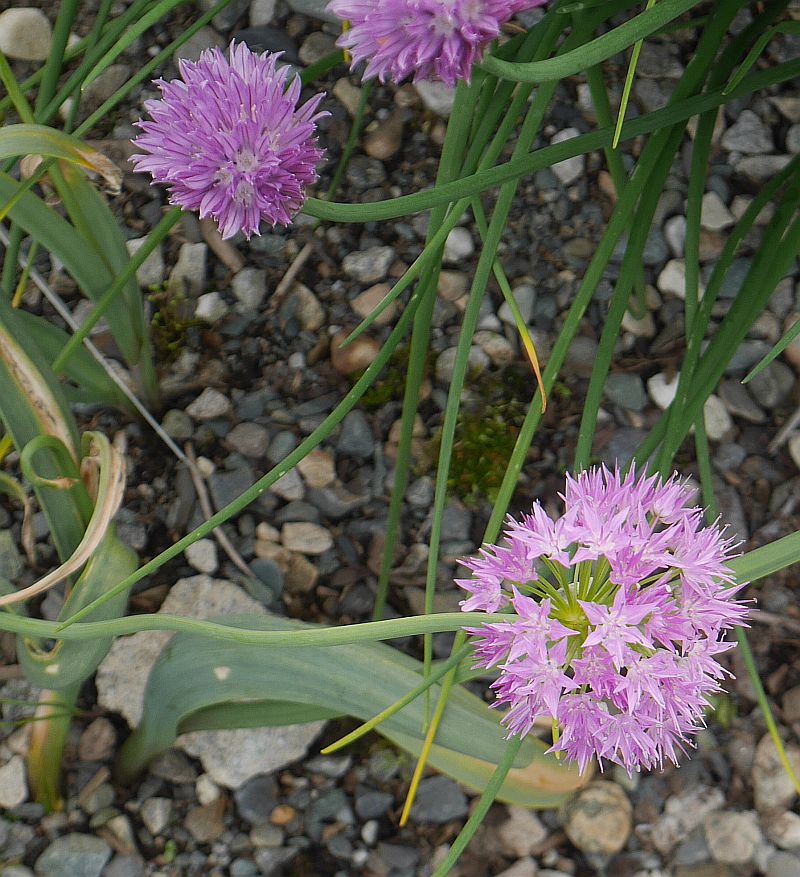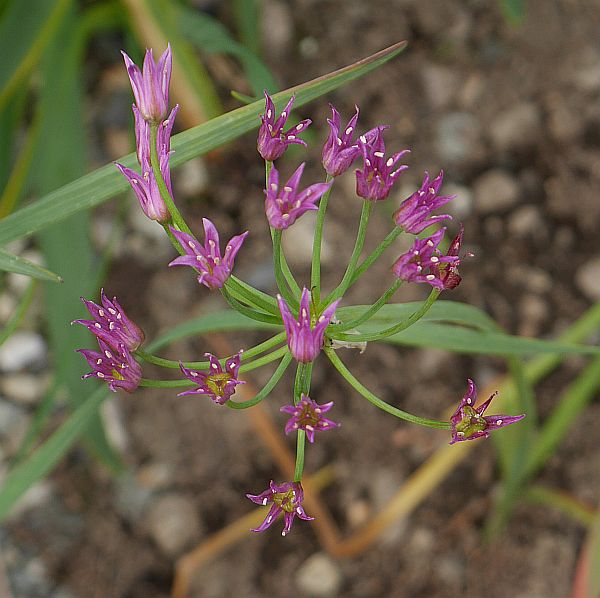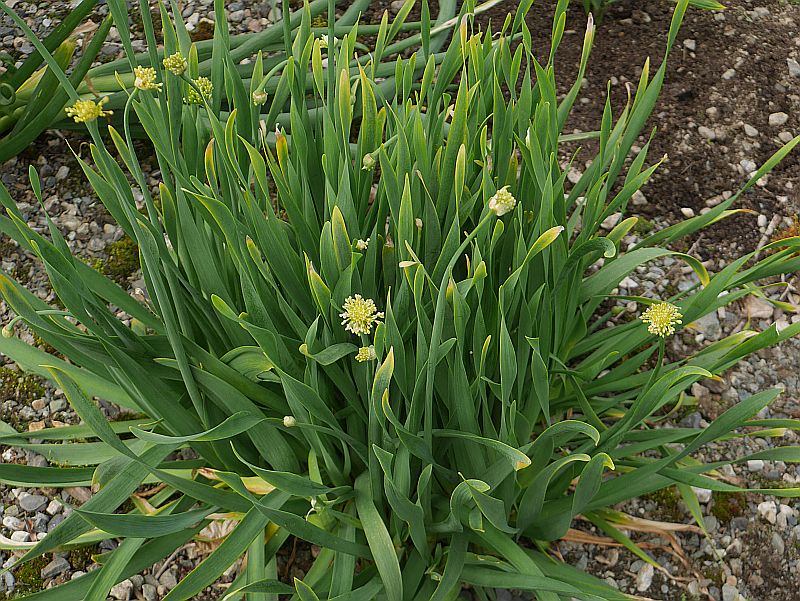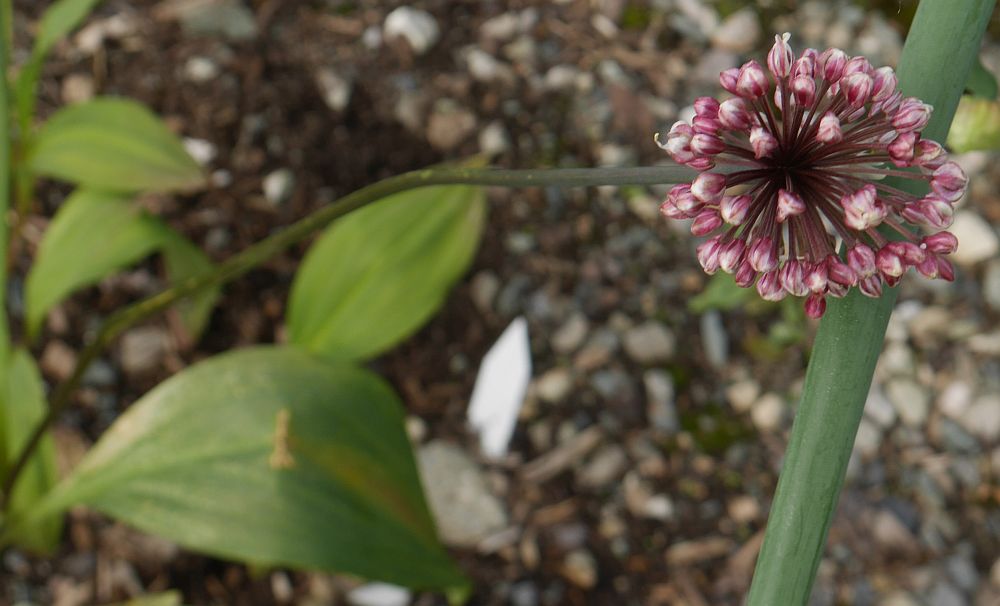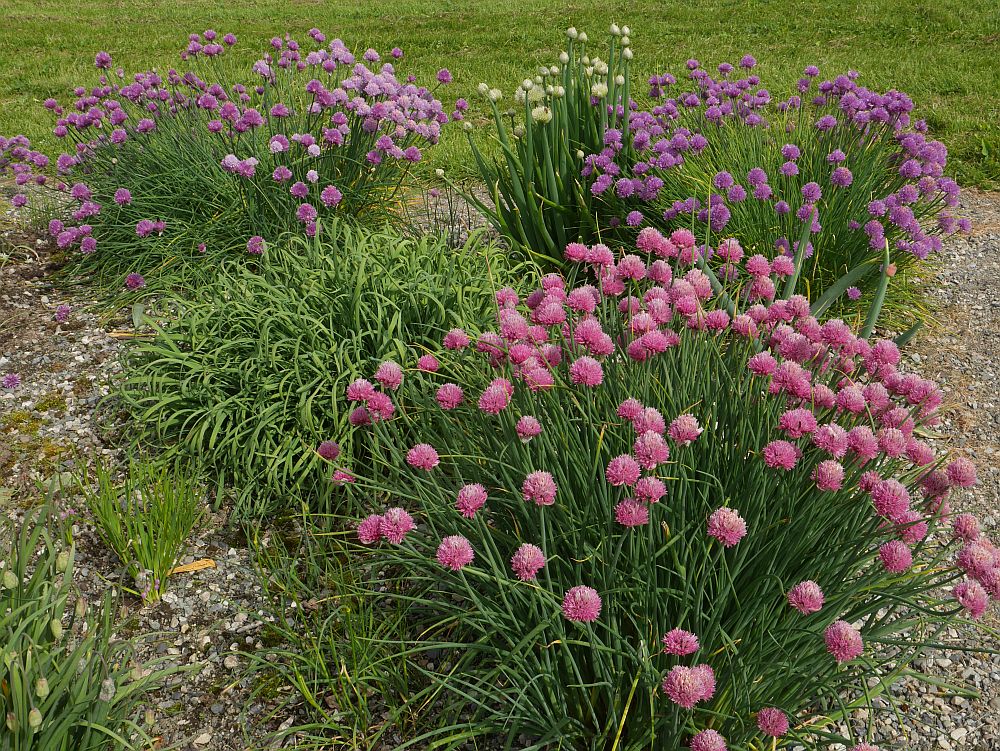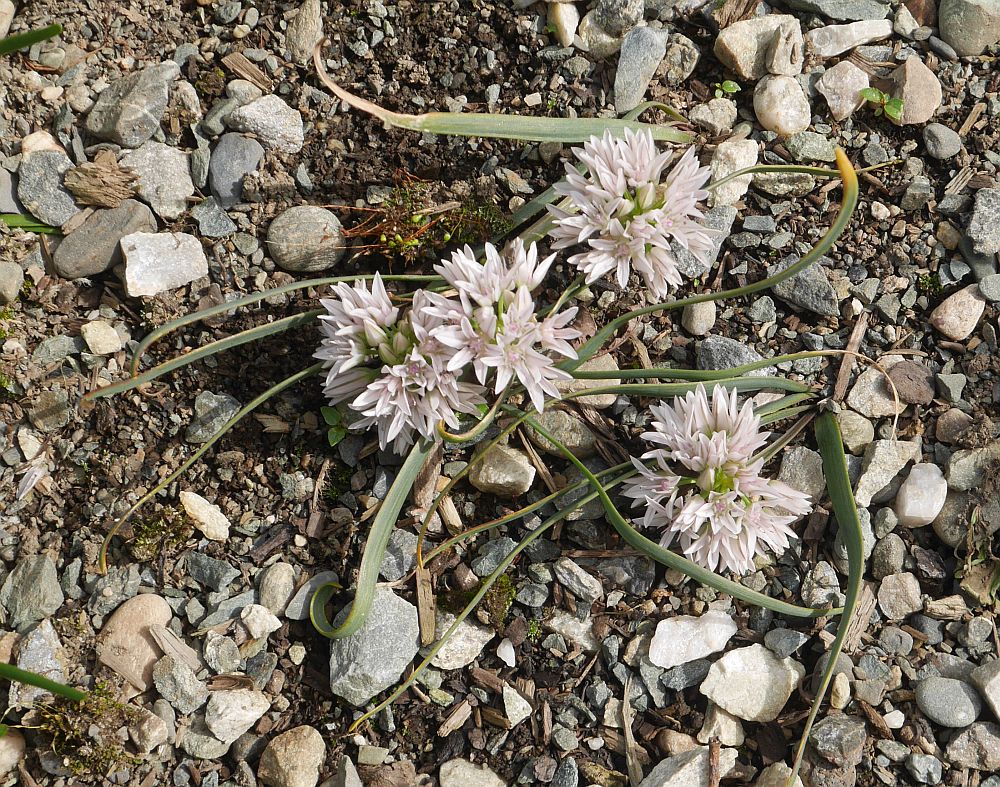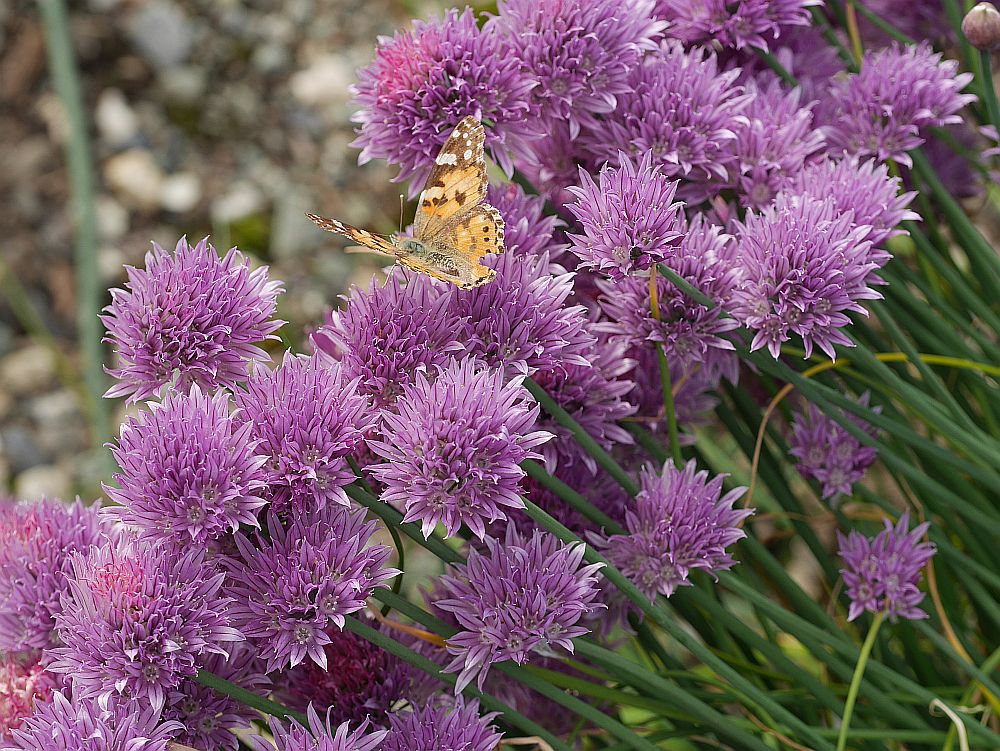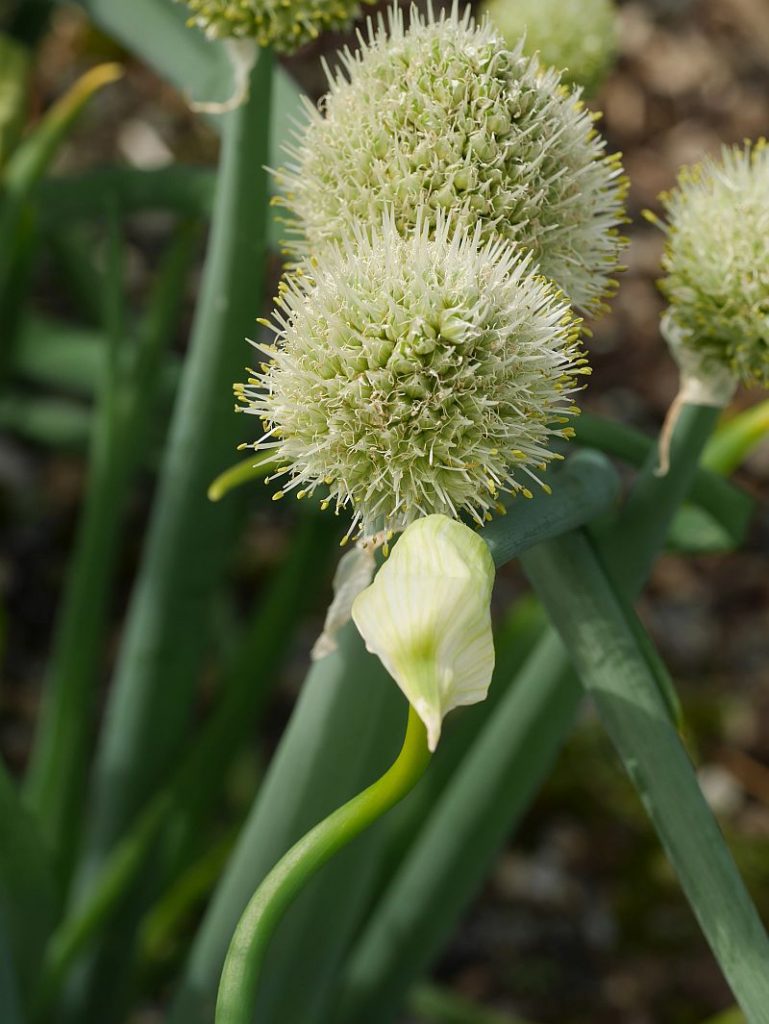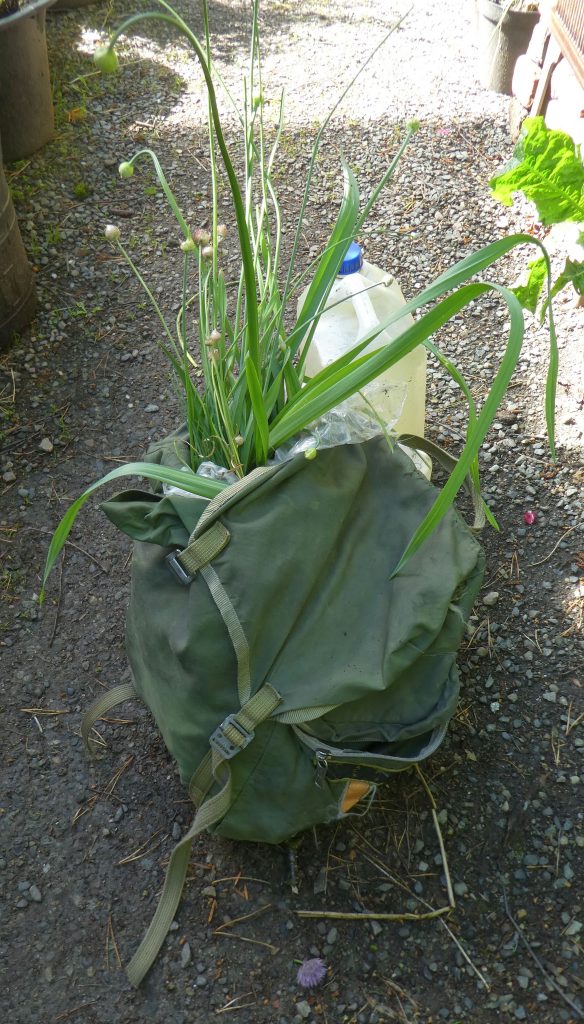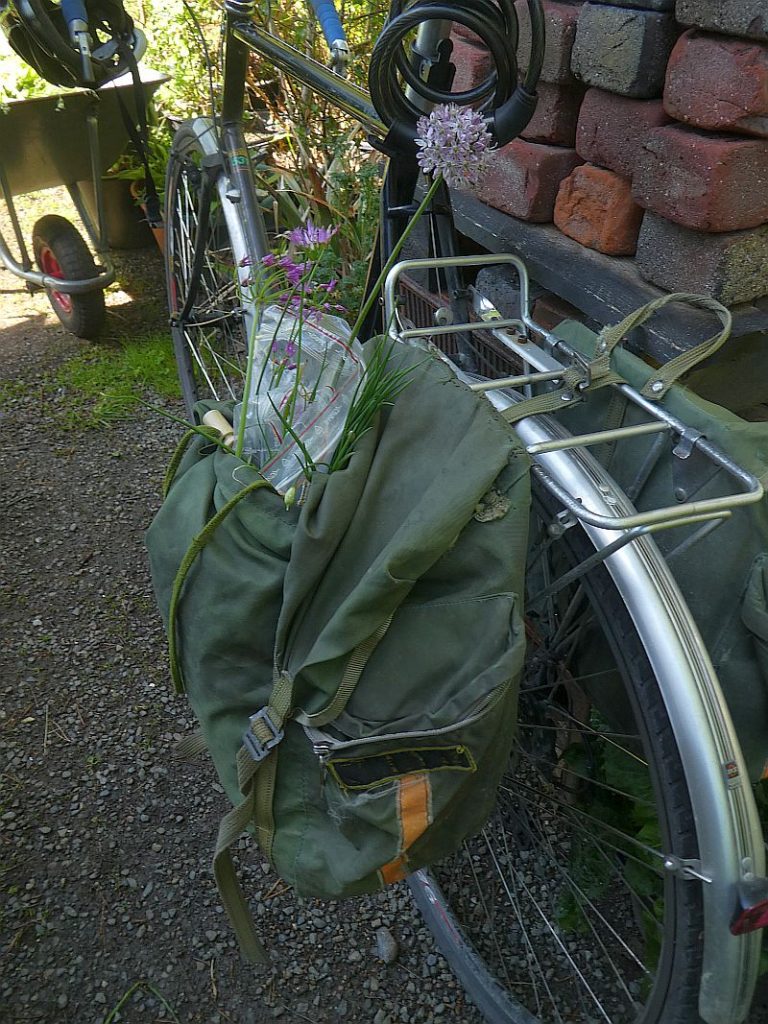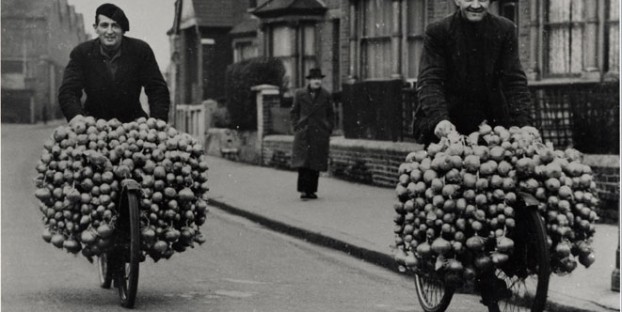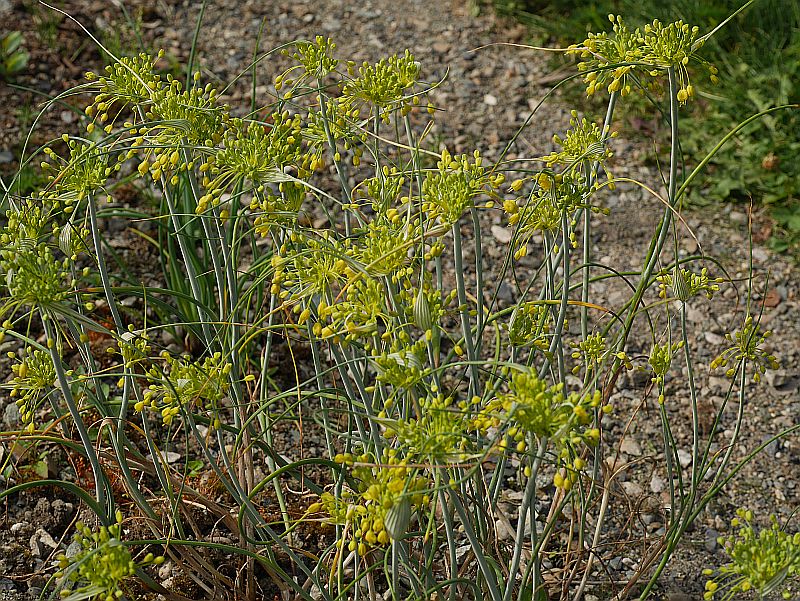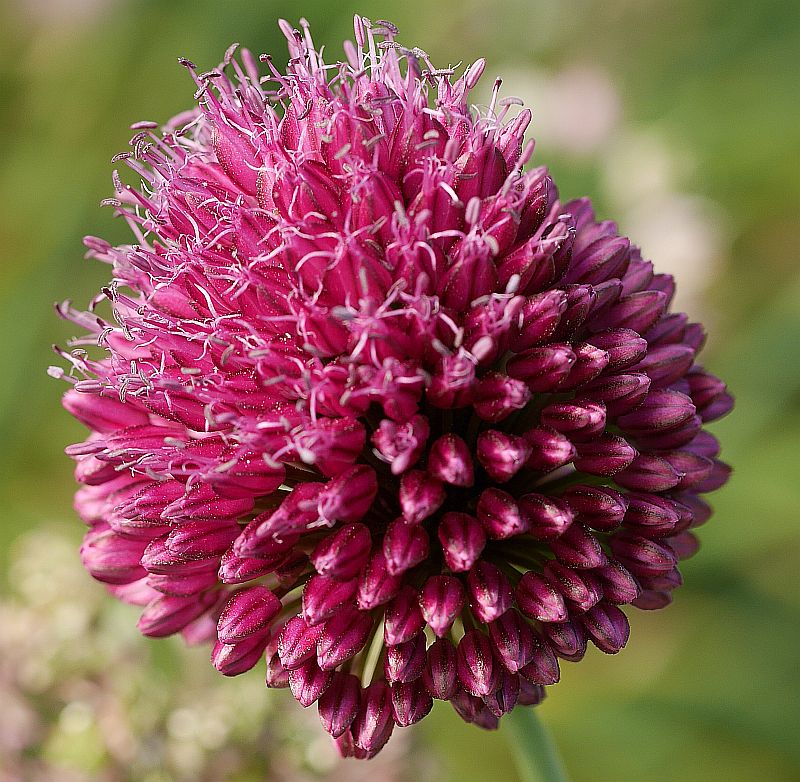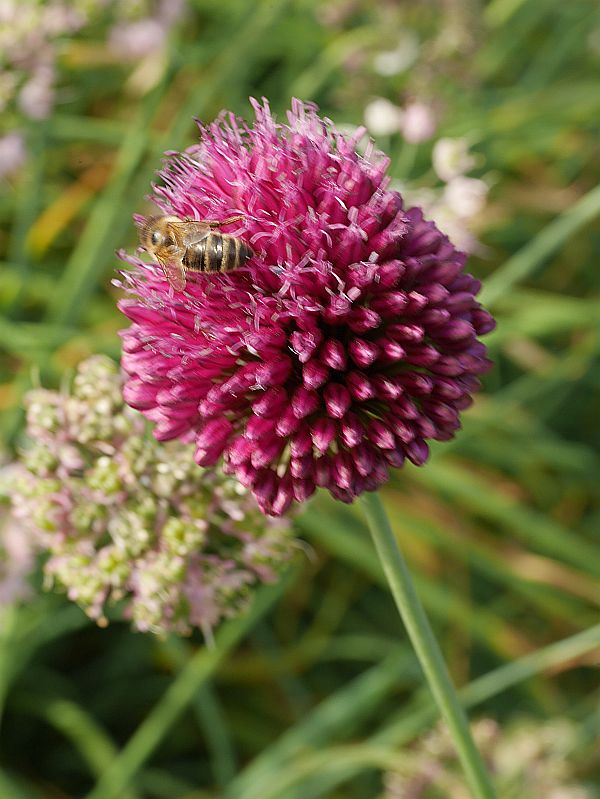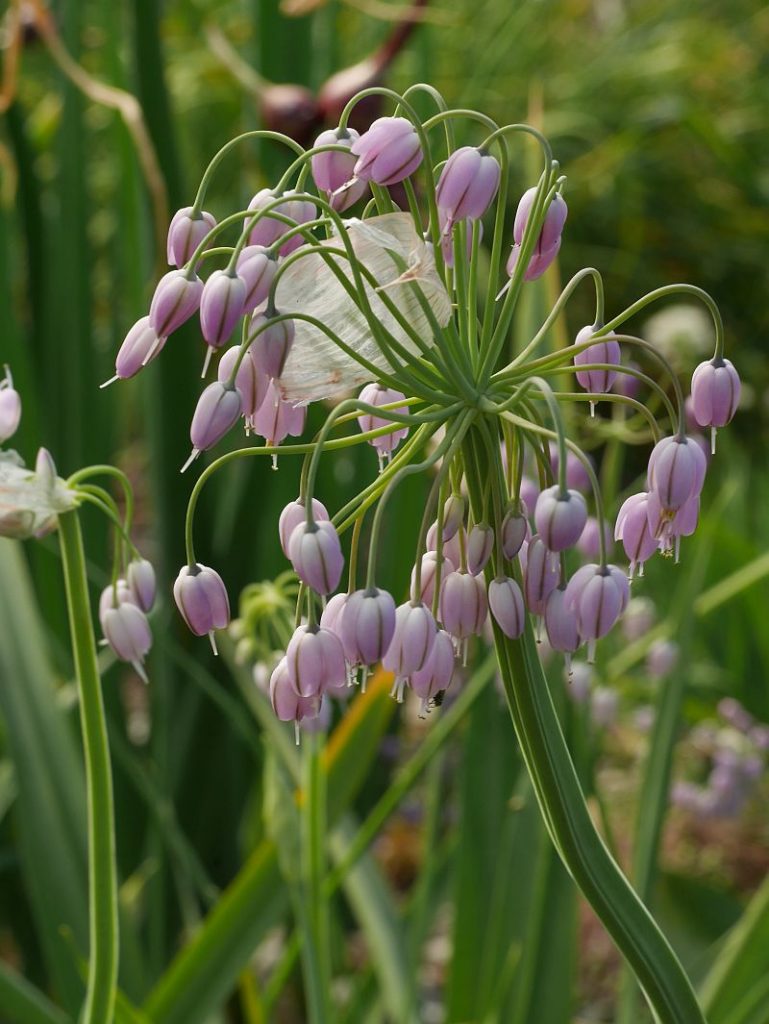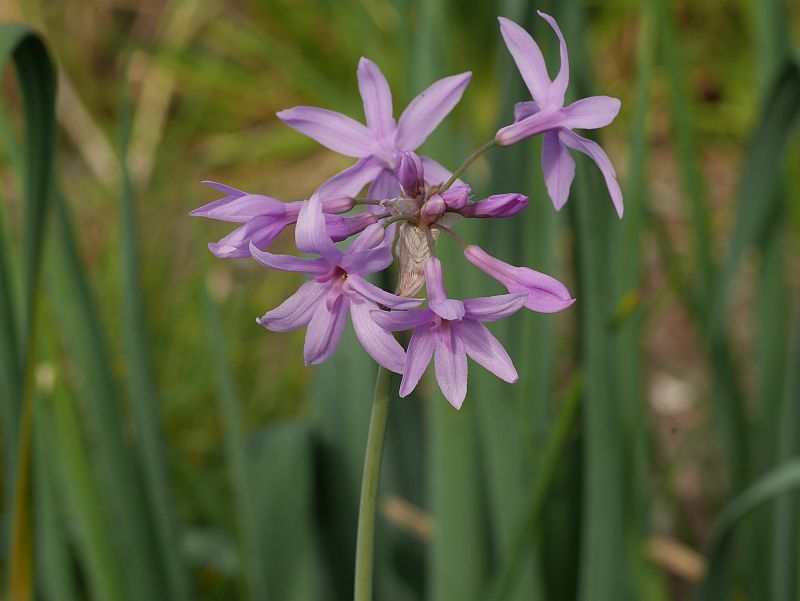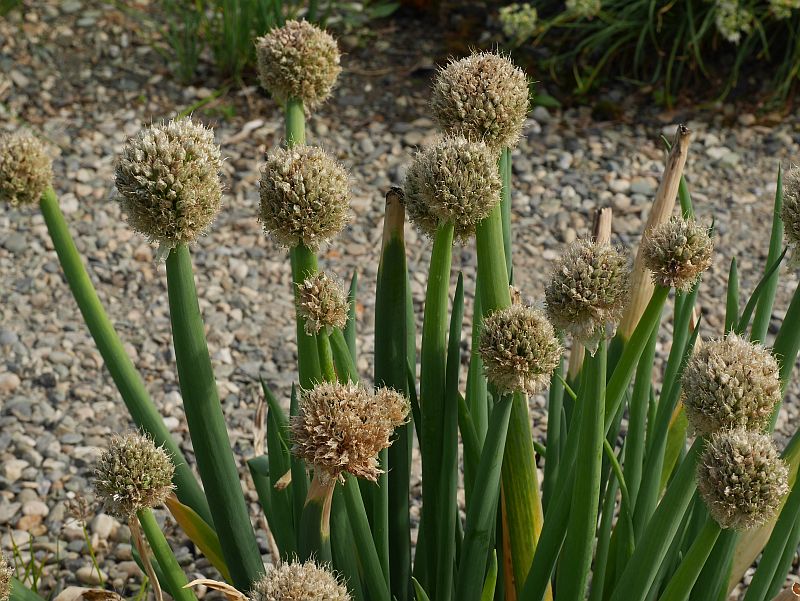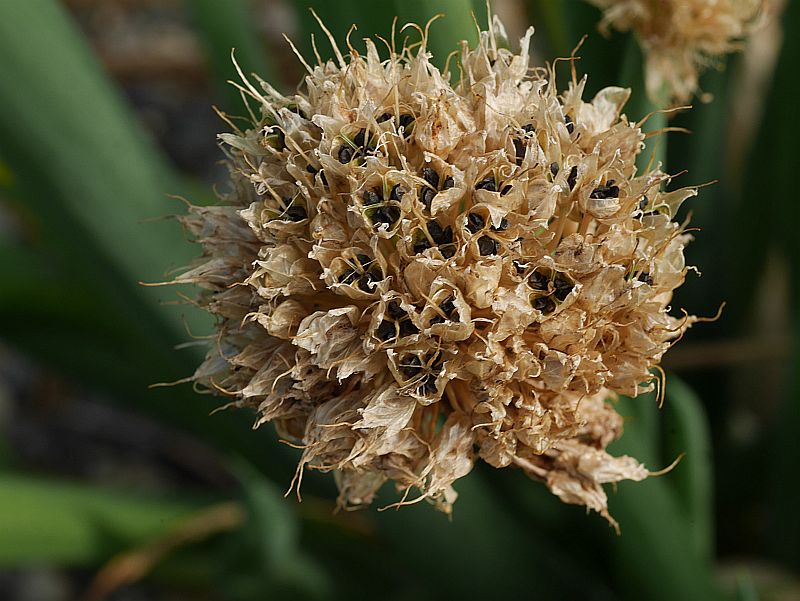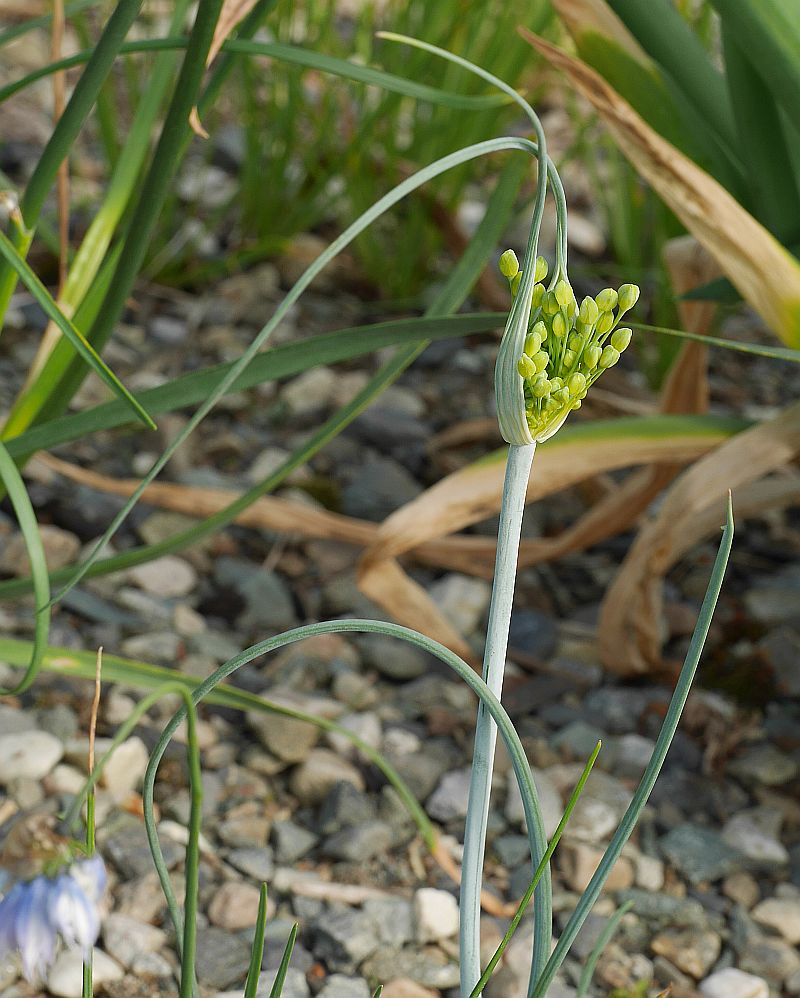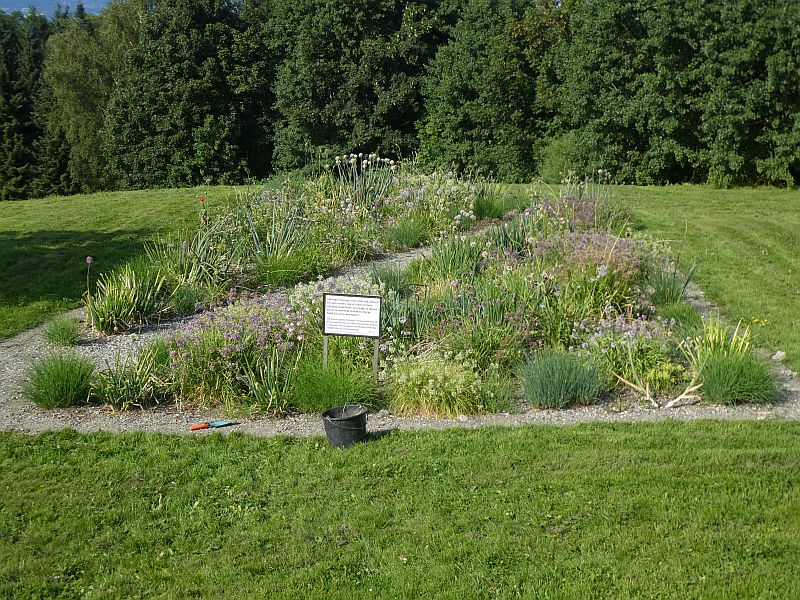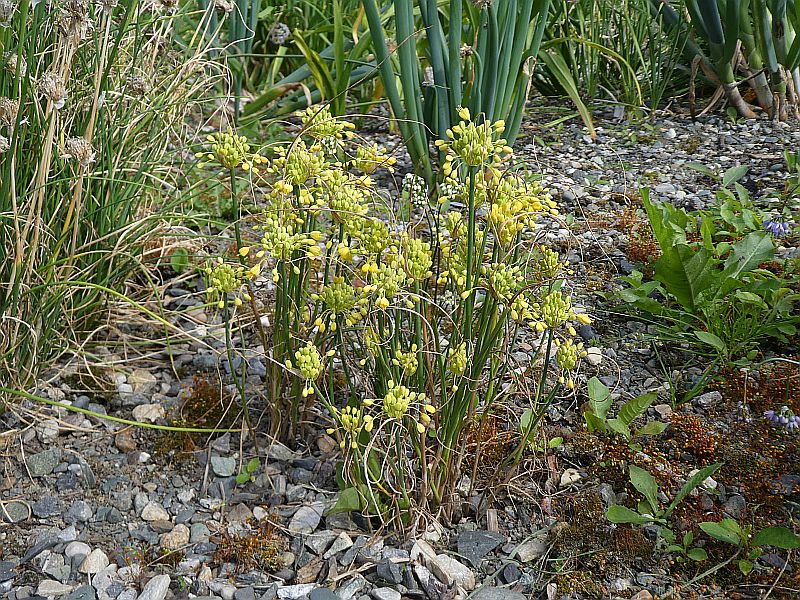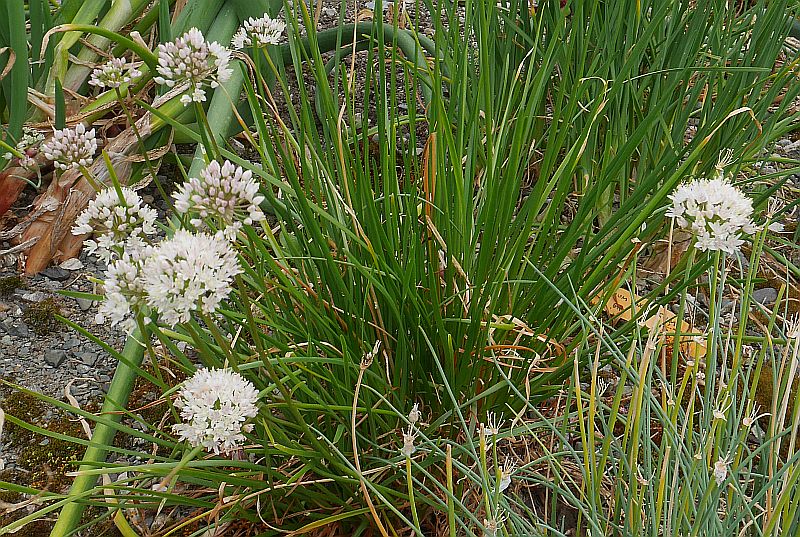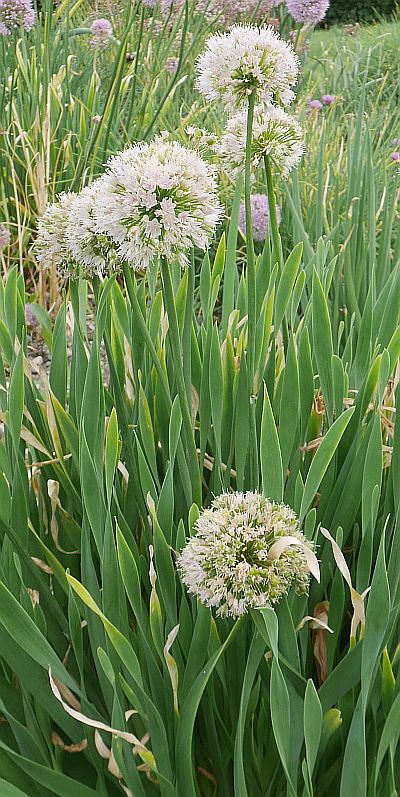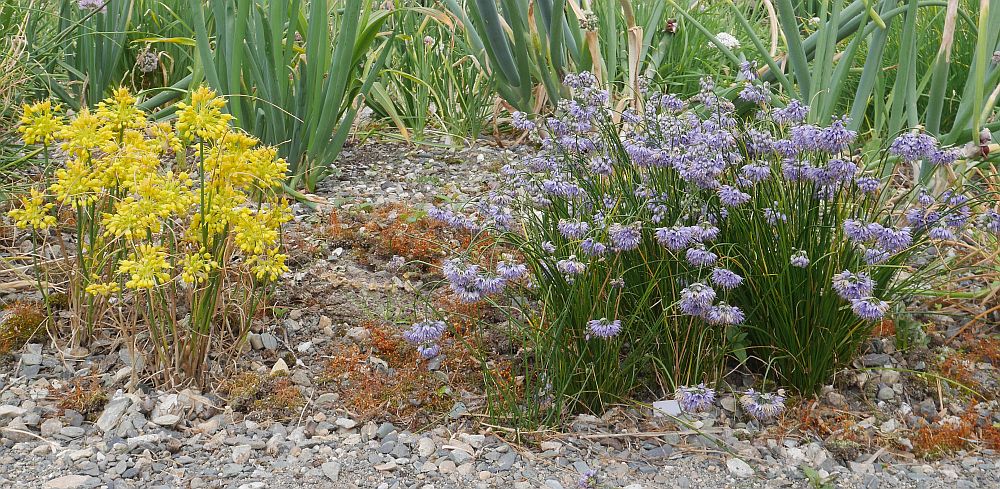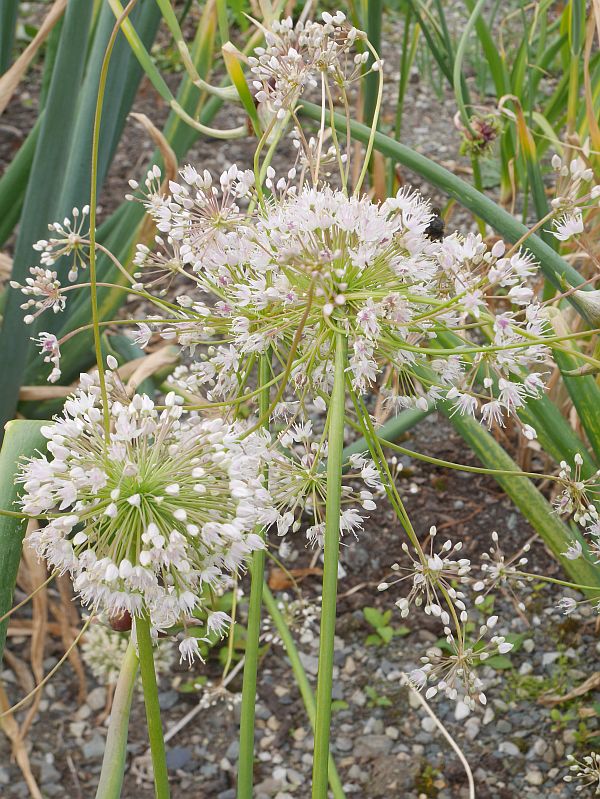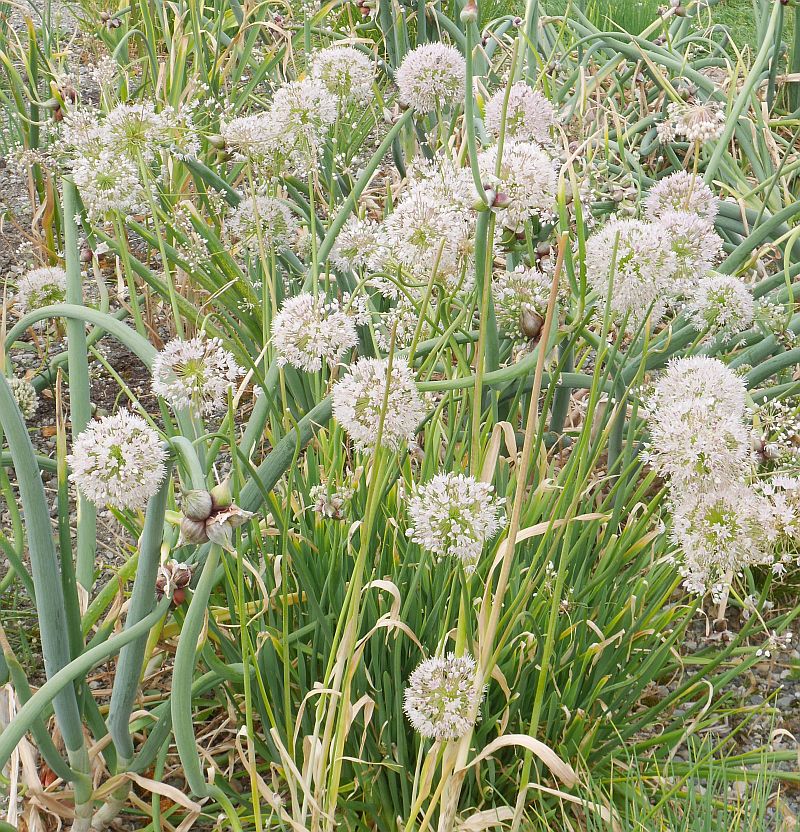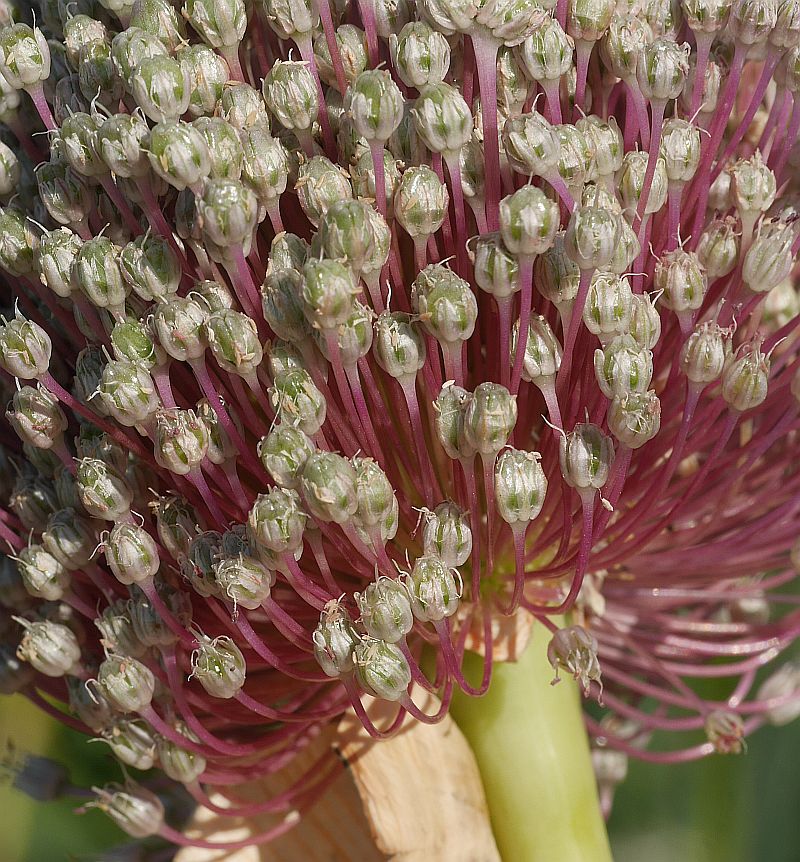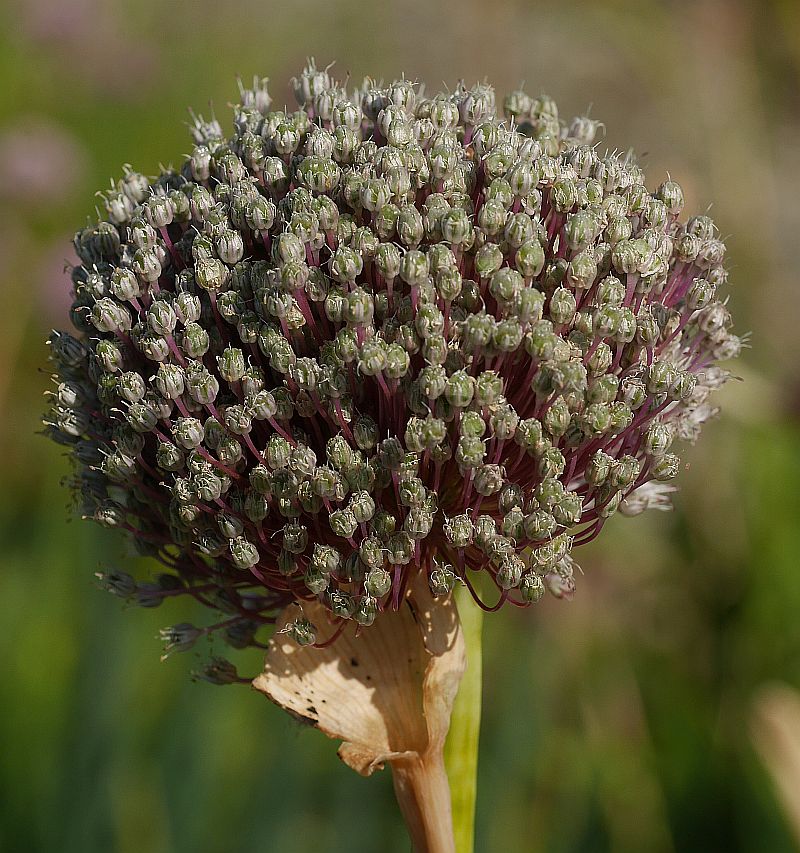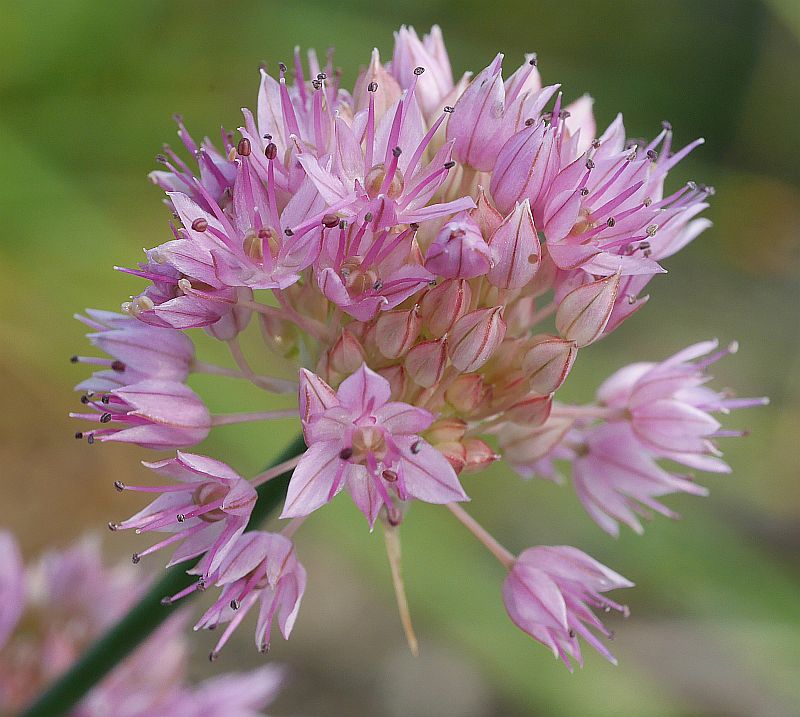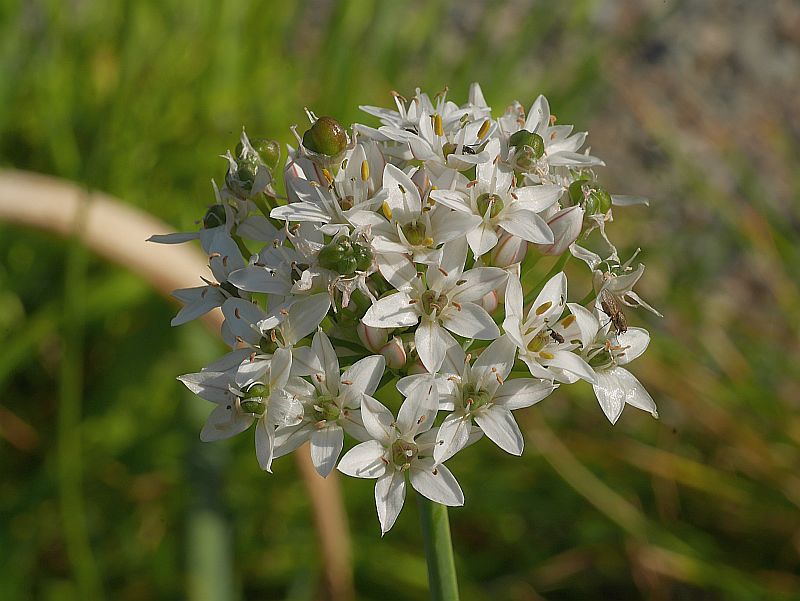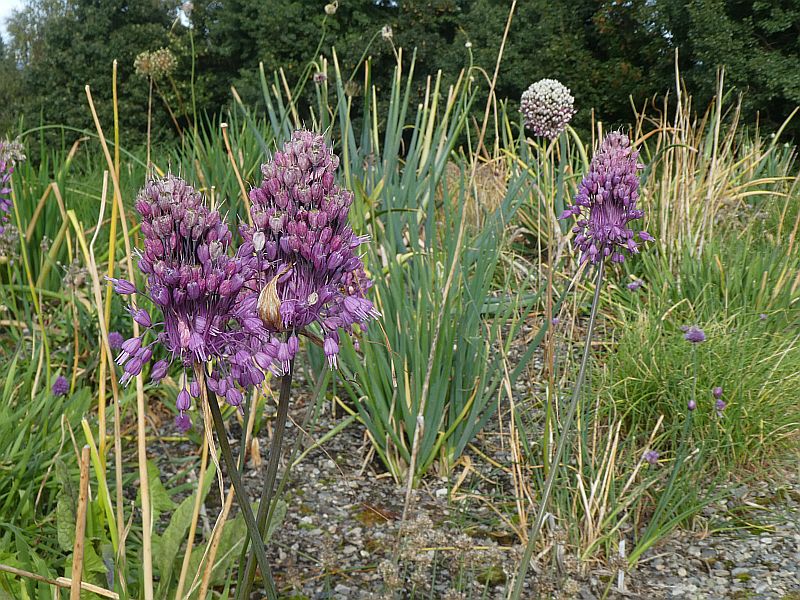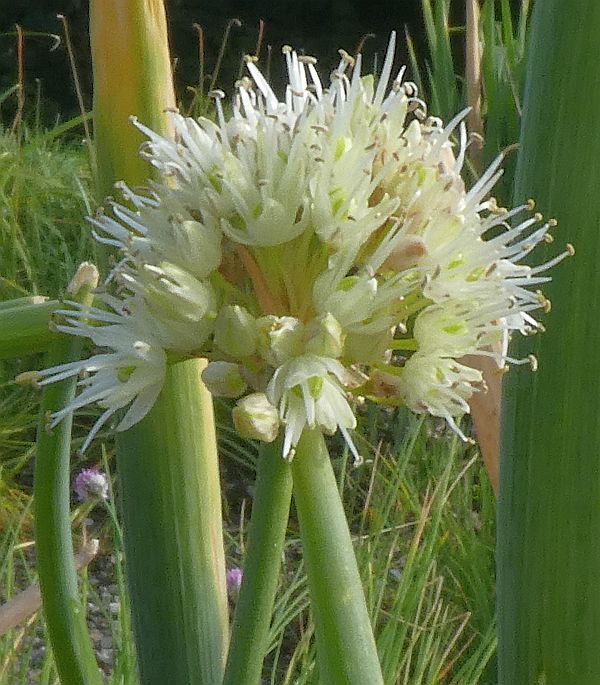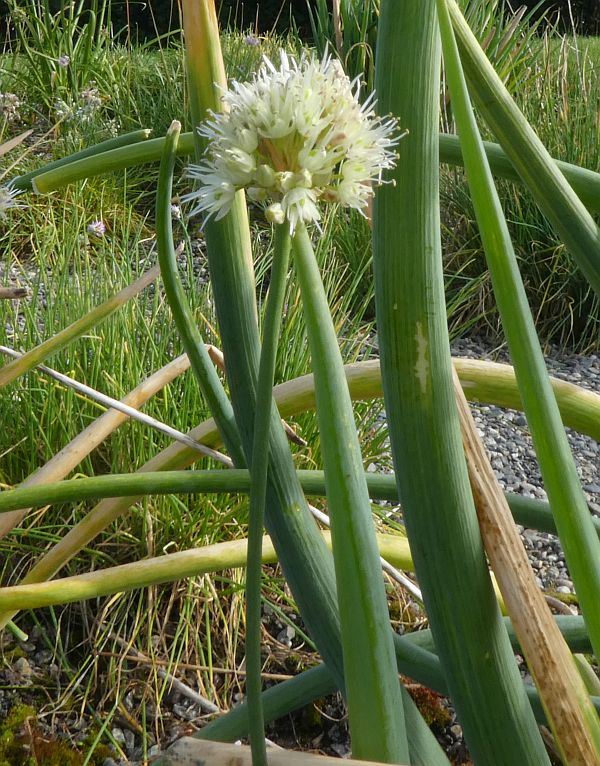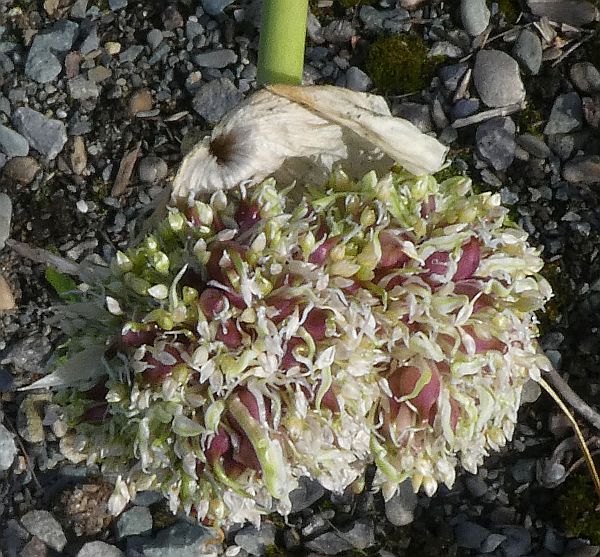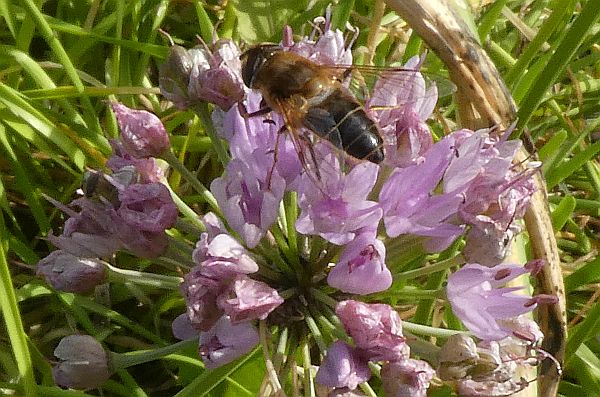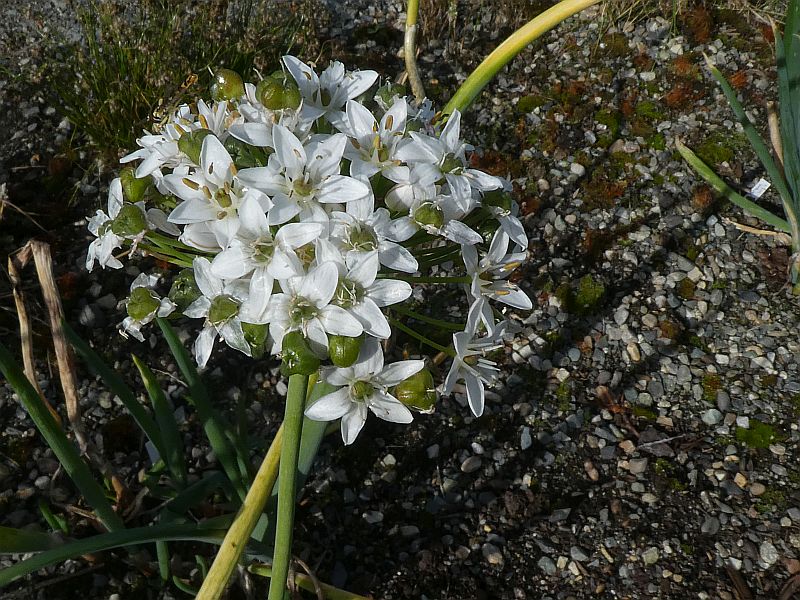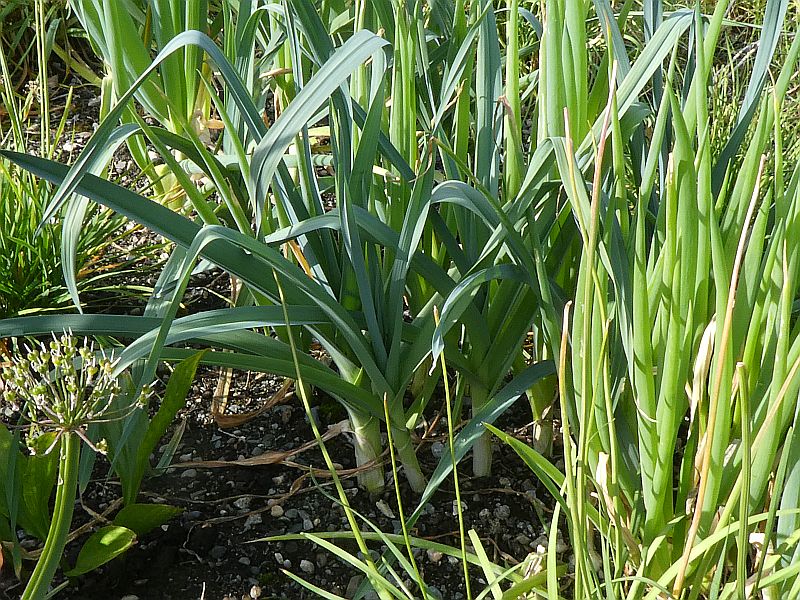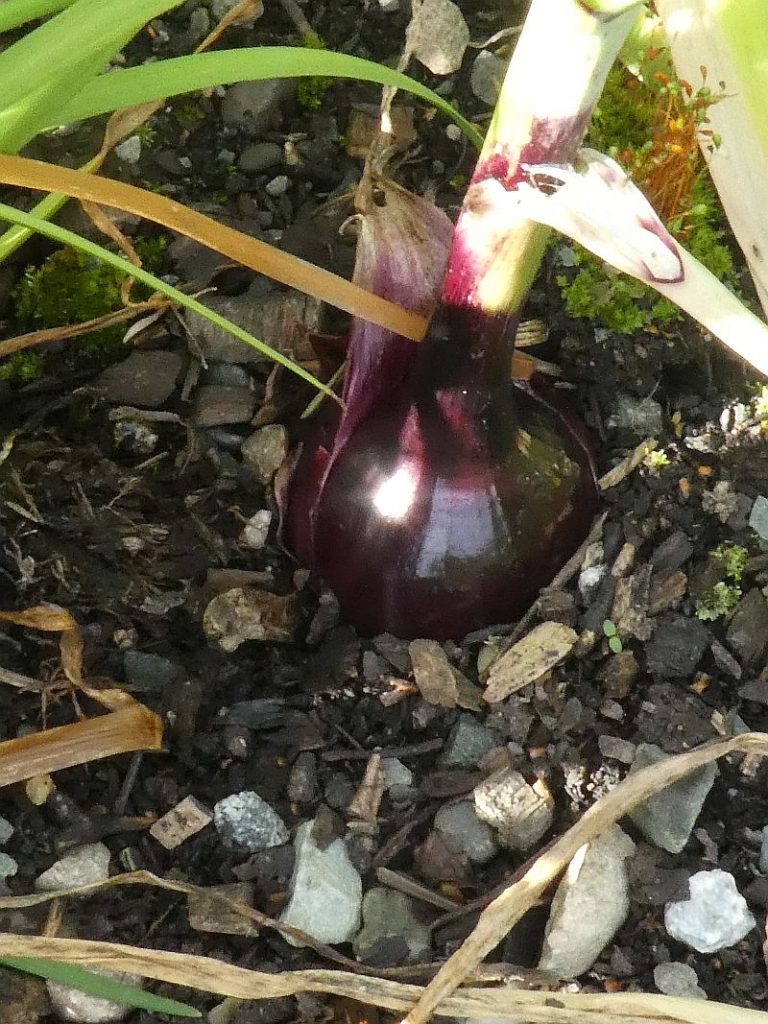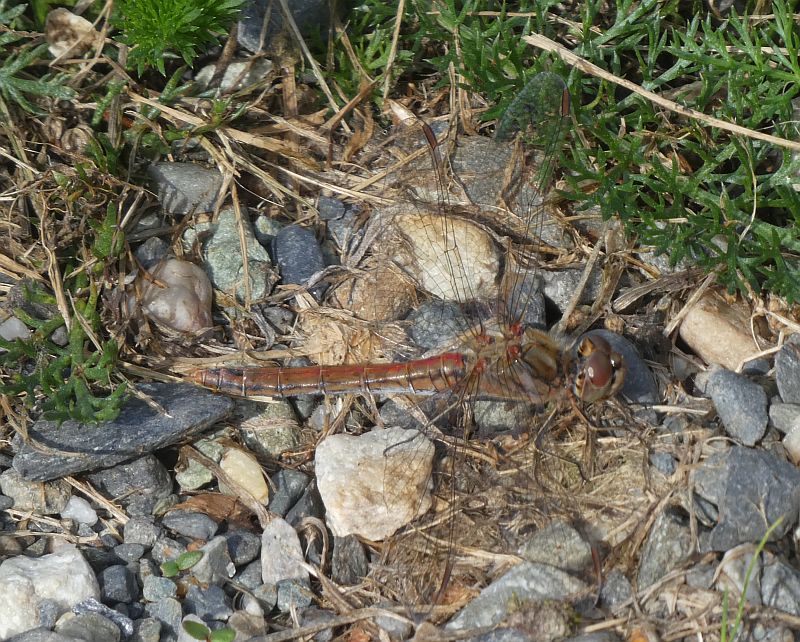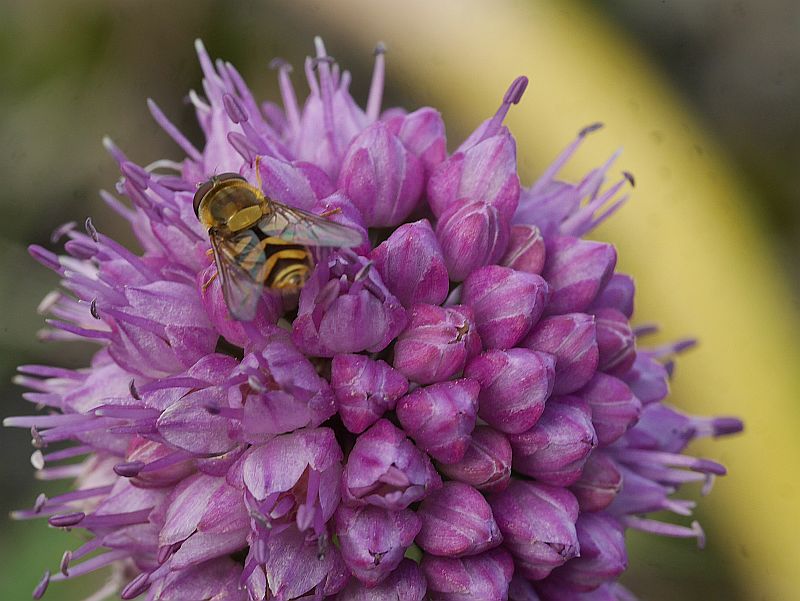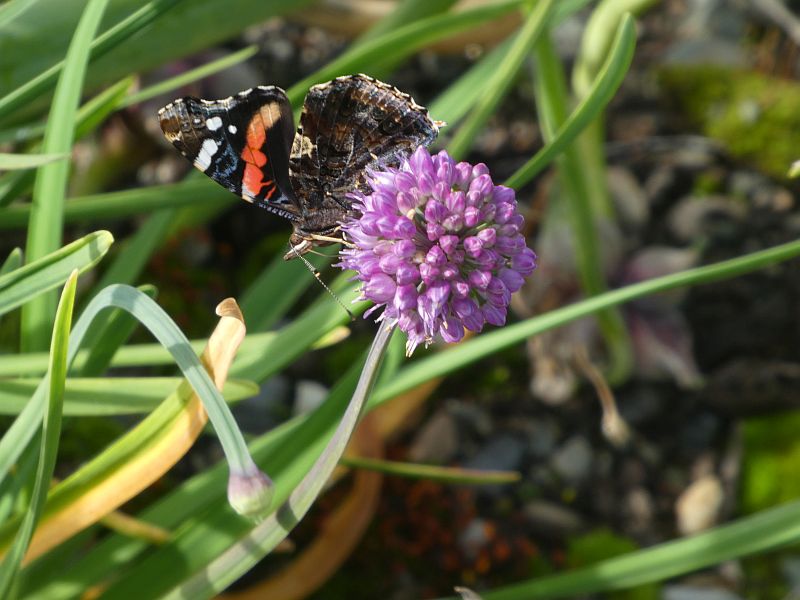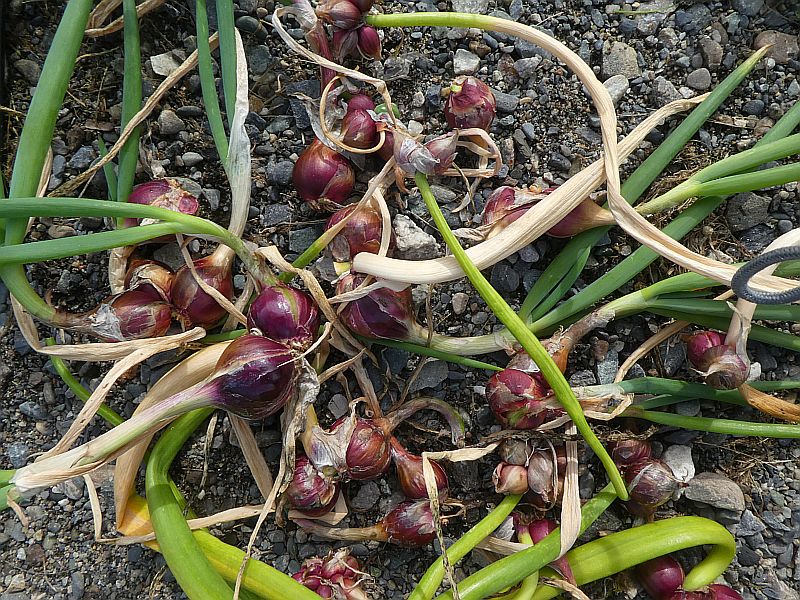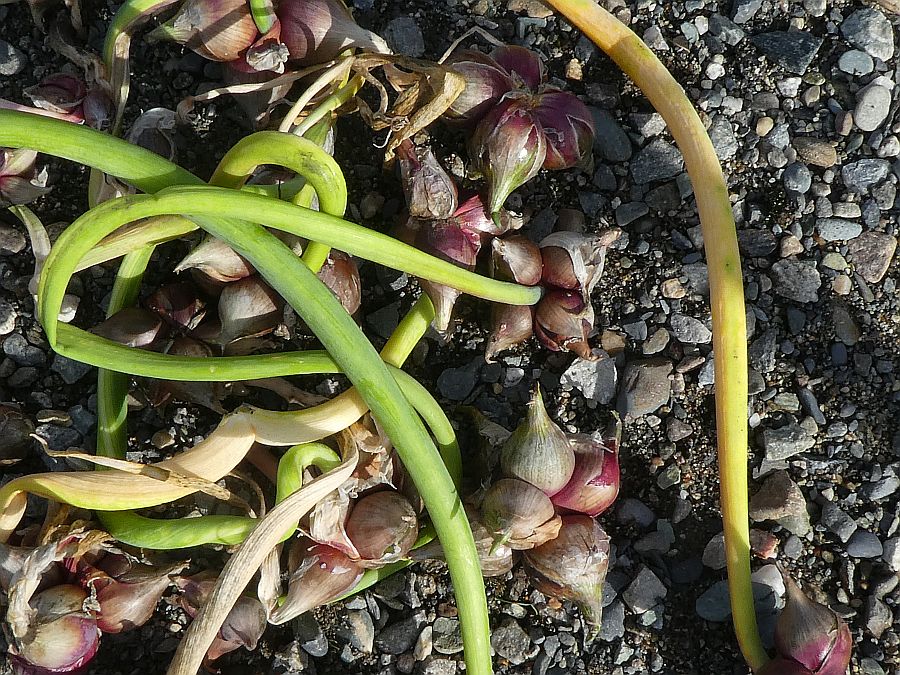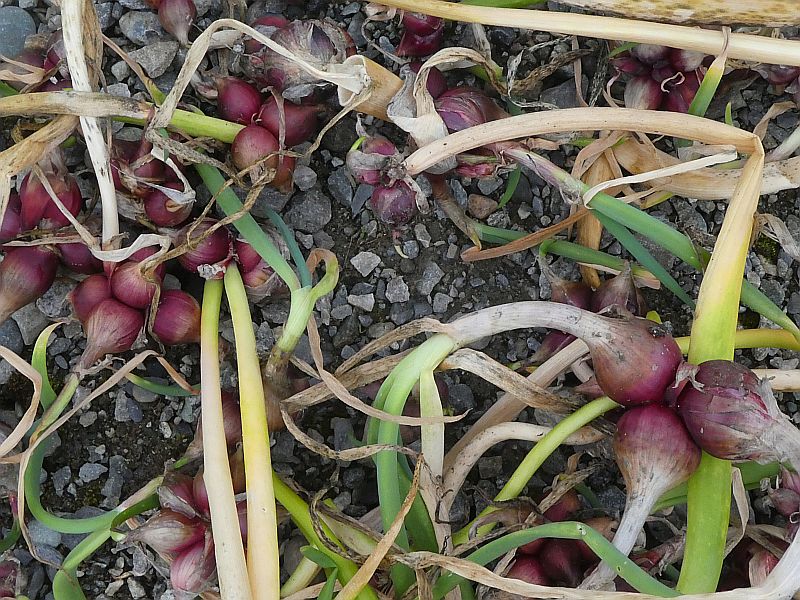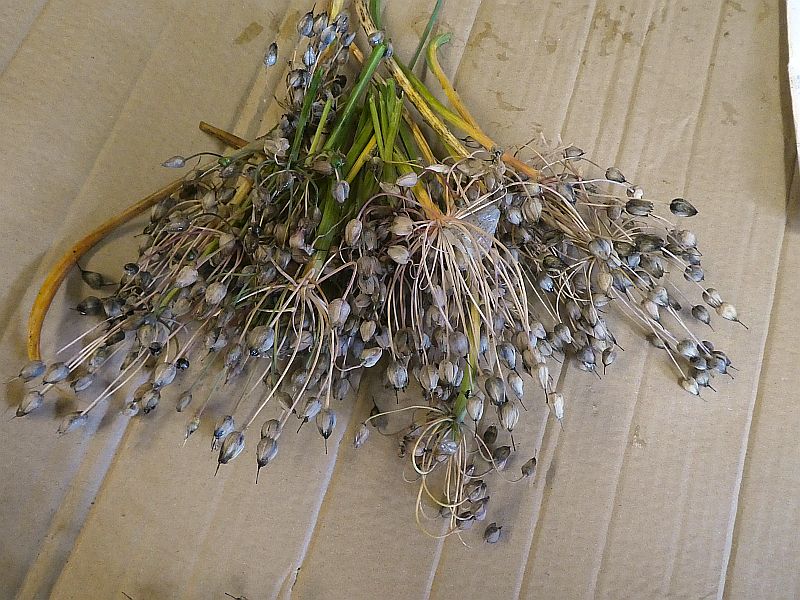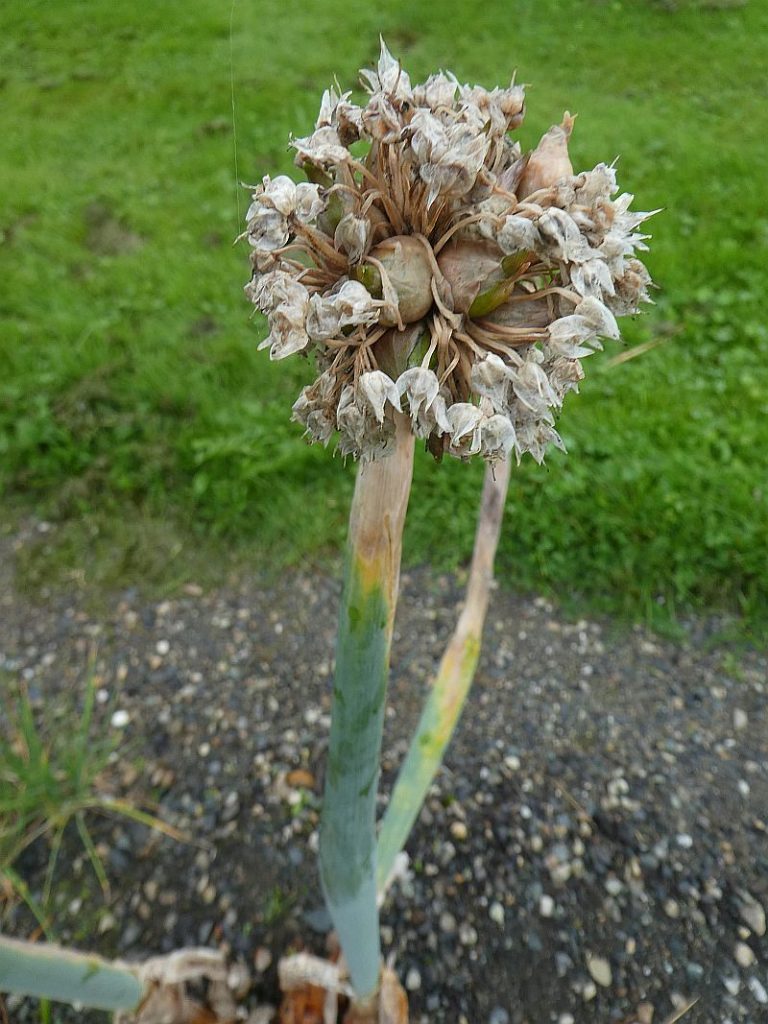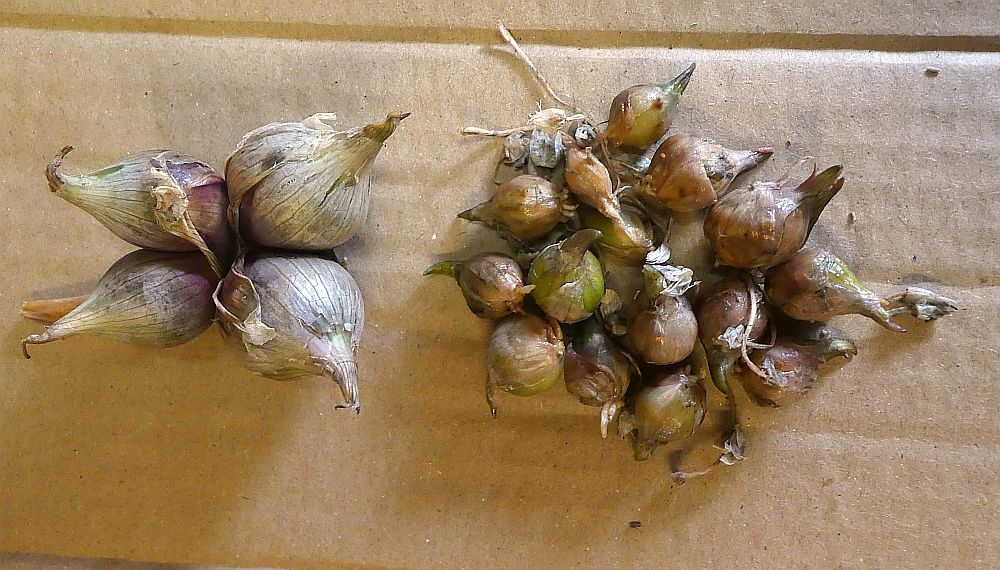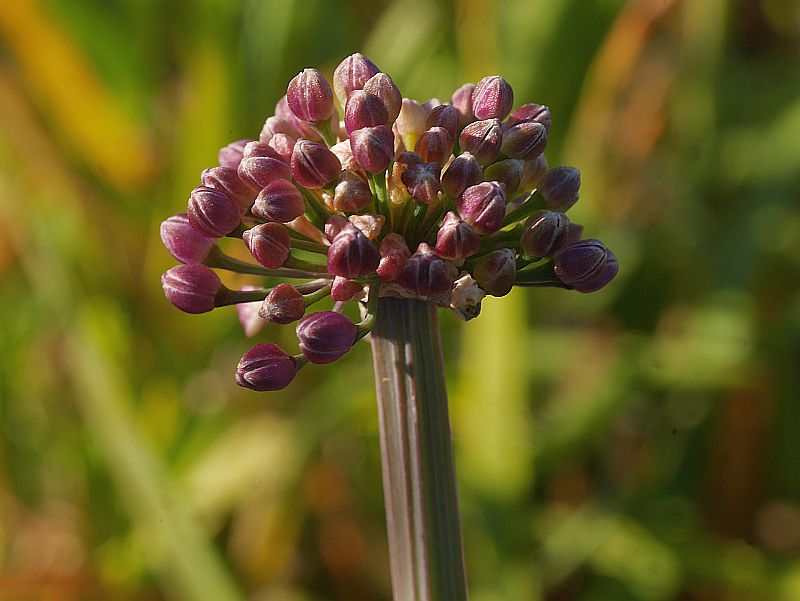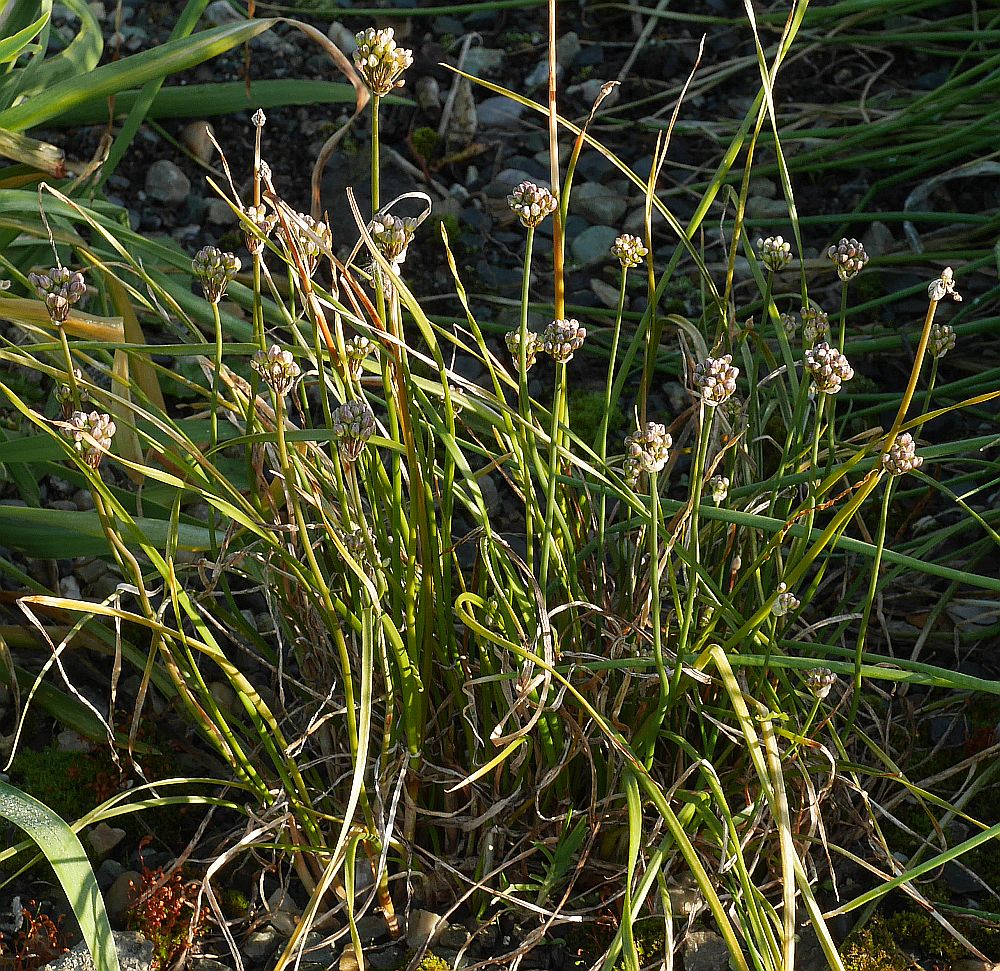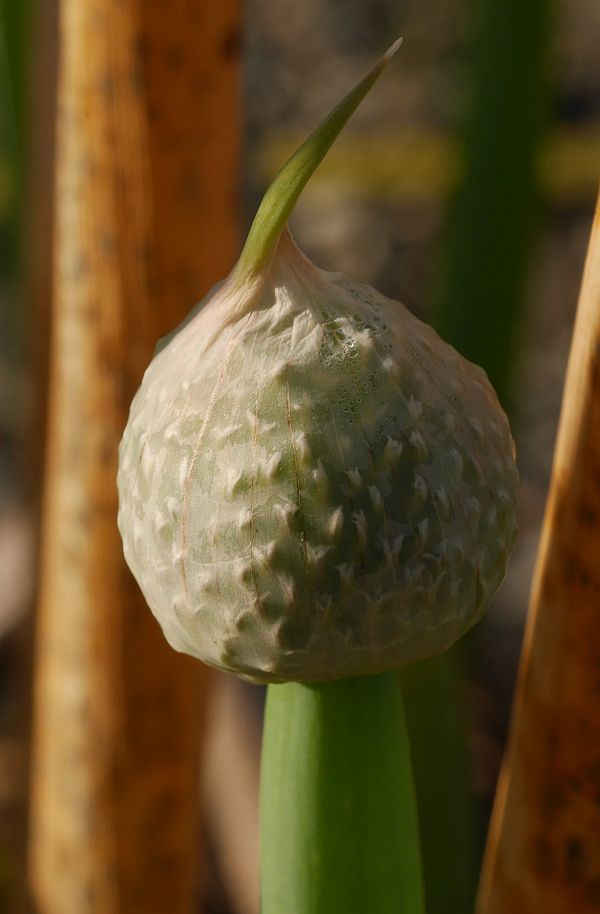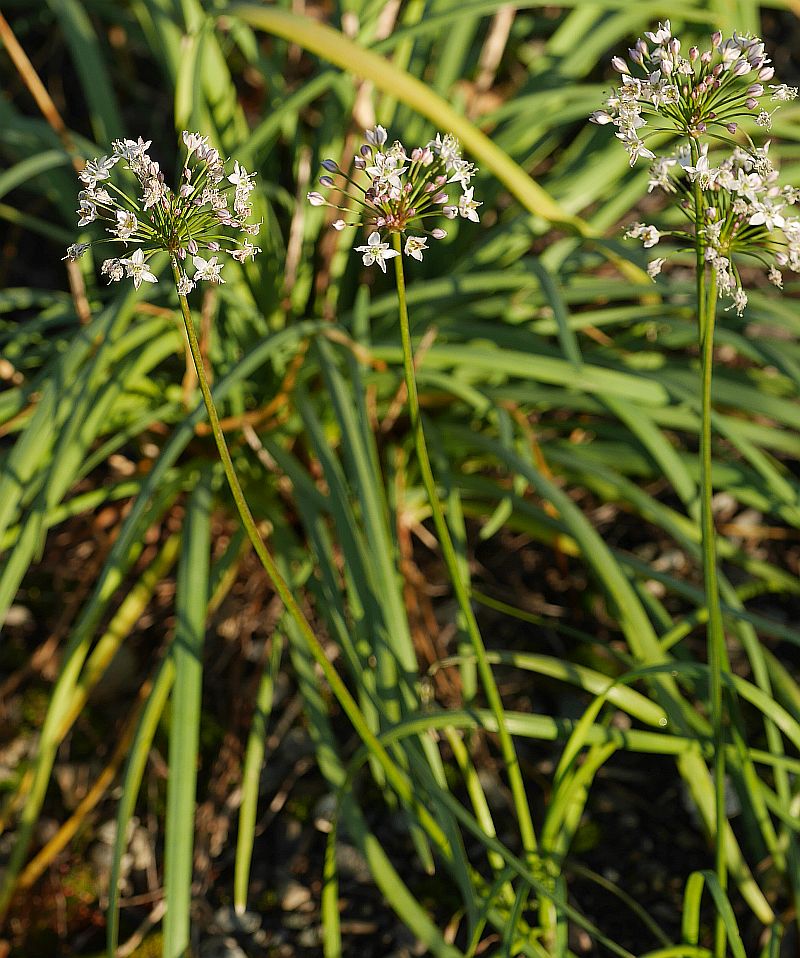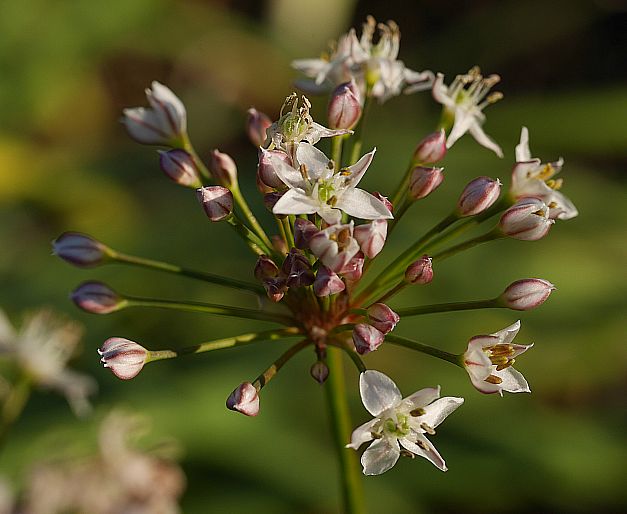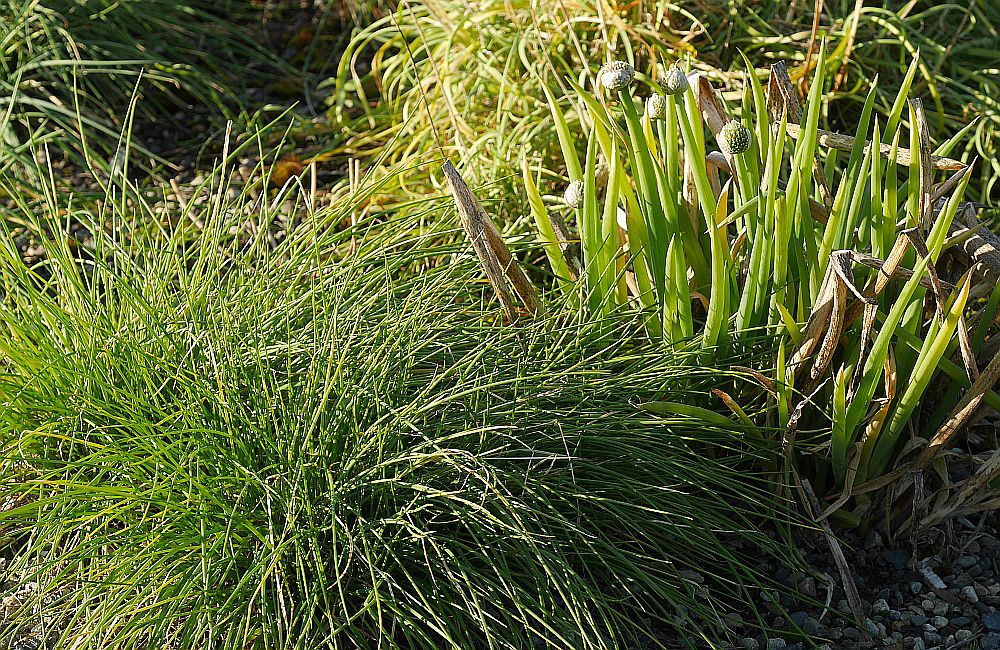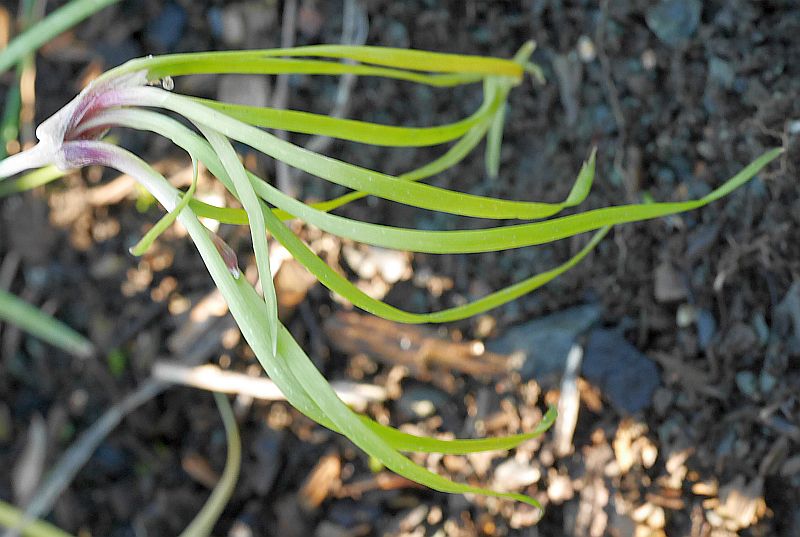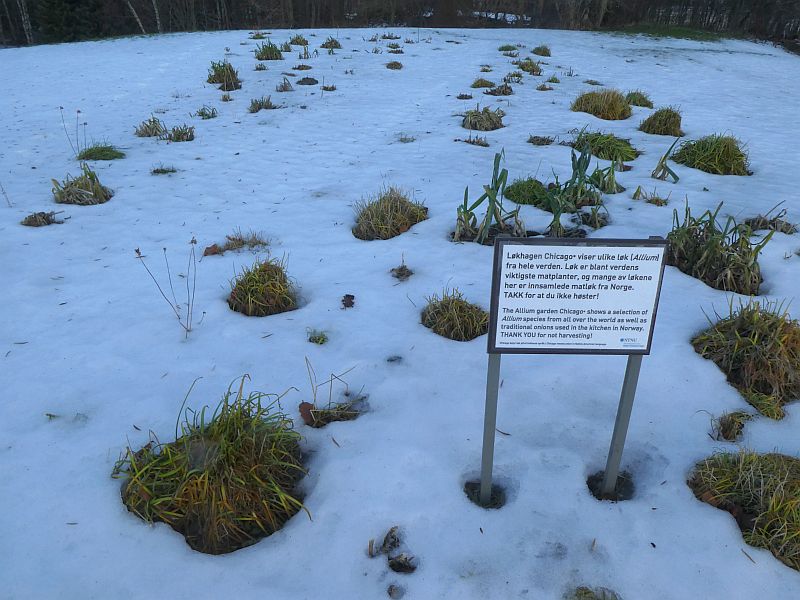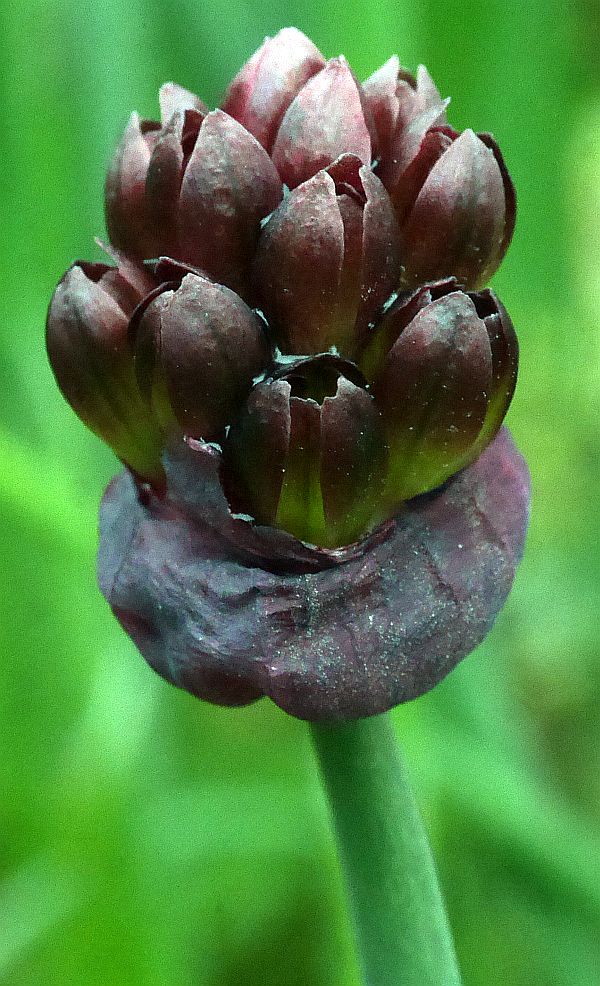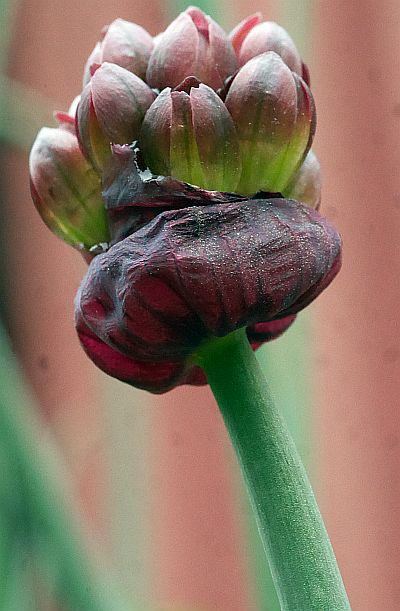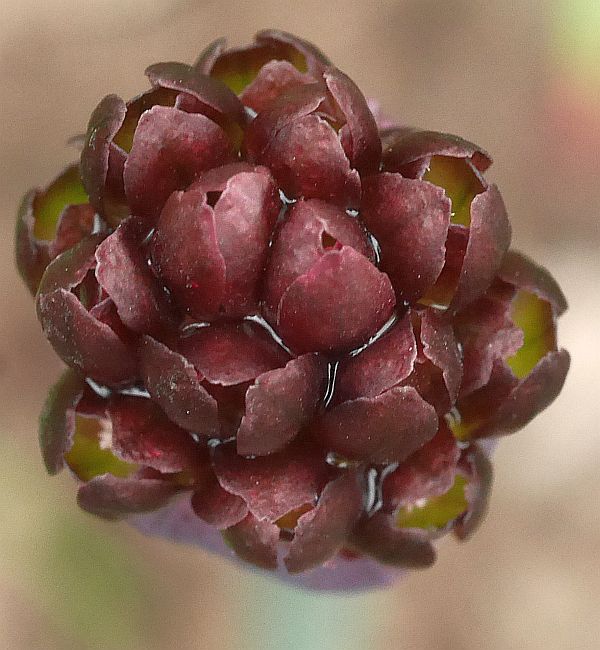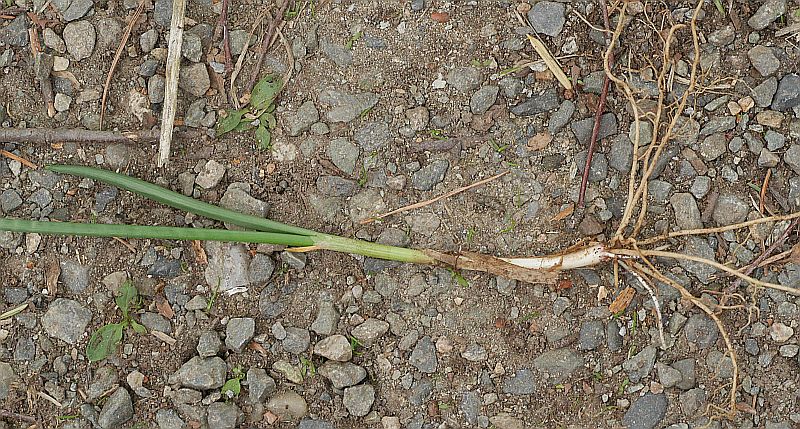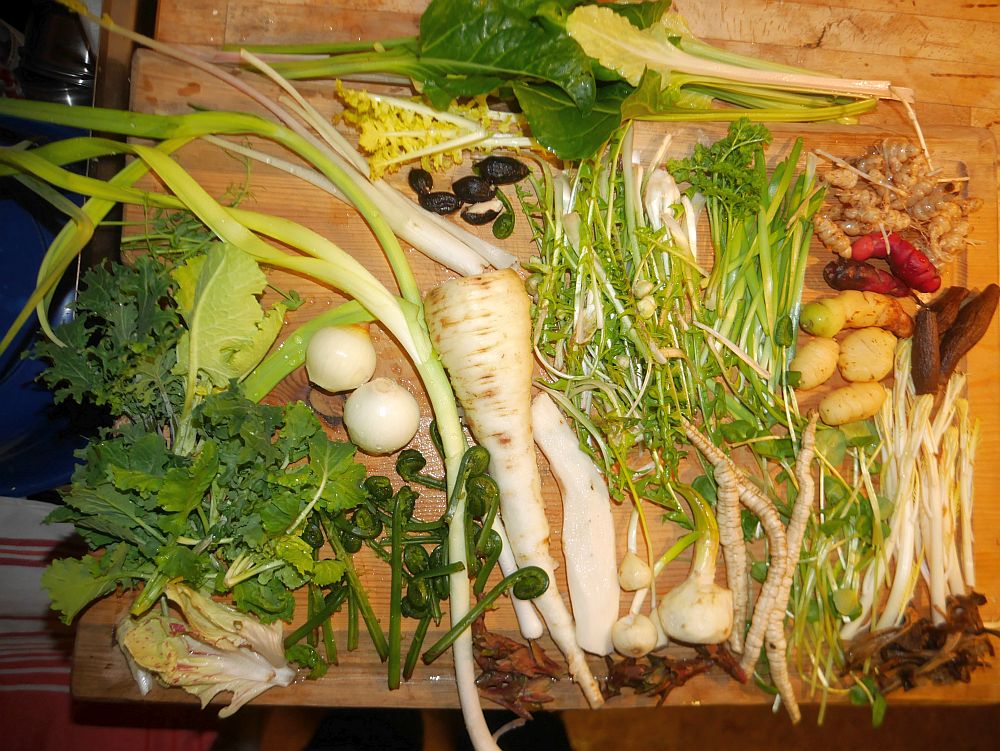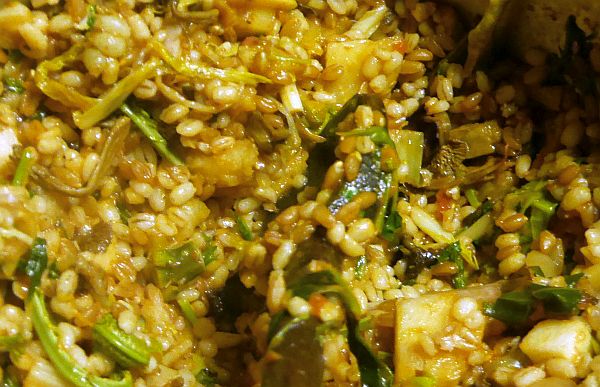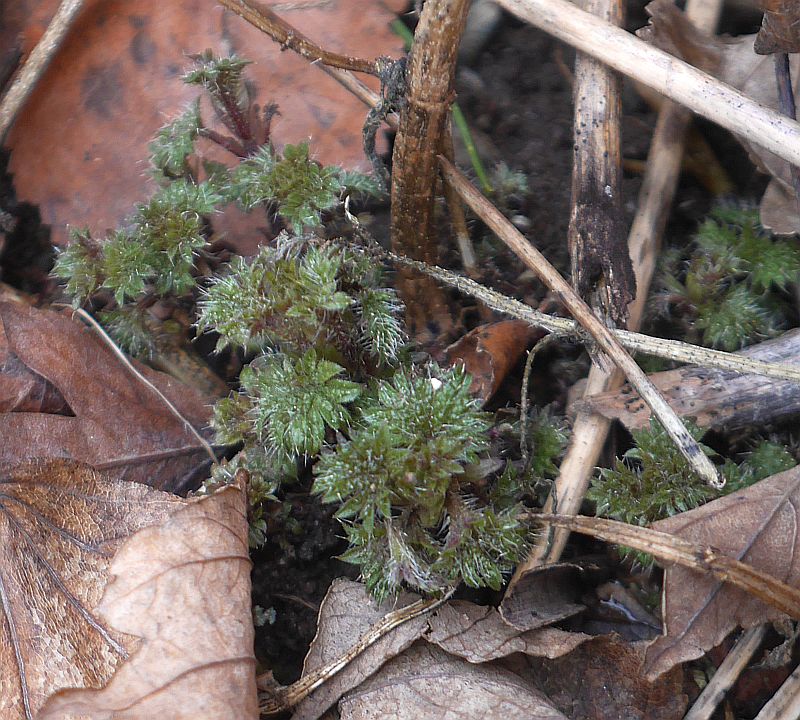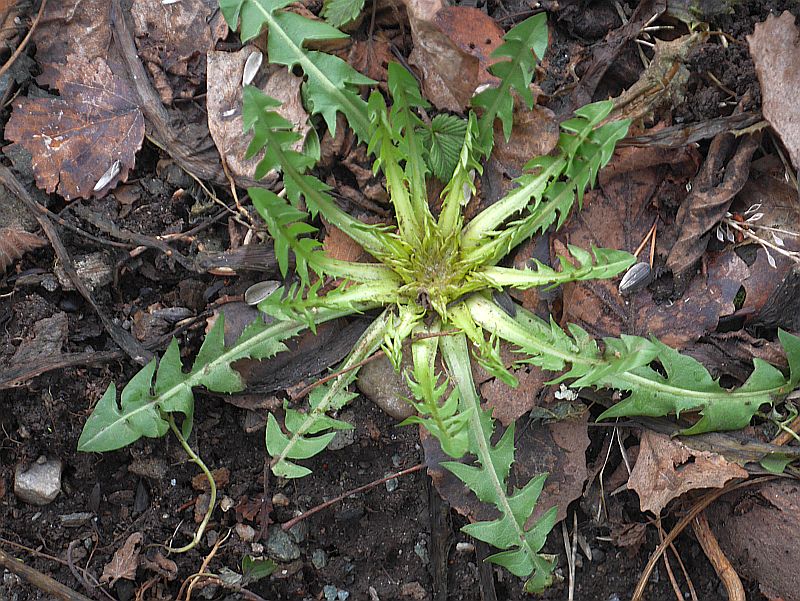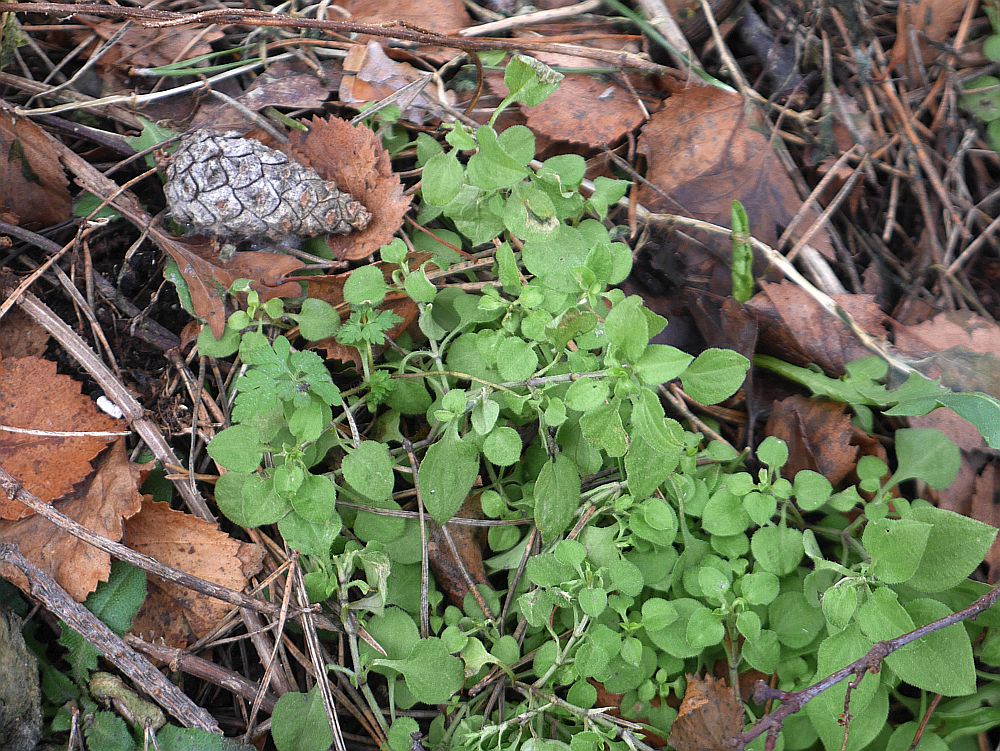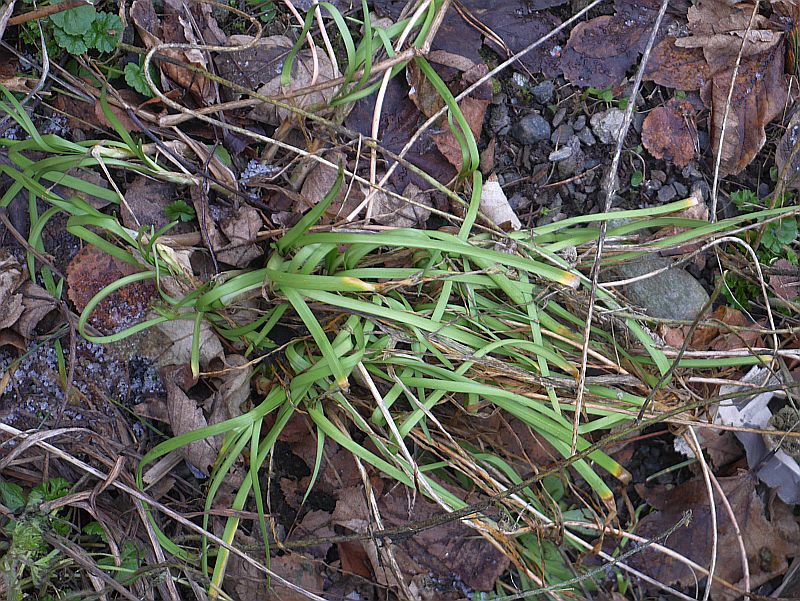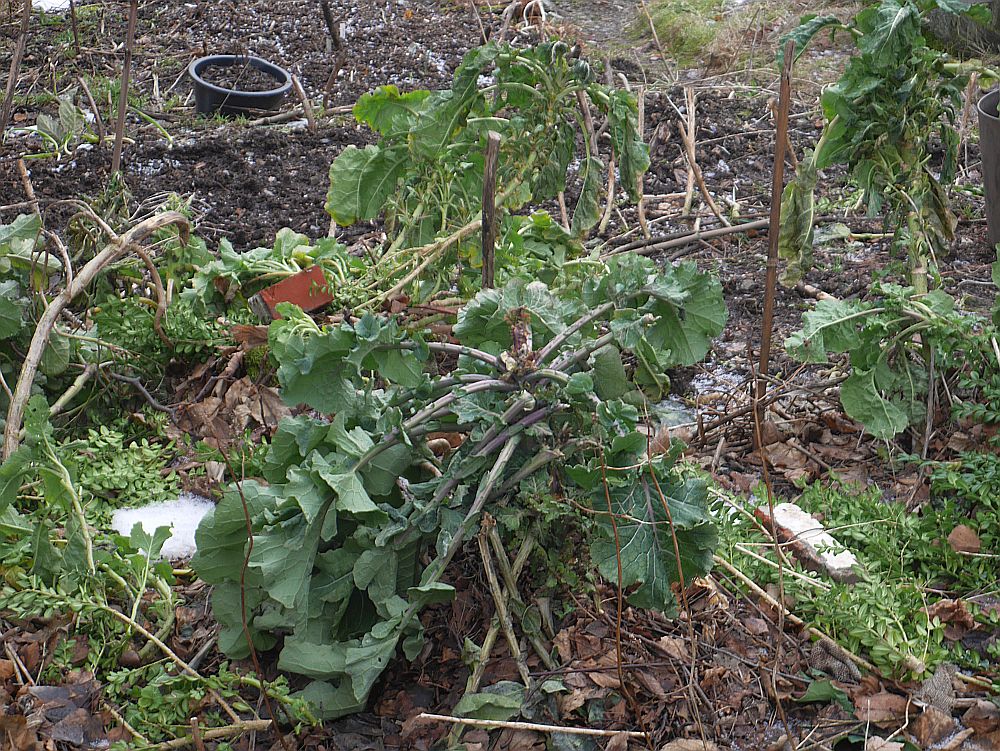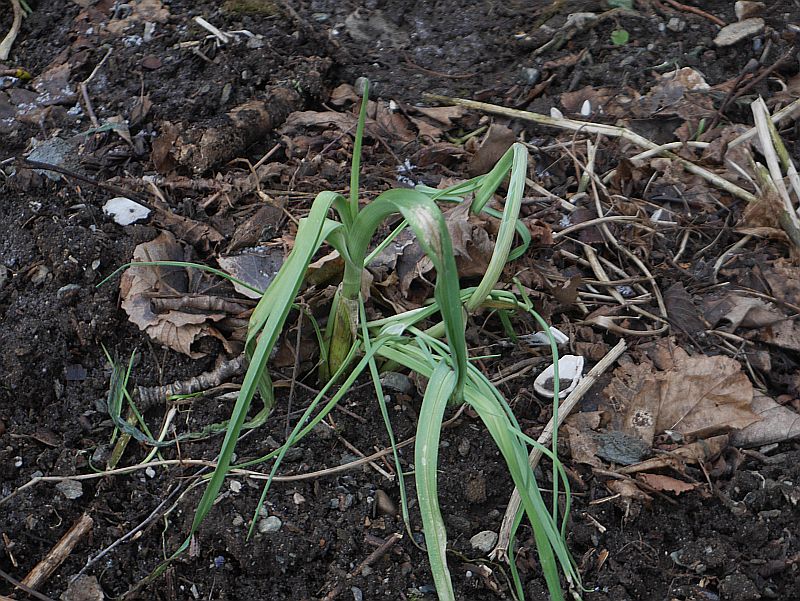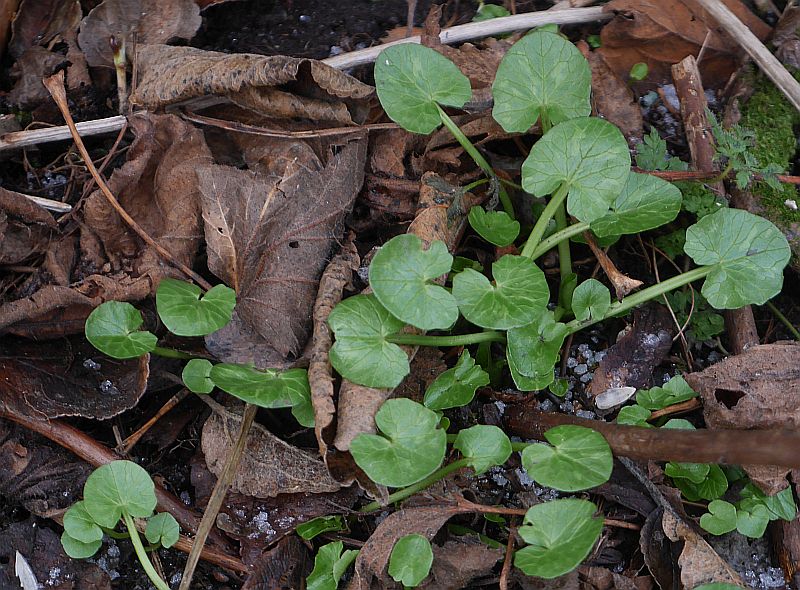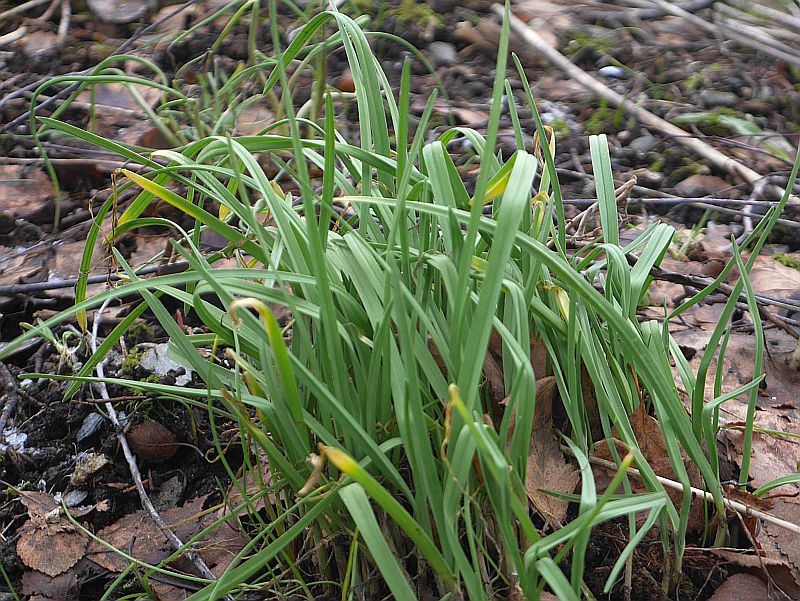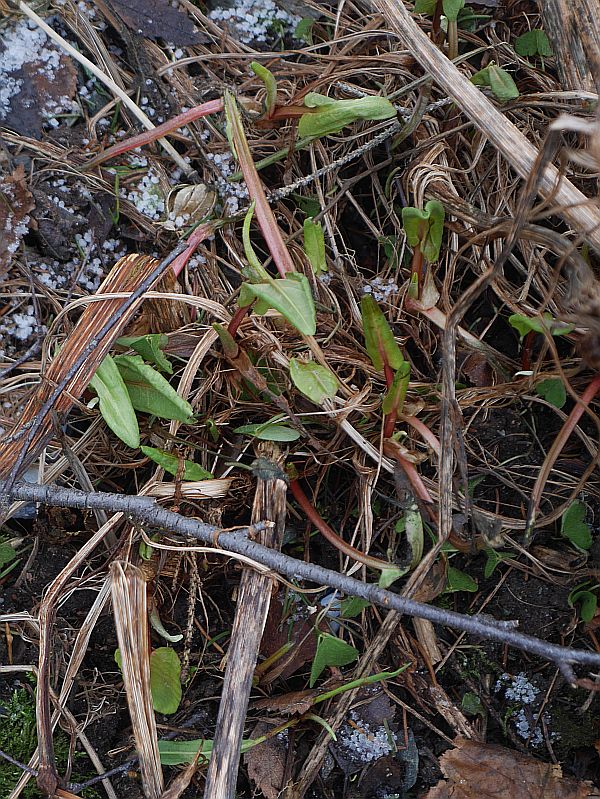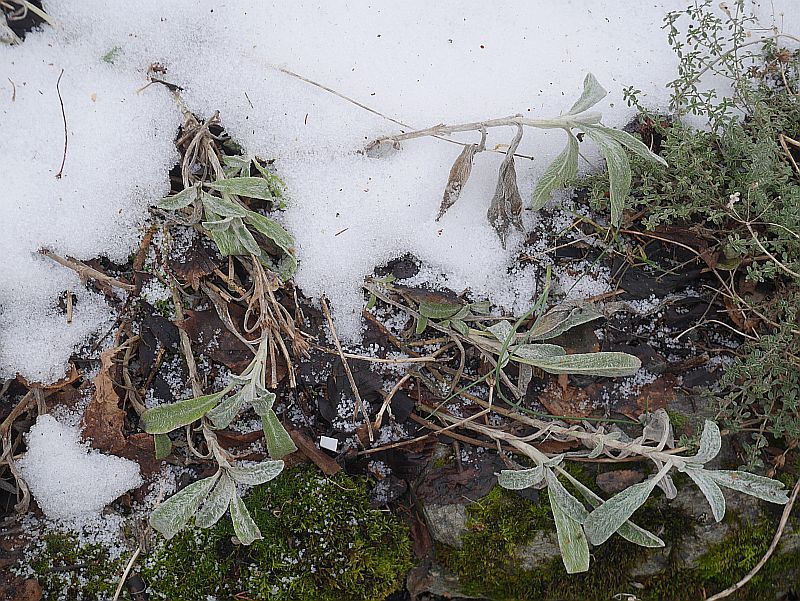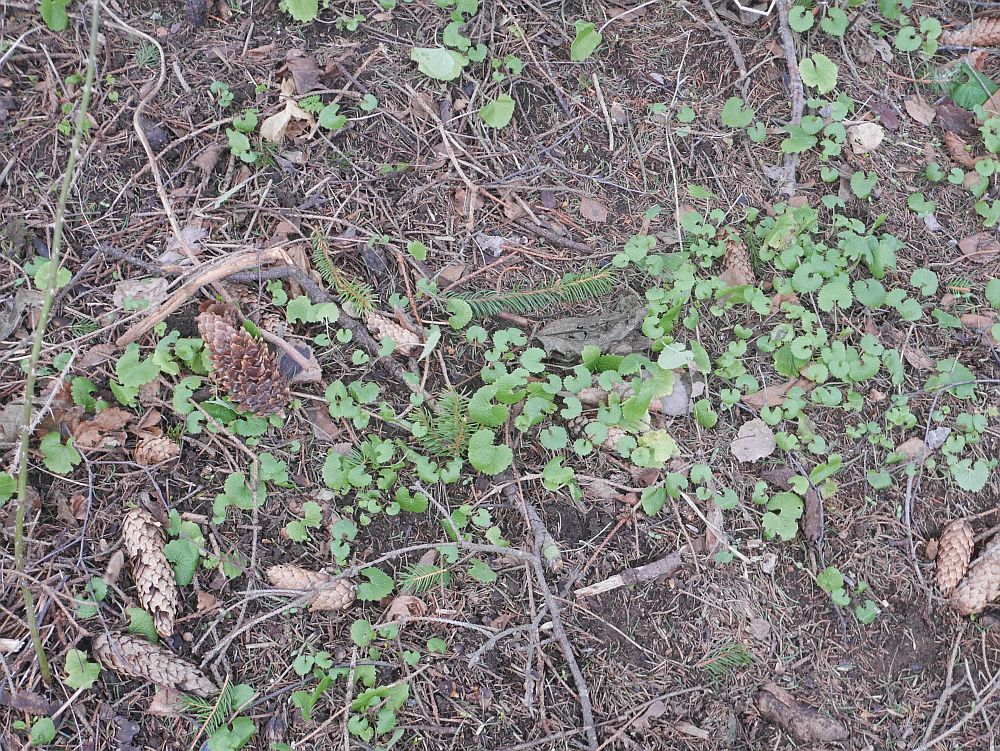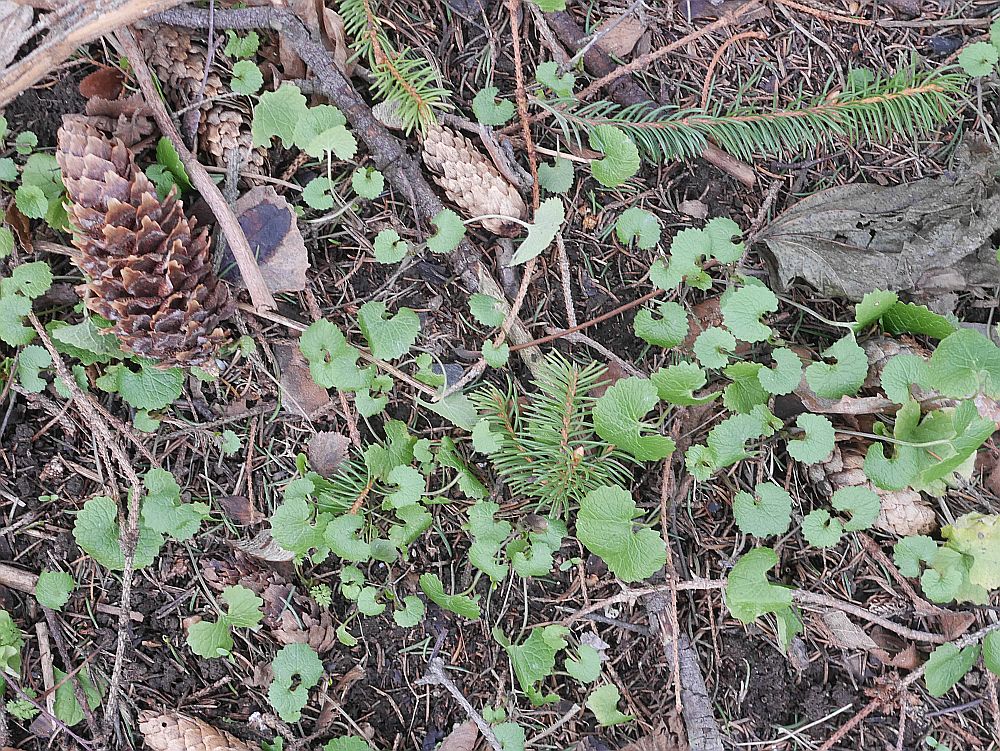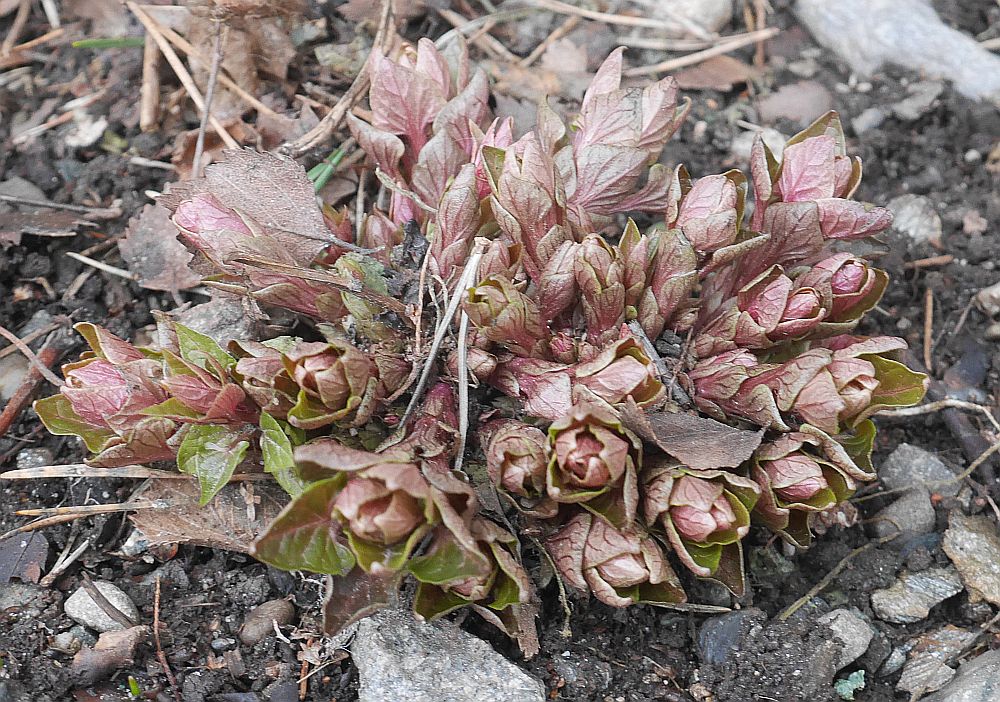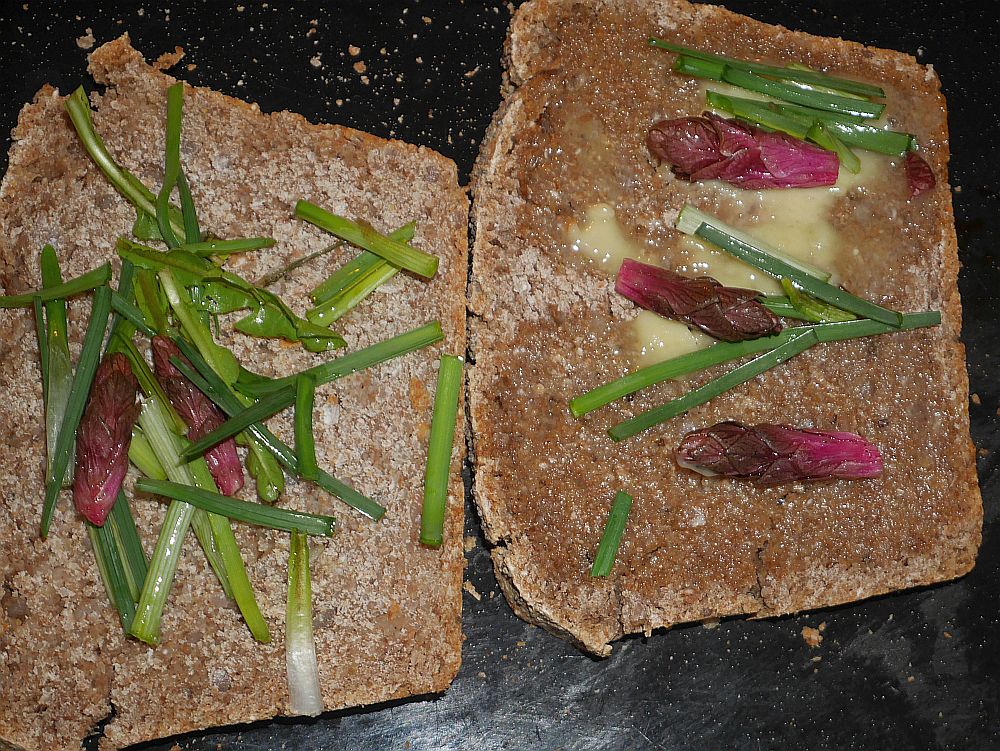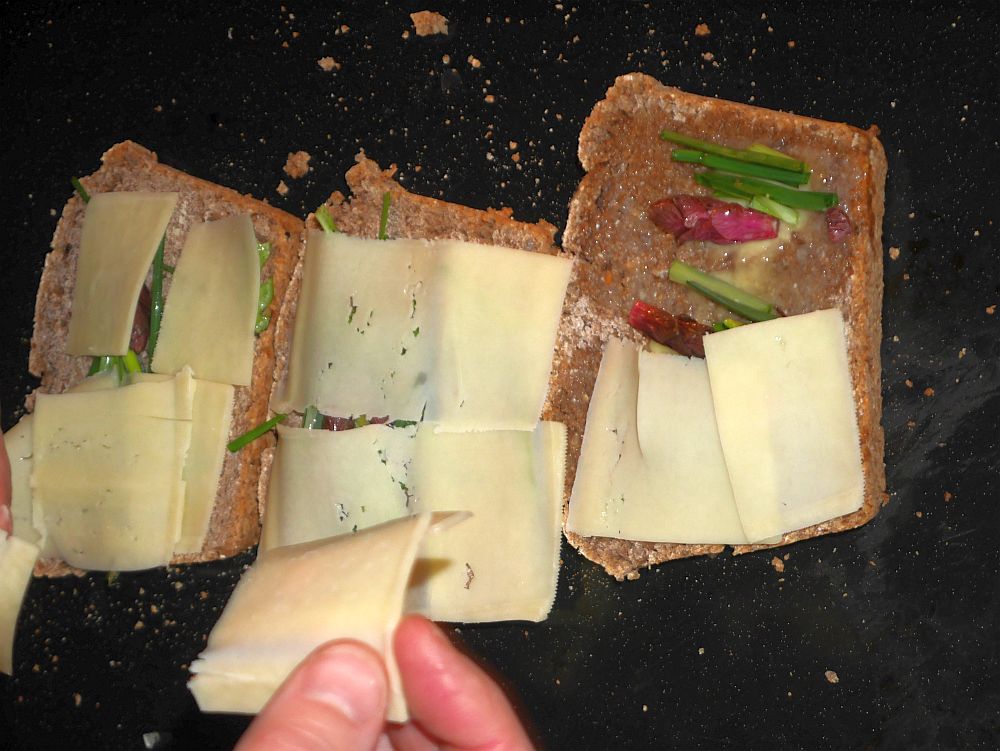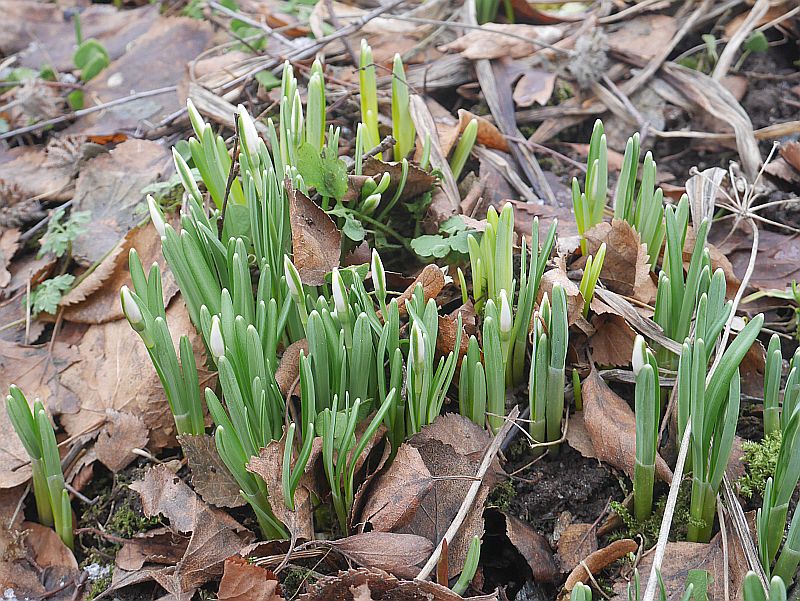Today at the Ringve Botanical Gardens I found the Allium garden was full of little workers eating the masses of birch seeds that had fallen during the winter….saving me a lot of work later. The first summer, there were thousands of birch seedlings in the garden…
Category Archives: Onions
Atropurpureum and Validum
Allium validum (Pacific onion), an important wild edible for native americans and one of the 80 plants in my book Around the world in 80 plants is back in flower again for the first time for a few years. It had been in a pot whilst I redid my overgrown pond and boggy area.
Sonchus and Basil Pesto
I made a sow thistle basil pesto last night together with basil grown in my office at the botanical gardens! I’m an office basil grower of over 40 years, having started when I was a student in 1978 (see http://www.edimentals.com/blog/?p=5221, where I made pesto and Allium wallichii, the Sherpa or Nepal onion)
Last night I used garlic and more Johannes’ shallots (Allium x cornutum; see http://www.edimentals.com/blog/?p=22601)
Johannes’ Shallot
There is a special perennial onion which was traditionally harvested on this day in the Netherlands, which I believe to have a much large potential than its current status as a local food crop, as it is so much easier to grow, in particular in areas increasingly suffering from summer droughts and water shortages, along with many other perennial vegetables. If nothing else, it complements shallots and onions in that it is available much earlier in the year!
On a visit to the Utrecht Botanical Gardens in the Netherlands some years ago, I’d photographed an onion called Sint-Jansui and given the botanical name Allium fistulosum var. proliferum.

Botanist Gerard van Buiten at Utrecht later wrote to me “Ah, I see you have found our “St Jansuien! Yes, it is an old local variety, grown around Utrecht. One of our gardeners used to grow it on his nursery a long time ago. Every year on “St. Jansdag”, a box of onions was delivered at Paleis Soestdijk, where Queen Juliana and Prince Bernhard used to live. It is grown nowadays in some urban garden projects in the city”.
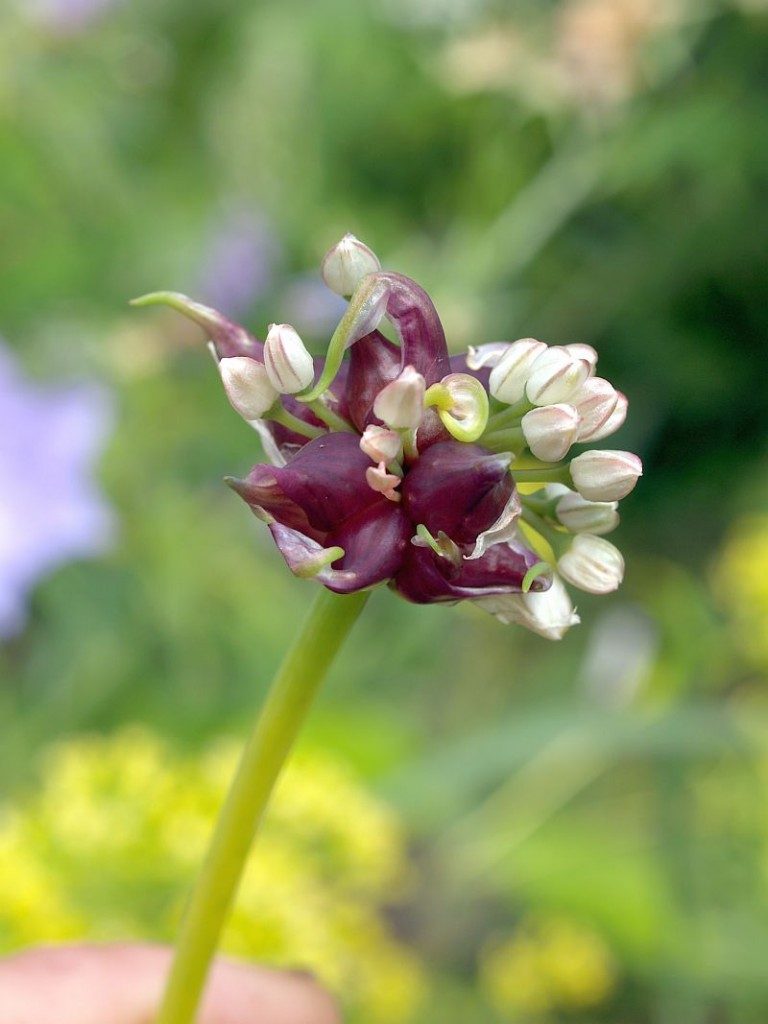
It turns out that this onion is not related to Allium fistulosum and is classified as a triploid hybrid onion Allium x cornutum which has been found both in Europe (Netherlands, France and Croatia) as well as India from where, it is speculated it may have originated. Like Egyptian onion / walking onion (Allium x proliferum), it is sterile and produces bulbils in its inflorescence. I’ve only experienced flowering of this once in 10 years of growing A x cornutum (see below). 10 years ago, Dr. Reinhard Fritsch had sent me 3 accessions from the German gene bank IPK Gatersleben, but only one of these has proven hardy here, although the French accession survived a few years. The other was from India and died the first winter.
In 2014, an open access paper appeared in the BMC Plant Biology journal (see https://bmcplantbiol.biomedcentral.com/articles/10.1186/1471-2229-14-24). This study combined molecular, phylogenetic and cytogenetic data and provided evidence for a unique triparental origin A. × cornutum with three putative parental species, A. cepa, A. pskemense, and A. roylei. Hardiness is probably bestowed by Allium pskemense which has been growing in the Ringve Botanical Gardens in Trondheim for many years.
I had planted the Croatian accession in the new Allium garden at the botanical gardens in Trondheim a couple of years ago and I started harvesting it the other day as it starts to die back at this time of year and looks untidy:
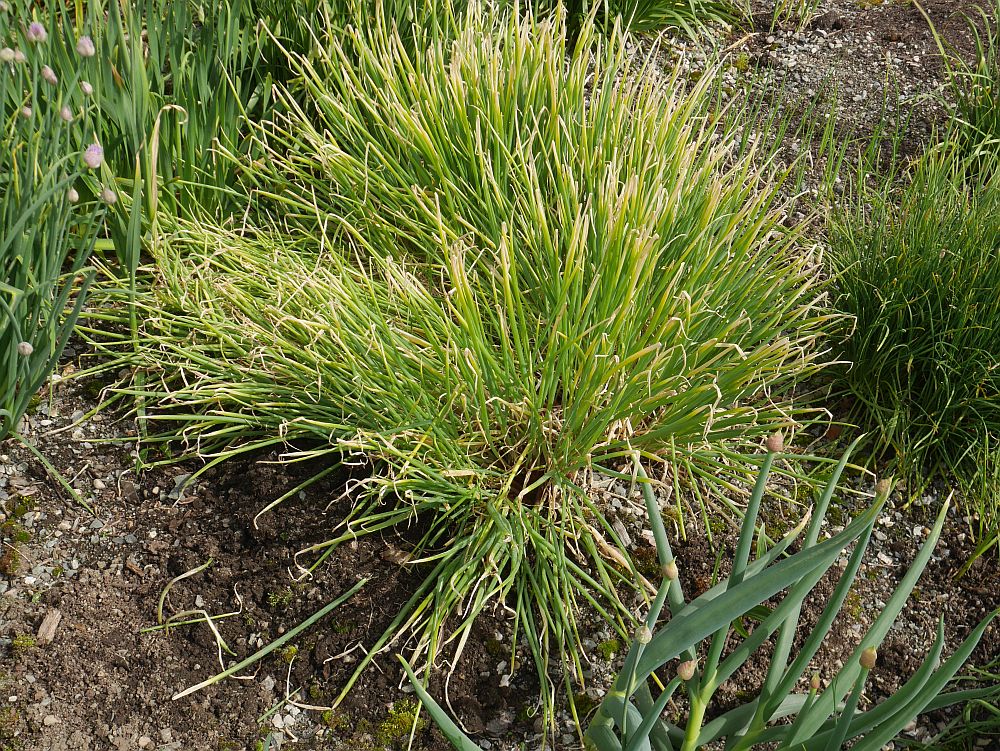
In this little patch, there were an enormous amount of onions, admittedly a bit on the small size, but relatively easy to peel and far outyielding shallots here! I will now harvest these and replant to see how well these yield after one year of growth (I am unsure as to exactly when these were planted, but this may be two years of growth).
I decided to use a small part of this harvest in making bhajis (see http://www.edimentals.com/blog/?p=21561)…and they were delicious!
In Croatia, Puizina, 2013 says: “The term ‘shallot’ in Croatia denotes three genetically and morphologically different, vegetatively reproduced relatives of the common onion, Allium cepa, which are mainly traditionally cultivated for consumption and as a spice: A. cepa Aggregatum group, A. × proliferum and A. × cornutum”. Further, the triploid shallot is “traditionally cultivated in South and coastal Croatia under the name ‘Ljutika’ and it is very popular as a spice and condiment due to its tasty bulbs and leaves”….and “In contrast to most flowering species of Allium in which the leaves are already dying back at flowering time, triploid shallots are perennials, their leaves remain green and suitable for use during entire year”. Ban (2019) shows morphological comparisons of all three types of “shallot” and demonstrates that there are different forms of Allium x cornutum in cultivation, differing in leaf cross-section, bulb shape and leaf waxiness. Bulbs are traditionally preserved in vinegar (Puizina, 2013) as they are difficult to store, resprouting after harvest. It is also stated that A. x cornutum is tolerant of drought and poor soil, enabling it to persist in wild habitats. In fact my own accession of the Croatian shallot originates from such a habitat:
Plant passport data from IPK Gatersleben: “SOURCE – Croatia: Jugoslawien 1985 Dr Hanelt Nr. YUGHAN-85: 5, weedy: Tal zwischen Male Grablje und Milna, offengelassene Olivenpflanzung” (valley between Male Grabje and Milna, open olive plantation). This area has a very different climate than Trondheim, indicating that this is also a very adaptable onion.
The real St. Jansuien shallot from the Netherlands has now also been planted in the onion garden in Trondheim.
I will be making Johannes’ shallots (Sankthans-sjalott) available to members of Norwegian Seed Savers (KVANN) through our autumn catalogue (membership can be had by signing up here: https://kvann.no/bli-medlem . My grandson will also get a packet of onions for his birthday (but, don’t tell him yet…I want it to be a surprise ;) )
References
Ban, S.J., 2019. Samples included in DNA analysis. SafeAlliDiv meeting, Olumuc, April 2019 (Symposium presentation).
Puizina, J., 2013. Shallots in Croatia – genetics, morphology and nomenclature. Acta Bot. Croat. 72 (2), 387–398.
Oslo Allium Raid
12th June: Added pictures of a few more edibles!
The Allium garden at Ringve
The Allium garden at the Ringve Botanical Garden (Chicago) in Trondheim contains a collection of old Norwegian onions used for food from all over Norway including Allium fistulosum (Welsh onion), A. x proliferum (Egyptian and Catawissa onions), A. oleraceum, A. vineale, A. ursinum, A. scorodoprasum and A.victorialis (the last four are wild or naturalised species that have been moved into gardens in the past for food and, in the case of ursinum and victorialis are currently being domesticated in a big way!
In addition, a collection of wild species and ornamental cultivars have been planted to demonstrate the diversity of the Allium family!
I’ll be adding pictures to the album below on a regular basis.
See more pictures on my FB album here: https://tinyurl.com/y489yldy
Norsk:
Allium hagen ved Ringve Botaniske Hagen (NTNU) i Trondheim inneholder en samling av gamle norske matløk samlet fra hele Norge i perioden 2008-2019. Dette inkluderte Allium fistulosum (pipeløk), A. x proliferum (luftløk), A. oleraceum, A. vineale, A. ursinum, A. scorodoprasum og A.victorialis (de fem siste er vill- eller naturaliserte arter som har blitt flyttet til hager som matplante før i tiden, og dette er fortsatt gjort når det gjelder ursinum (ramsløk) og victorialis (seiersløk) i økende grad!
I tillegg kan man her se en samling av ville arter og pryvarianter plantet for å demonstrere mangfoldet av Allium-slekten!
Hagen er støttet finansielt av Landbruksdirektoratet, og Genressurssenteret.
3 videos of Painted Ladies (Tistelsommerfugl) on Allium schoenoprasum on 11th June 2017
300719:
160819: Allium cernuum x stellatum?
160819: Allium wallichi
Allium atrosanguineum is back
Snow bell flowers




